The Discovery Nature Trail at Disney Lookout Cay at Lighthouse Point offers guest an option to explore the wondrous wildlife, flora, geography, and cultural elements that make Eleuthera unique. The trail is available to explore on your own for free. You can find more details in the Disney Cruise Navigator app which does lit the hours, but in our experience, the time were simply the port times for our visit.
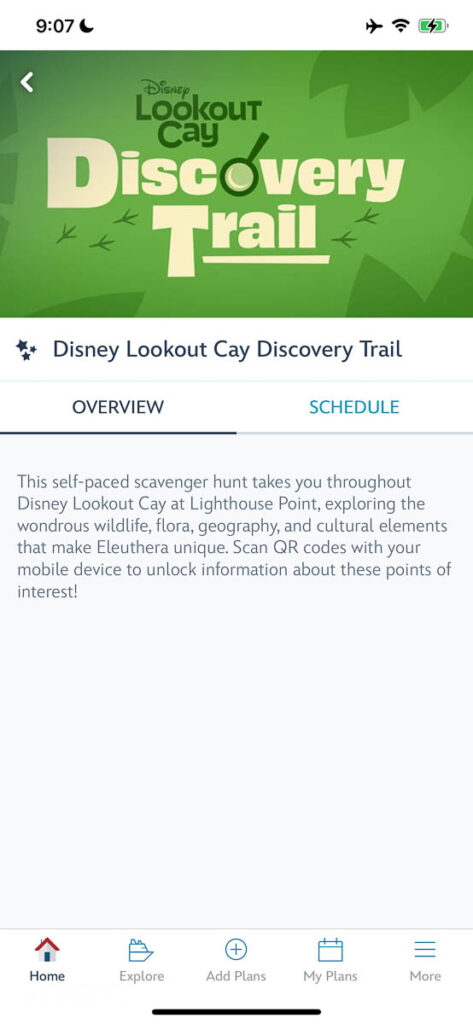
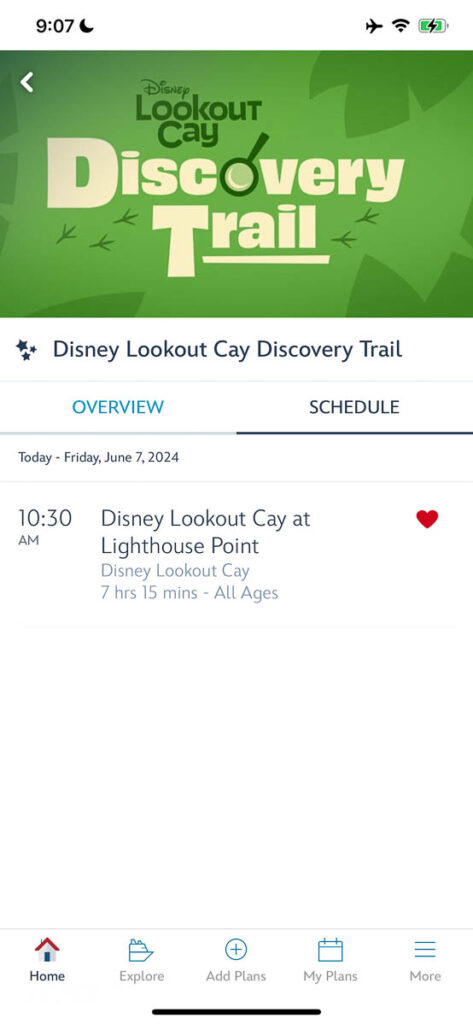
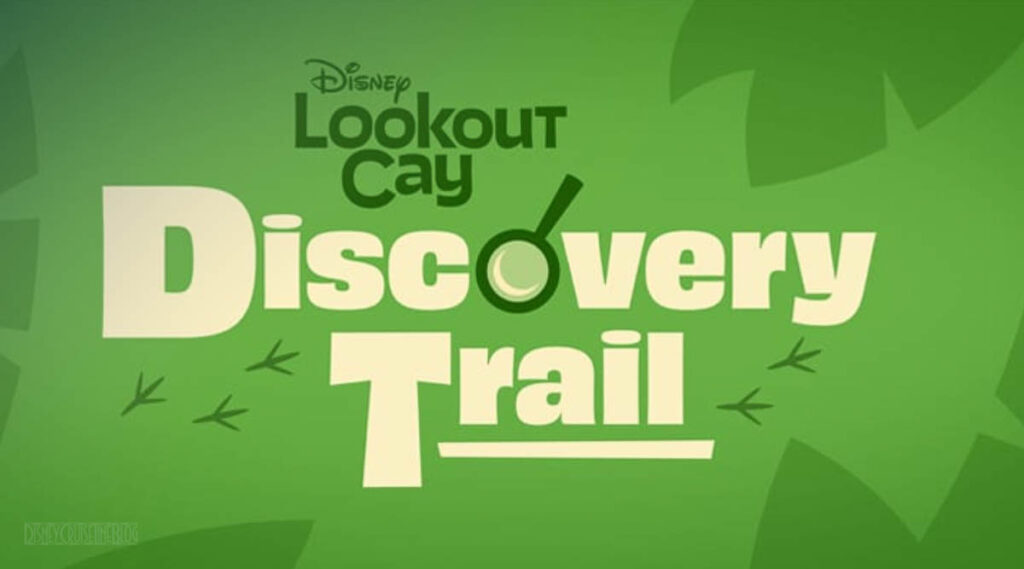
The Discovery Trail highlighted wildlife such as the Curly-Tailed Lizard, Great Lizard-Cuckoo, Land Crab, Money Bat Moth, and the Queen Conch. Flora around Lookout Cay included Lignum Vitae Tree, Wild Sage, Sea Grape Tree, Horse Flesh Mahogany Tree, and the Wild Sapodilla Tree. Geographical features include the coral reef, salt ponds, limestone cliffs, the beach, and the lighthouse. Finally, the Discover Trail includes information on the arts and culture found across the property by local artisans Dorman Stubbs, Kishan Monroe, Imogene Walking, Philip and Michelle Kemp, and Antoious Roberts.

Disney Lookout Cay at Lighthouse Point Nature Trail Map
Looking at the Disney Lookout Cay at Lighthouse Point directory map, you can see the nature trail highlighted in yellow in the bottom right corner of the graphic leading out to the southern most point in Eleuthera.
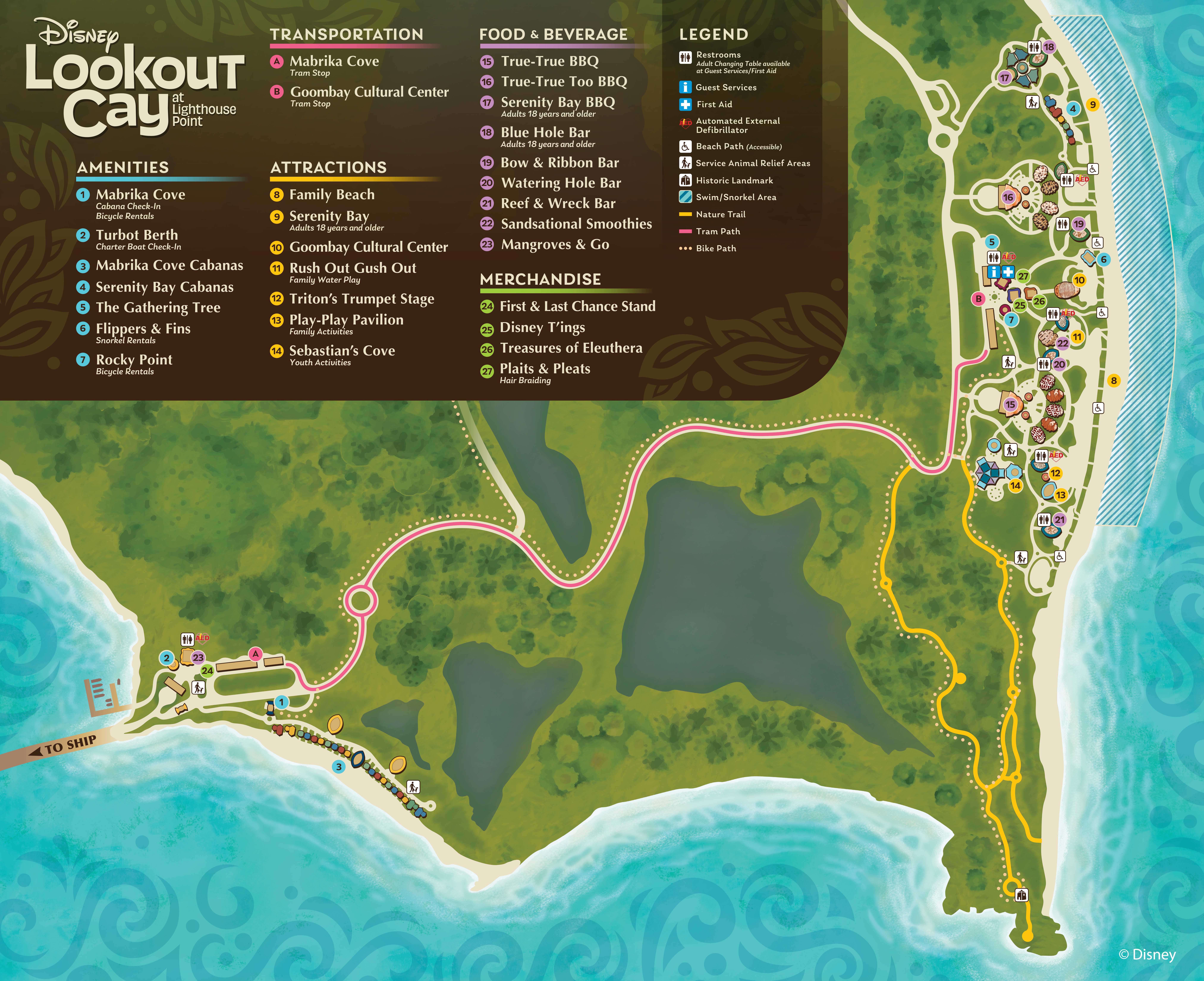
To make things a little easier to follow, I am including the following version of the map to better illustrate the layout of the Discovery Nature Trail along with labels for the lighthouse, limestone cliffs, and the beach access point from the trail. There isn’t really a “starting point” as there are multiple points of entry depending on which way you want to explore or what you specially wish to see.

Mabrika! When you first arrive and making your way over to the Mabrika Cove tram stop, you pass by a rock with a few friends welcoming you to Lighthouse Point. These little friends represent a number of the points of interest along the Discovery Nature Trail.
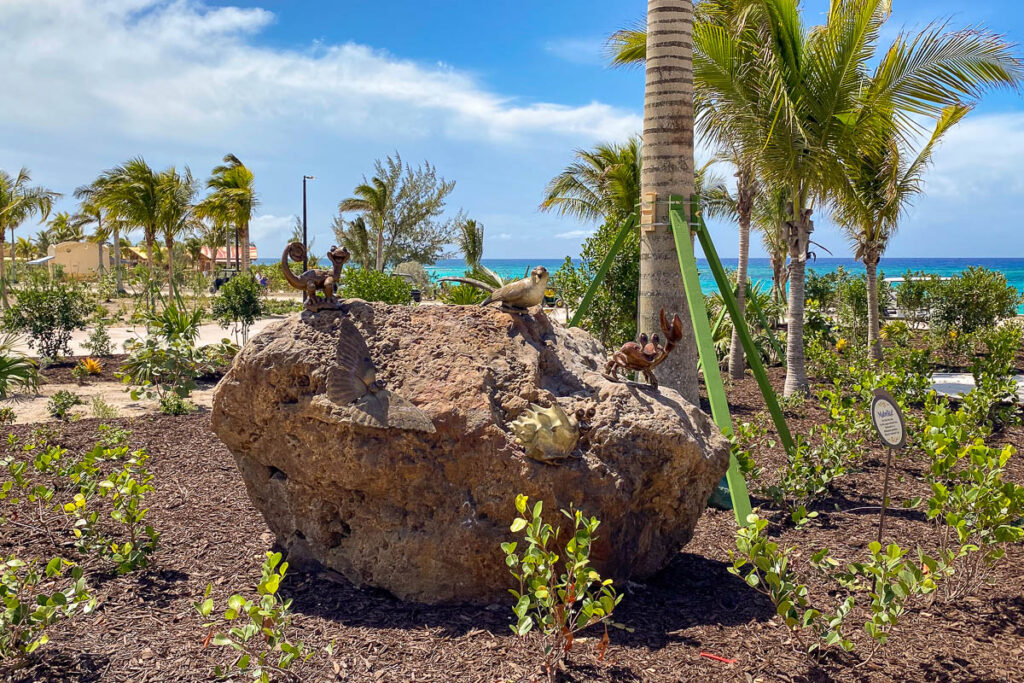
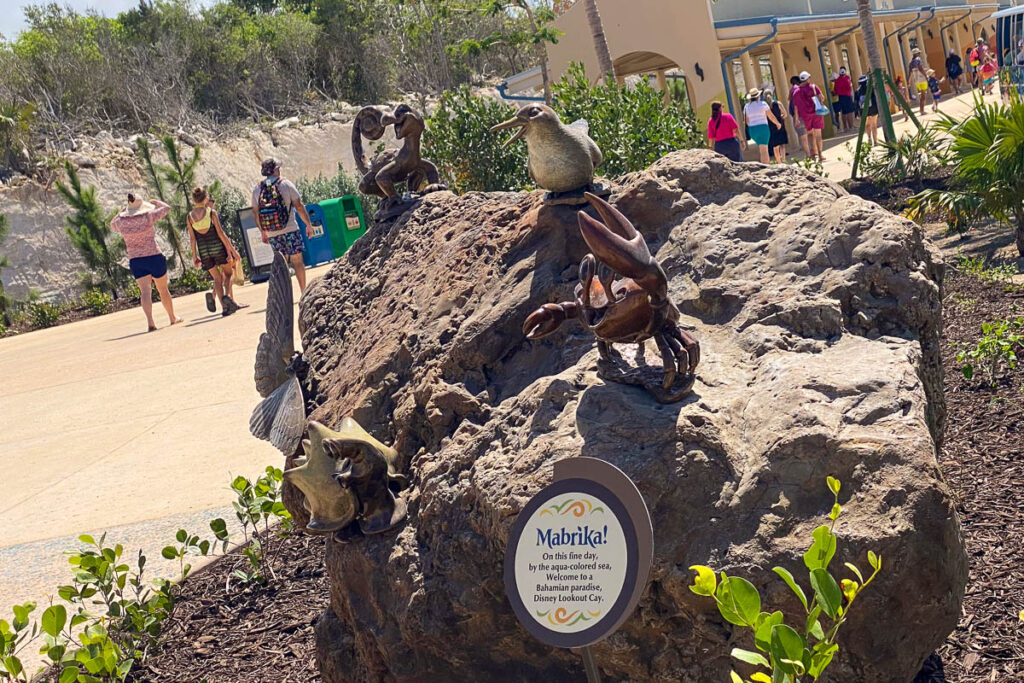
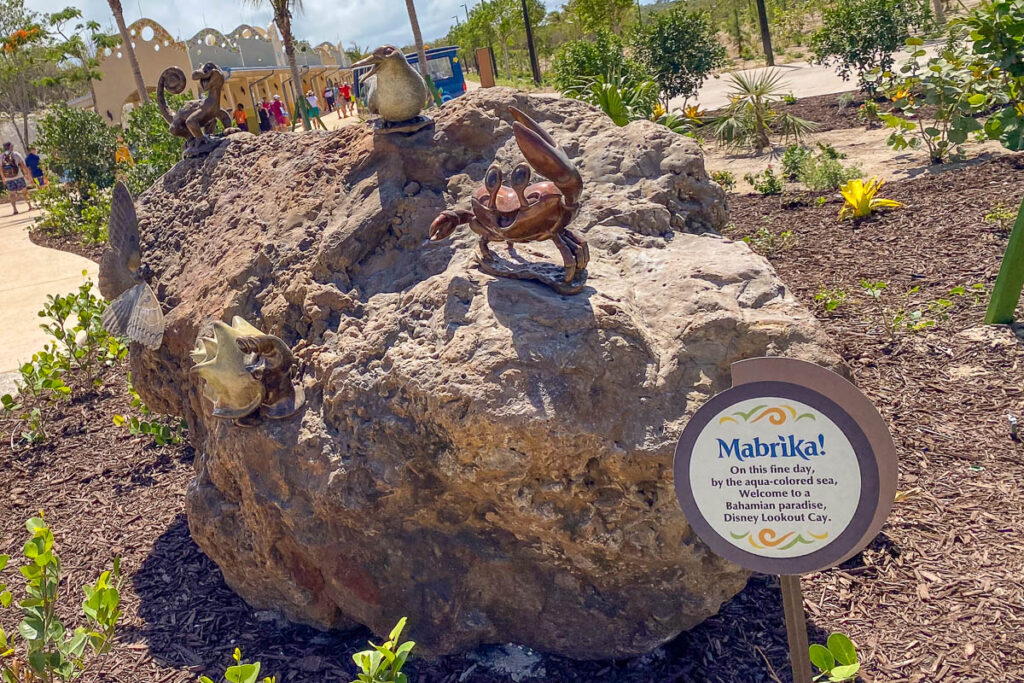
We started our trek on the nature trail from a pathway in the area of Sebastian’s Cove and Reef & Wreck Bar. I highly recommend bringing a filled water bottle and applying sunscreen before exploring the nature trail. A hat would also be of great benefit during the walk as well.

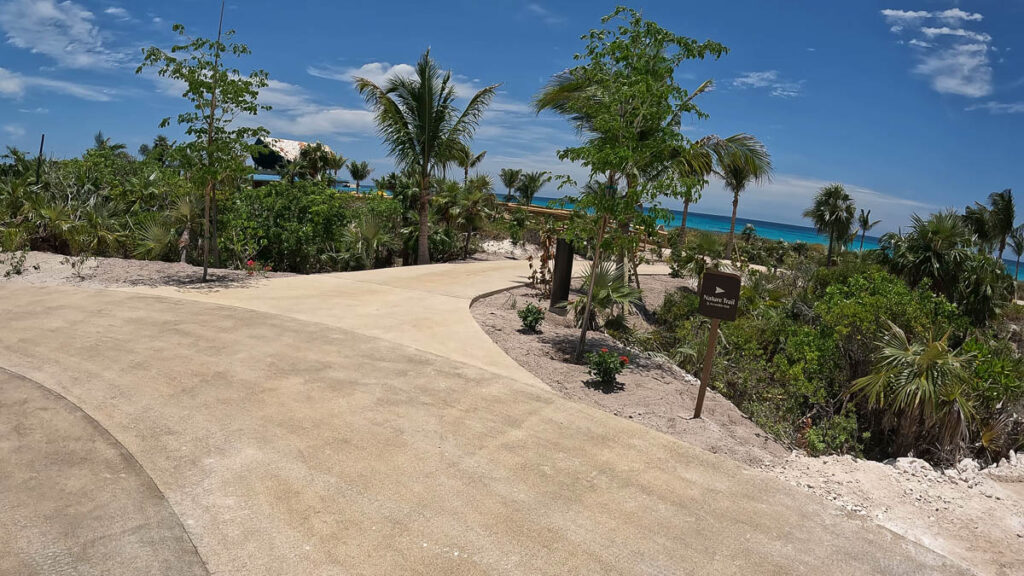
The trails at Disney Lookout Cay at Lighthouse Point are new and still need additional time to cure. From what I’ve been told, Disney expects the trails to be ready for bicycles later this summer. For now, you can explore the nature trail on foot. Once the trail is deemed cured and safe for biking, guests will be able to take the rental bikes on the Nature Trail all the way to the lighthouse, which is technically a historic light station.

I mentioned taking something for water; if you don’t or if you consume your provisions, there are water stations placed in various spots on the Nature Trail.

Discovery Nature Trail Wildlife “Characters”
Remember those little characters from the rock in Mabrika Cove? Well, they are featured along the Nature Trail as characters representing some of Eleuthera’s fauna. Keep an eye out for signs along the way. Some signs include detailed information for the animals features, while others will just be a sign on a pole. However, both types of signs will include a QR code which will offer some additional information via the Disney Cruise Navigator app.
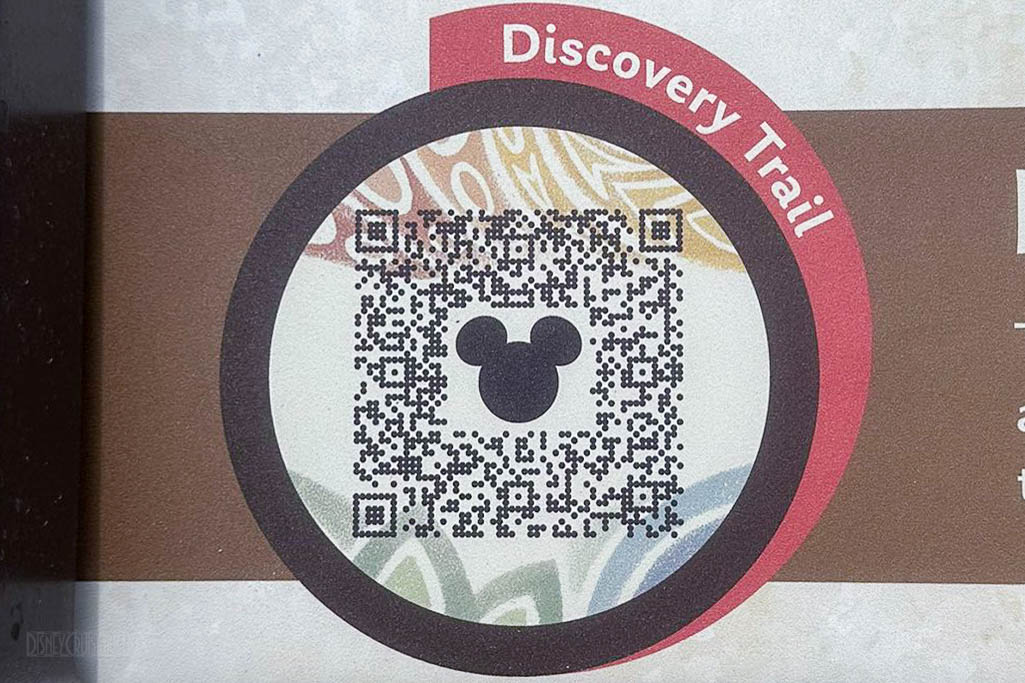
Land Crab
The land crabs may not live under the sea, but they still have gills! Land crabs use their gills to breathe when they return to the ocean to breed.
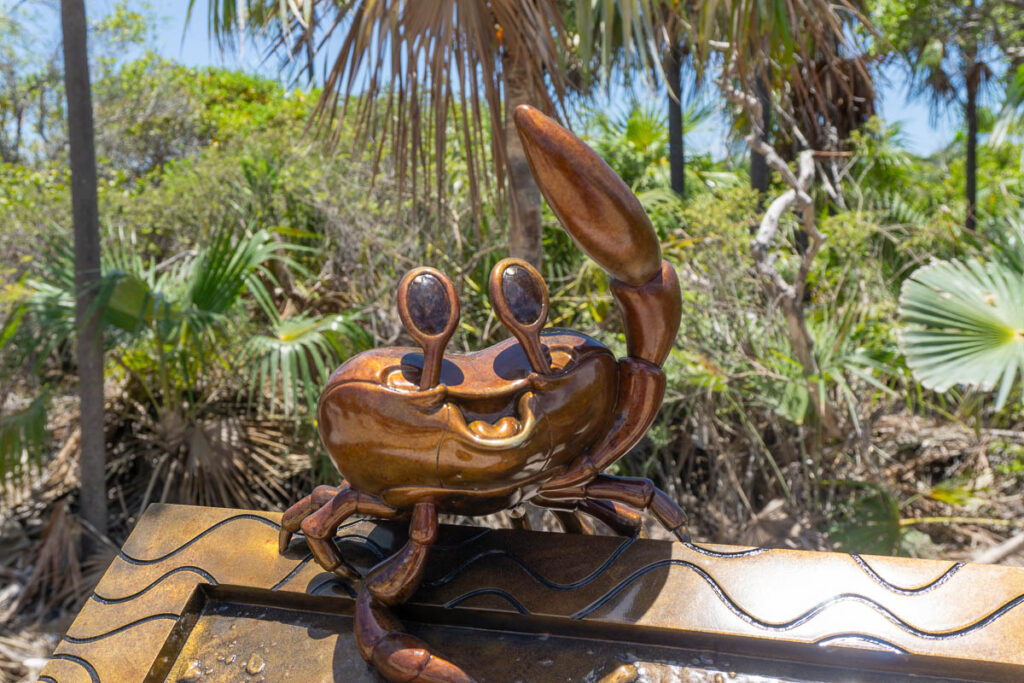
They like to stay moist, so when it gets too dry out, they’ll burrow underground where it’s nice and damp. You’re most likely to find a land crab scuttling around after a rainstorm, using their claws to snatch up meals of small prey and leaf litter.
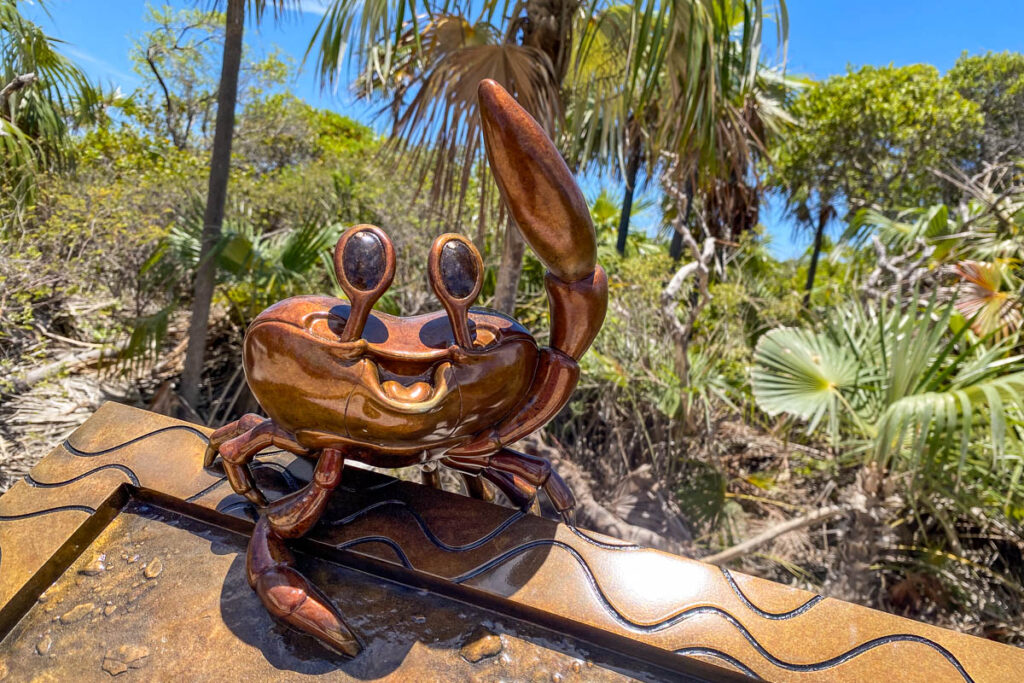
Male land crabs have one claw that’s larger than the other, which they use to fight off intruders to their territory. Land crabs usually live alone. However, when it’s time to migrate, they travel in groups so large that their many tiny legs make a noisy clacking sound.
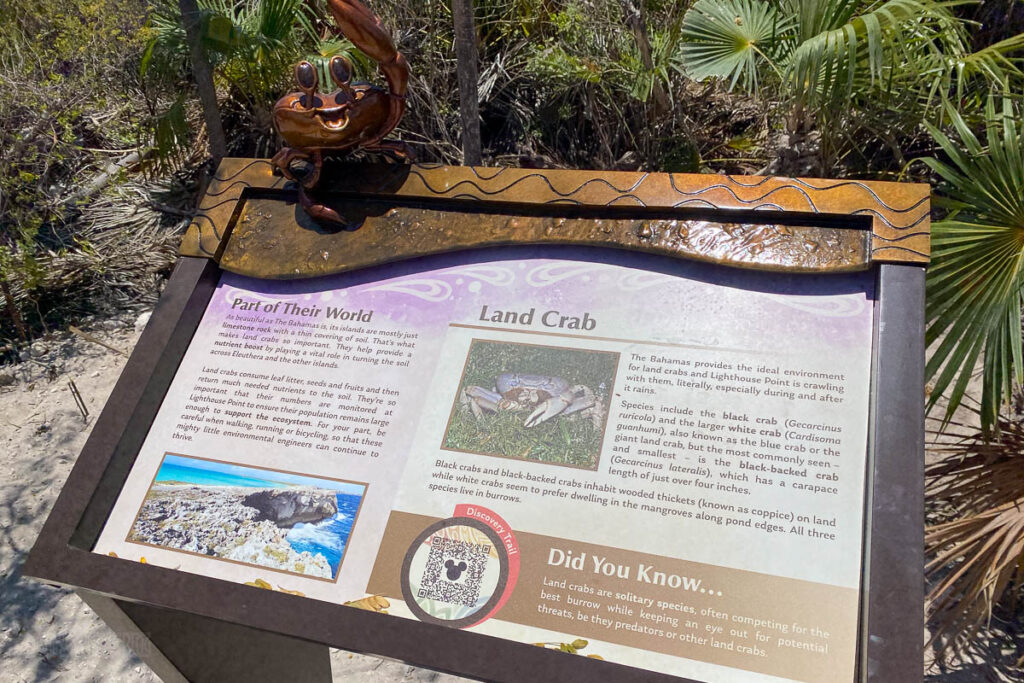
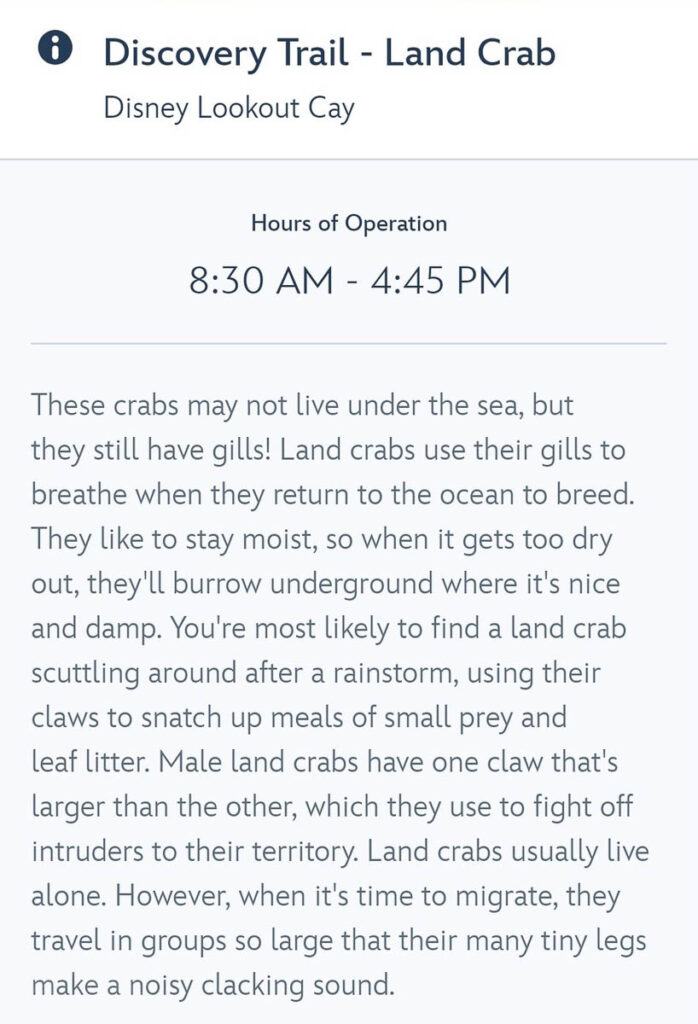
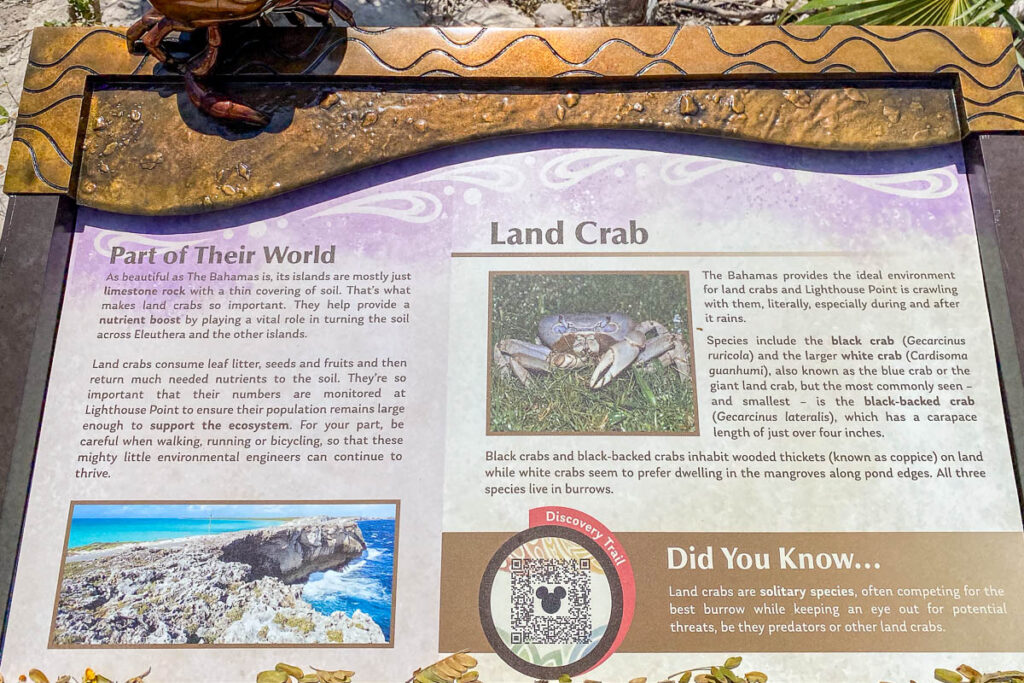
Land Crab
The Bahamas provides the ideal environment for land crabs and Lighthouse Point is crawling with them, literally, especially during and after it rains.
Species include the black crab (Gecarcinus ruricola) and the larger white crab (Cardisoma guanhumi), also known as the blue crab or the giant land crab, but the most commonly seen – and smallest – is the black-backed crab (Gecarcinus lateralis), which has a carapace length of just over four inches.
Black crabs and black-backed crabs inhabit wooded thickets (known as coppice) on land while white crabs seem to prefer dwelling in the mangroves along pond edges. All three species live in burrows.
Part of Their World
As beautiful as The Bahamas is, its islands are mostly just limestone rock with a thin covering of soil. That’s what makes land crabs so important. They help provide a nutrient boost by playing a vital role in turning the soil across Eleuthera and the other islands.
Land crabs consume leaf litter, seeds and fruits and then return much needed nutrients to the soil. They’re so important that their numbers are monitored at Lighthouse Point to ensure their population remains large enough to support the ecosystem. For your part, be careful when walking, running or bicycling, so that these mighty little environmental engineers can continue to thrive.
Did You Know
Land crabs are solitary species, often competing for the best burrow while keeping an eye out for potential threats, be they predators or other land crabs.
Money Bat Moth
In the middle of the night, people often mistake these massive moths for bats! Their wingspan is up to 7 inches (17 cm) – about as long as a wooden pencil, or two crayons placed end-to-end. Despite their ominous size, there’s no need to fear.
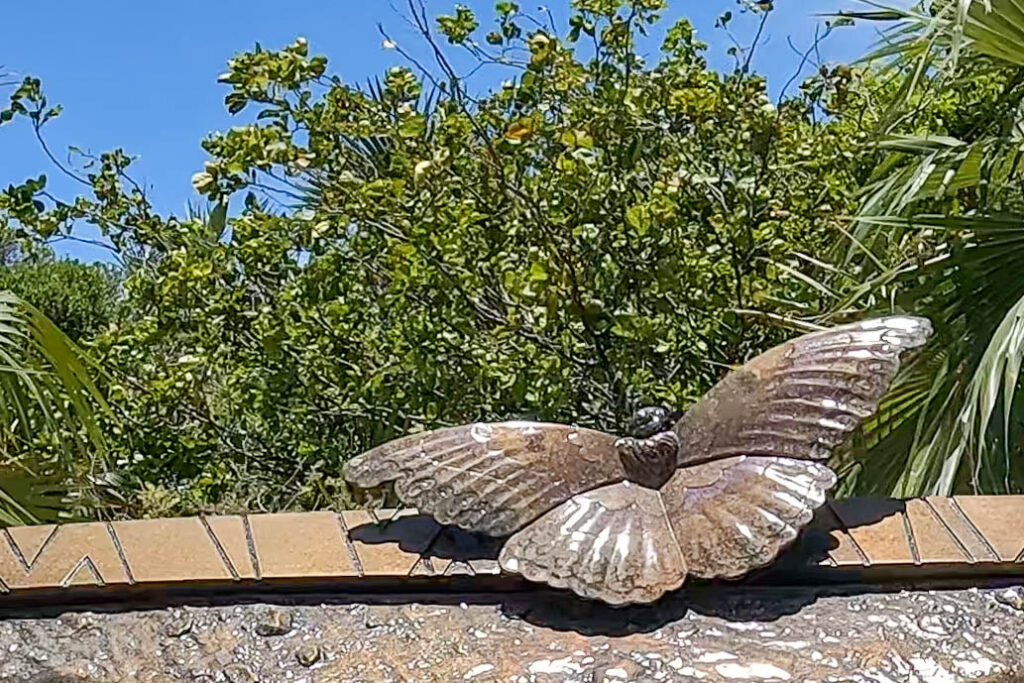
In The Bahamas, these moths are seen as a sign of good luck. If one lands on you, it’s said that you will soon come into money. Money bat moths use their large wings to travel great distances as the species migrates every year. Scientists have spotted money bat moths as far south as Brazil, as far north as the United States and Canada, and even flying across the Gulf of Mexico – over open ocean.
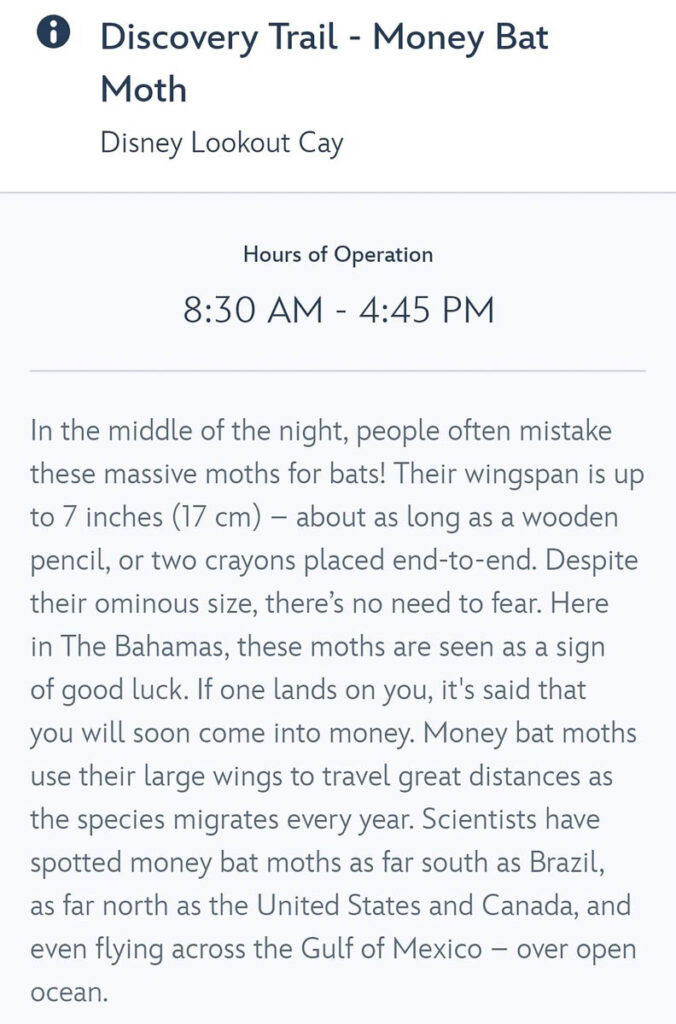
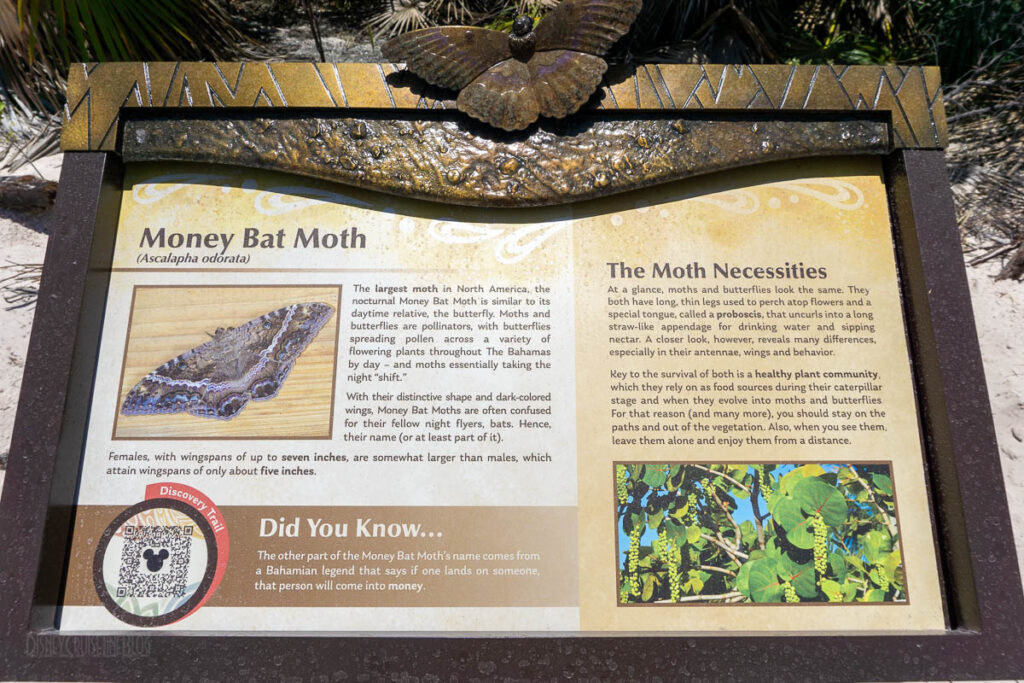
Money Bat Moth (Ascalapha odorata)
The largest moth in North America, the nocturnal Money Bat Moth is similar to its daytime relative, the butterfly. Moths and butterflies are pollinators, with butterflies spreading pollen across a variety of flowering plants throughout The Bahamas by day – and moths essentially taking the night “shift.”
With their distinctive shape and dark-colored wings, Money Bat Moths are often confused for their fellow night flyers, bats. Hence, their name (or at least port of it).
Females, with wingspans of up to seven inches, are somewhat larger than males, which attain wingspans of only about five inches.
The Moth Necessities
At a glance, moths and butterflies look the same. They both have long, thin legs used to perch atop flowers and a special tongue, called a proboscis, that uncurls into a long straw-like appendage for drinking water and sipping nectar. A closer look, however, reveals many differences, especially in their antennae, wings and behavior.
Key to the survival of both is a healthy plant community. which they rely on as food sources during their caterpillar stage and when they evolve into moths and butterflies For that reason (and many more), you should stay on the paths and out of the vegetation. Also, when you see them, leave them alone and enjoy them from a distance.
Did You Know…
The other part of the Money Bat Moth’s name comes from a Bahamian legend that says if one lands on someone, that person will come into money.
Curly-Tailed Lizard
While other reptiles at Disney Lookout Cay at Lighthouse Point use camouflage to avoid predators, curly-tailed lizards are not afraid to stand out! This ground-dwelling lizard holds its tail curled over its back, using it in territorial displays to warn away intruders and in courtship displays to attract a mate.
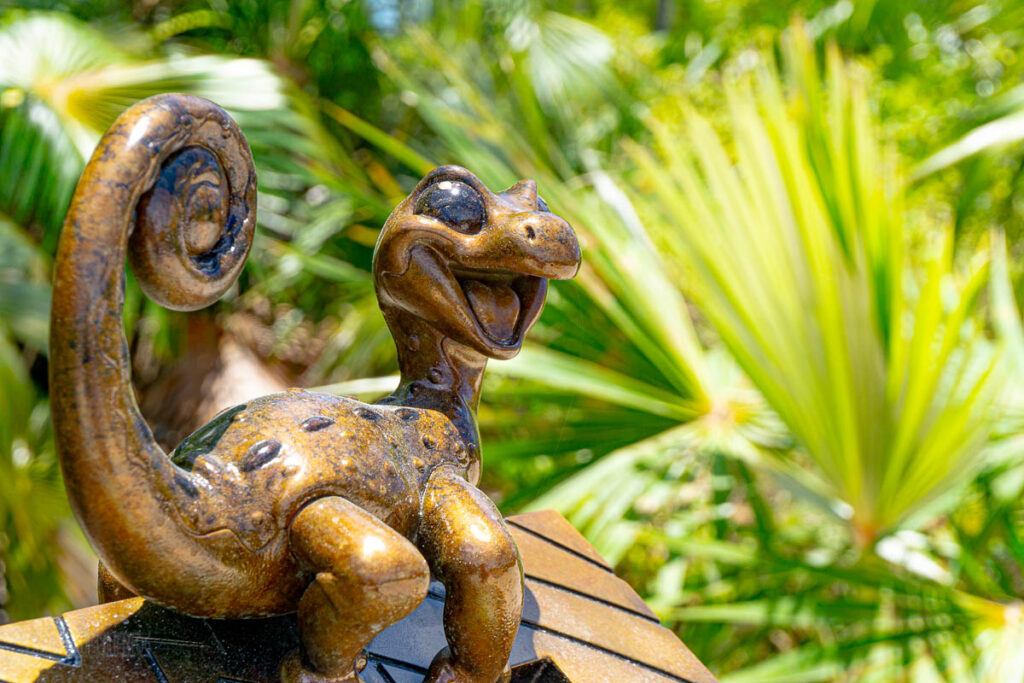
Also, by holding its tail so high, this lizard plays a trick on predators. A larger animal hunting this lizard wants to attack its head, but it might grab the curled-up tail by mistake. Then the lizard completes its trick – the tail detaches, and the now-tree lizard makes a run for it, leaving the predator with nothing but its wiggly tail. Don’t worry; the lizard’s tail will grow back.
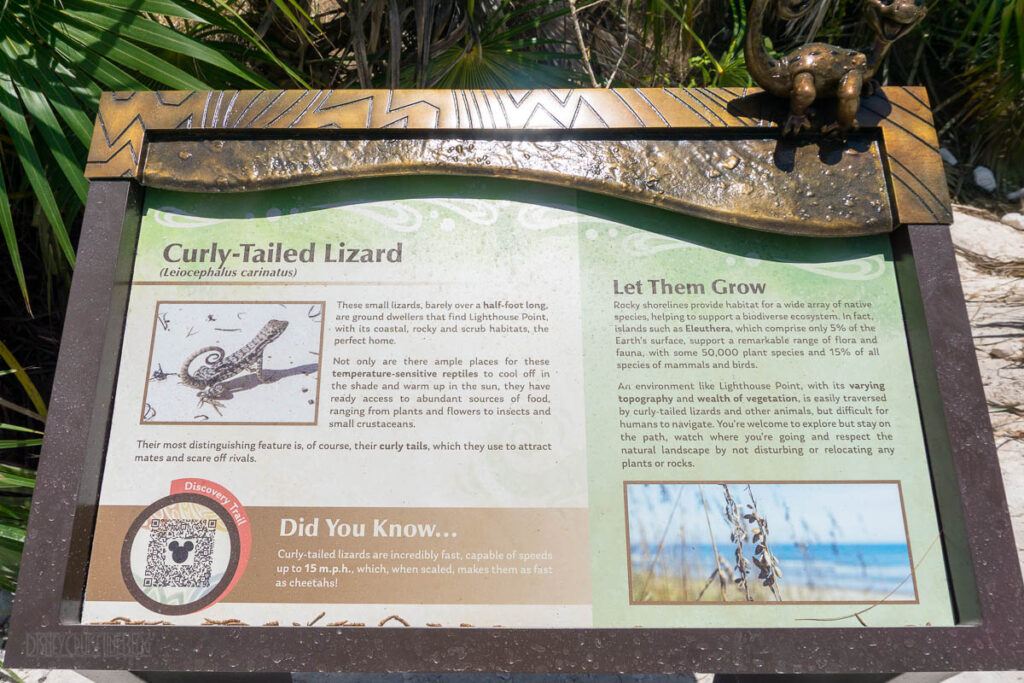
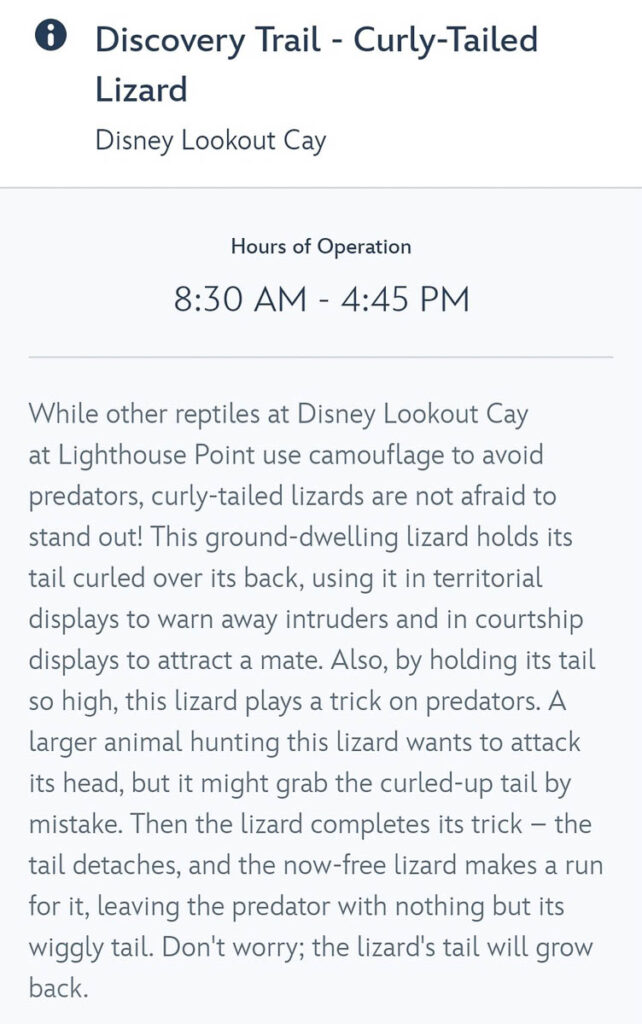
Curly-Tailed Lizard (Leiocephalus carinatus)
These small lizards, barely over a half-foot long. are ground dwellers that find Lighthouse Point, with its coastal, rocky and scrub habitats, the perfect home.
Not only are there ample places for these temperature-sensitive reptiles to cool off in the shade and warm up in the sun, they have ready access to abundant sources of food, ranging from plants and flowers to insects and small crustaceans.
Their most distinguishing feature is, of course, their curly tails, which they use to attract mates and scare off rivals.
Let Them Grow
Rocky shorelines provide habitat for a wide array of native species, helping to support a biodiverse ecosystem. In fact, islands such as Eleuthera, which comprise only 5% of the Earth’s surface, support a remarkable range of flora and fauna, with some 50,000 plant species and 15% of all species of mammals and birds.
Art environment like Lighthouse Point, with its varying topography and wealth of vegetation, is easily traversed by curly-tailed lizards and other animals, but difficult for humans to navigate. You’re welcome to explore but stay on the path, watch where you’re going and respect the natural landscape by not disturbing or relocating any plants or rocks.
Did You Know…
Curly-tailed lizards are incredibly fast, capable of speeds up to 15 m.p.h., which, when scaled, makes them as fast as cheetahs!
Queen Conch
The queen conch is an iconic Bahamian marine animal. For centuries, the Bahamian people have used this colorful mollusk for food, decoration, jewelry, and even as a musical instrument – the conch horn! The queen conch shell is even featured on the Bahamian coat of arms. This conch grows its own shell. When it reaches full maturity, around three or four years old, the shell grows a thick flared lip.
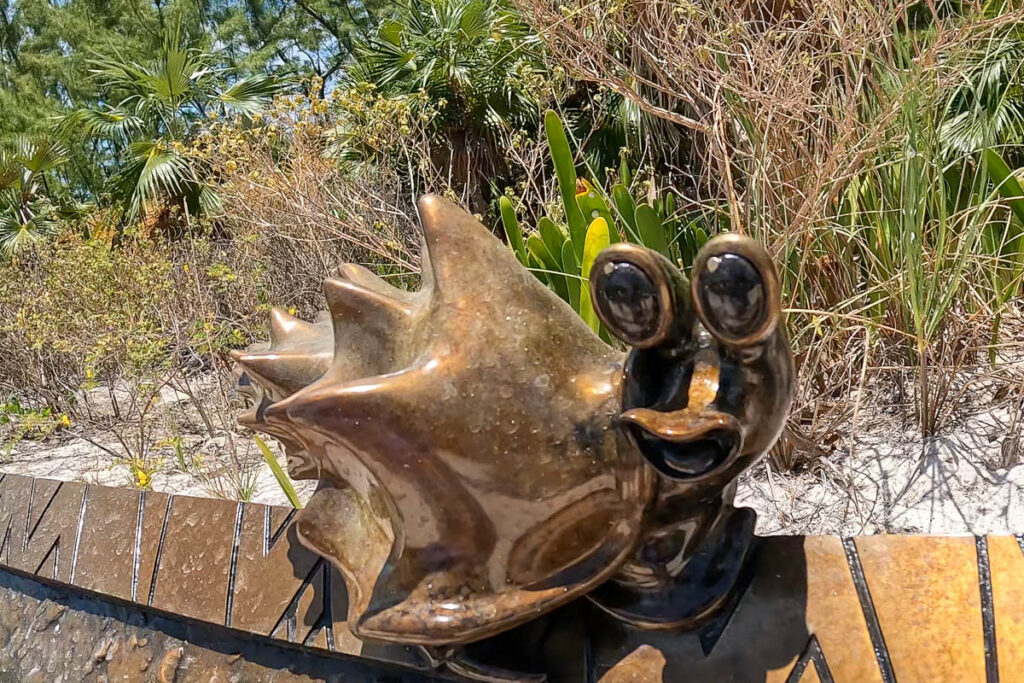
Because of this conch’s relatively slow growth, Bahamian fishers are careful to only harvest mature conches to help sustain the population. The queen conch is not only important to humans but also to the shallow water ecosystems of Eleuthera. Many marine animals eat queen conches, and hermit crabs often live in discarded conch shells.
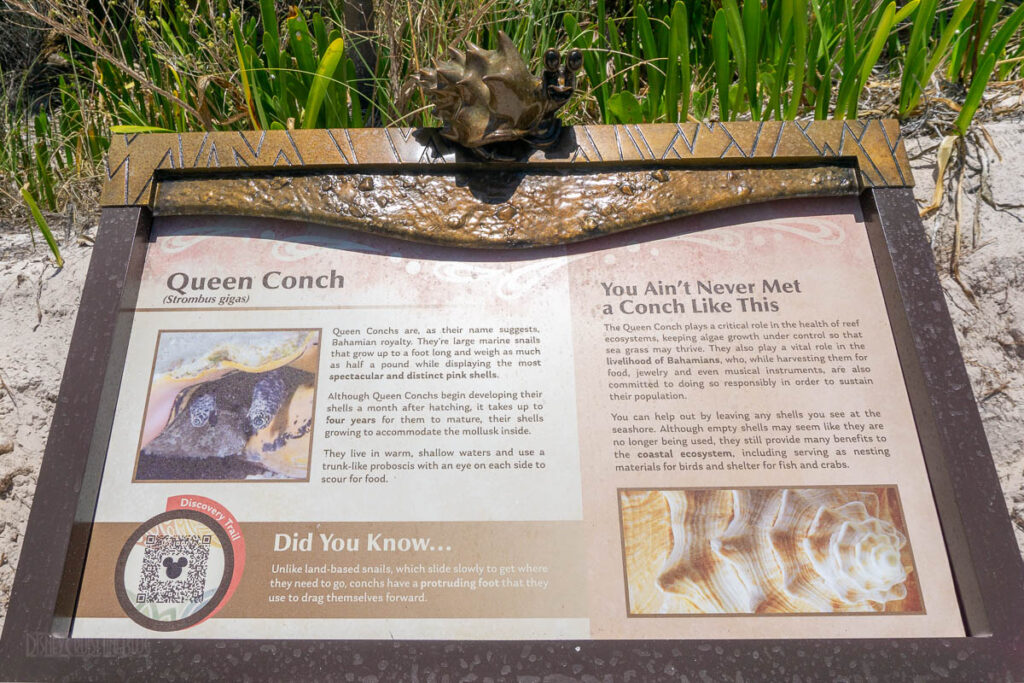

Queen Conch (Strombus gigas)
Queen Conchs are, as their name suggests, Bahamian royalty. They’re large marine snails that grow up to a foot long and weigh as much as half a pound while displaying the most spectacular and distinct pink shells.
Although Queen Conchs begin developing their shells a month after hatching, it takes up to four years for them to mature, their shells growing to accommodate the mollusk inside.
They live in warm, shallow waters and use a trunk-like proboscis with an eye on each side to scour for food.
You Ain’t Never Met a Conch Like This
The Queen Conch plays a critical role in the health of reef ecosystems, keeping algae growth under control so that sea grass may thrive. They also play a vital role in the livelihood of Bahamians, who, while harvesting them for food, jewelry and even musical instruments, are also committed to doing so responsibly in order to sustain their population.
You can help out by leaving any shells you see at the seashore. Although empty shells may seem like they are no longer being used, they still provide many benefits to the coastal ecosystem, including serving as nesting materials for birds and shelter for fish and crabs.
Did You Know…
Unlike land-based snails, which slide slowly to get where they need to go, conchs have a protruding foot that they use to drag themselves forward.
Great Lizard-Cuckoo
You’re likely to hear this bird before you see it! Great lizard-cuckoos are agile and stealthy, silently hopping from branch to branch in search of prey, including lizards, insects, and nestlings of other bird species. But when a great lizard-cuckoo is ready to announce its presence, it lets out a loud, ringing call. These long-tailed birds aren’t very skilled fliers, and so they scamper through trees like a squirrel, making short flights between treetops when necessary. They often hide in bushes and other low-lying plants, too.

Great lizard-cuckoos can be found in Cuba and across The Bahamas. The people of south Eleuthera call these birds “rain crows” and believe that seeing one is a sign that it will rain.
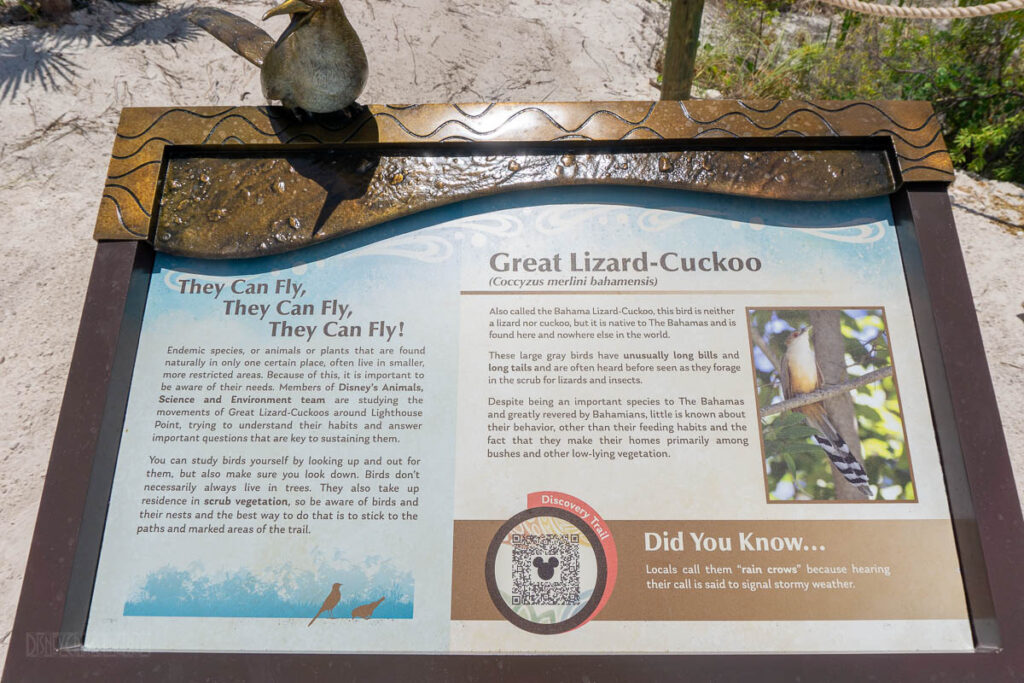
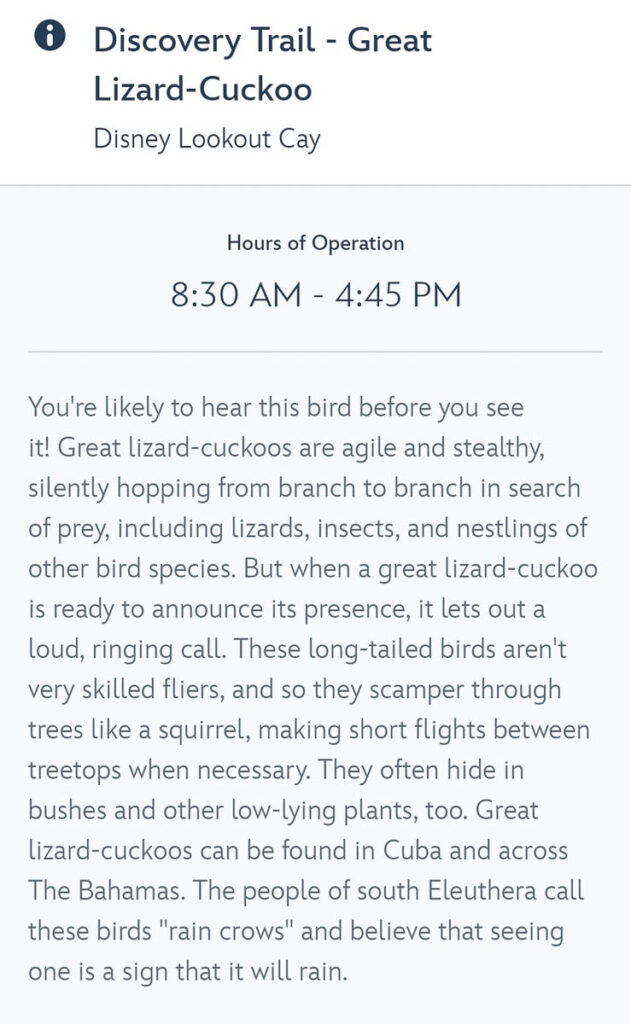
Great Lizard-Cuckoo (Coccyzus merlini bahamensis)
Also called the Bahama Lizard-Cuckoo, this bird is neither a lizard nor cuckoo, but it is native to The Bahamas and is found here and nowhere else in the world.
These large gray birds have unusually long bills and long tails and are often heard before seen as they forage in the scrub for lizards and insects.
Despite being an important species to The Bahamas and greatly revered by Bahamians, little is known about their behavior, other than their feeding habits and the fact that they make their homes primarily among bushes and other low-lying vegetation.
They Can Fly, They Can Fly, They Can Fly!
Endemic species, or animals or plants that are found naturally in only one certain place, often live in smaller, more restricted areas. Because of this, it is important to be aware of their needs. Members of Disney’s Animals, Science and Environment team are studying the movements of Great Lizard-Cuckoos around Lighthouse Point, trying to understand their habits and answer important questions that are key to sustaining them.
You can study birds yourself by looking up and out for them, but also make sure you look down. Birds don’t necessarily always live in trees. They also take up residence in scrub vegetation, so be aware of birds and their nests and the best way to do that is to stick to the paths and marked areas of the trail.
Did You Know…
Locals call them “rain crows” because hearing their call is said to signal stormy weather.
Discovery Nature Trail Geography
Limestone Cliffs
The southern end Lookout Cay features dramatic limestone cliffs which act as the foundation to the light station and create a gorgeous view, especially when viewed from the beach.
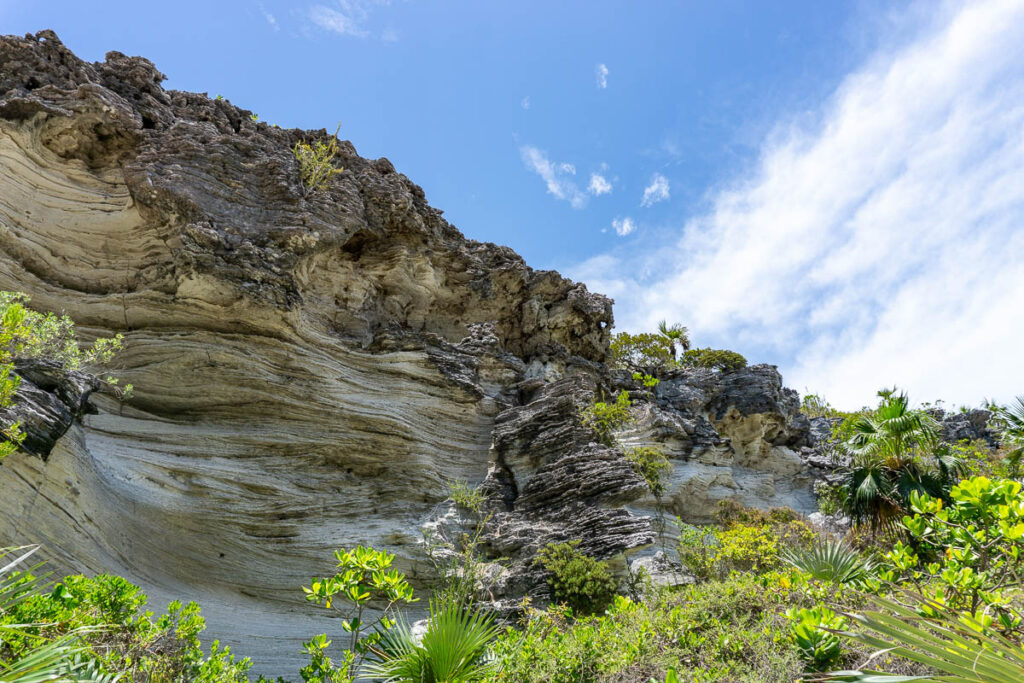
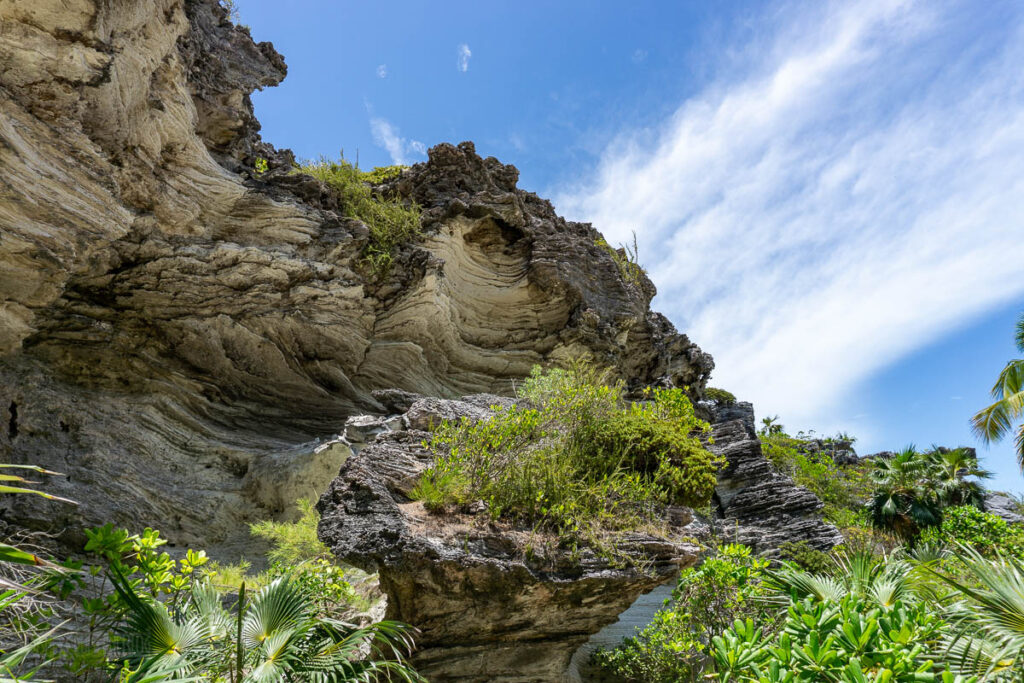
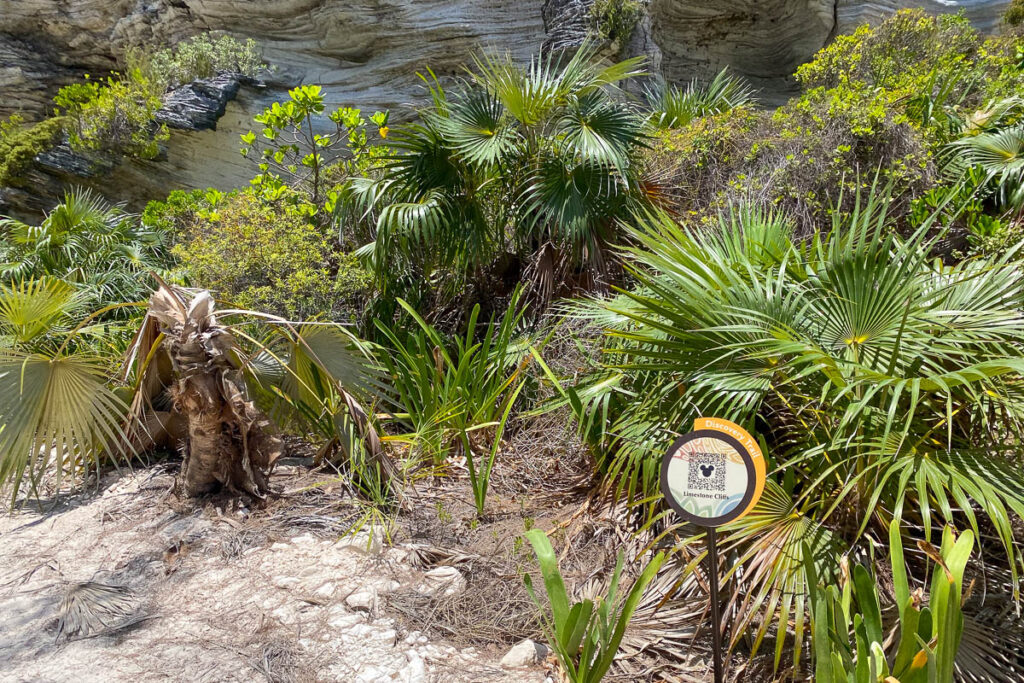
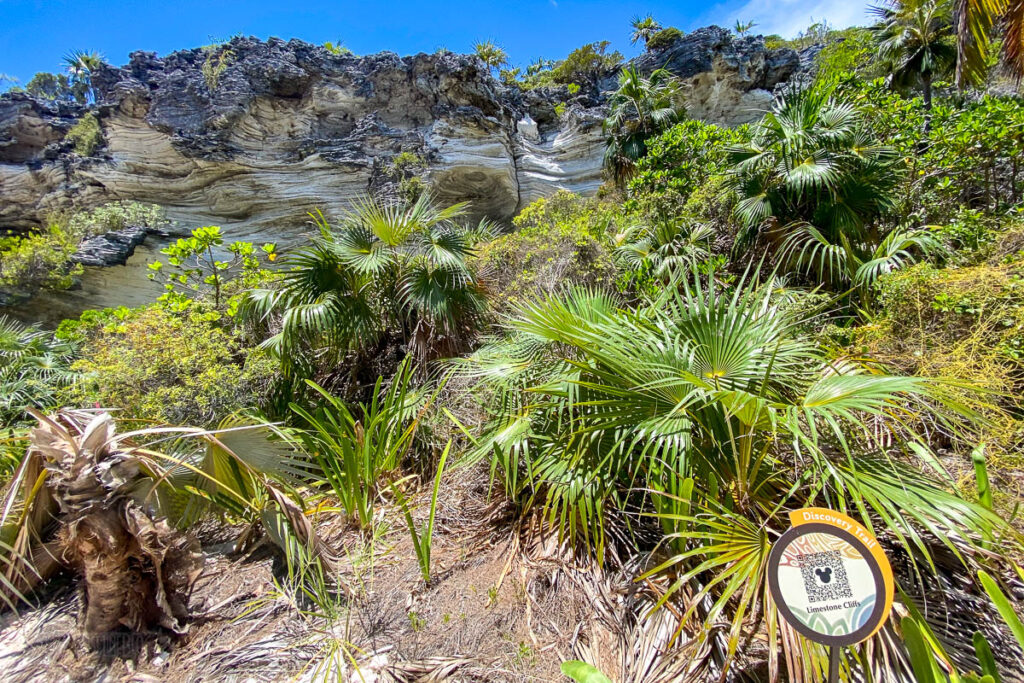
For those walking the nature trail, there is an opportunity for a unique “water” break; you can head to the beach and take in the breathtaking turquoise waters as they meet the limestone cliffs.
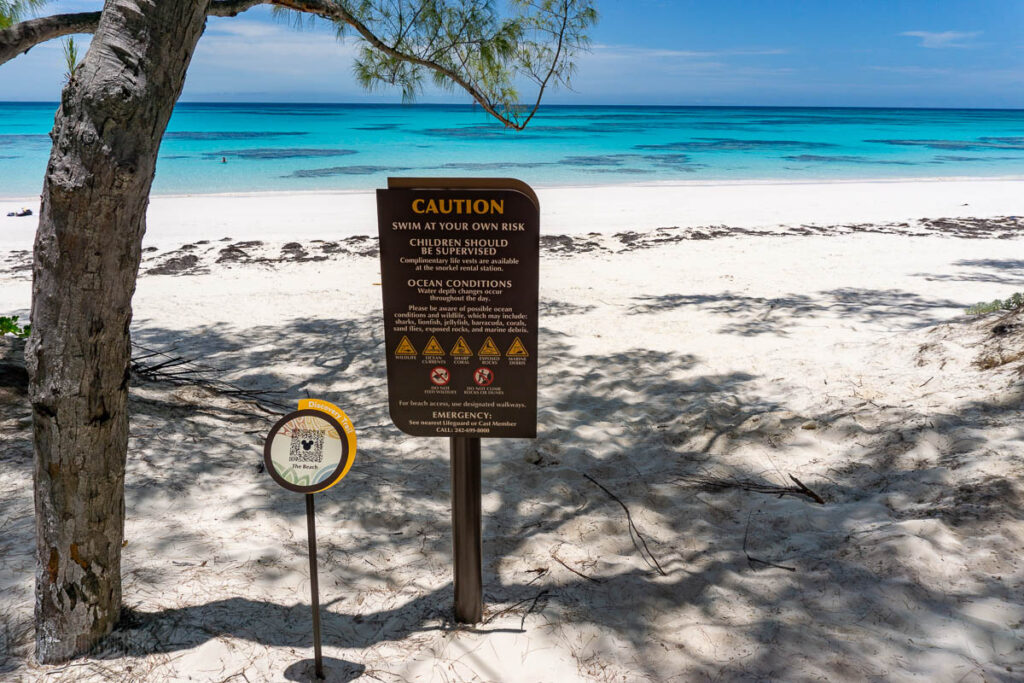
In my opinion, there have been moments in my life where I feel like I am somewhat of a decent photographer. However, pictures do not compare to seeing this area of Lookout Cay with your own eyes.
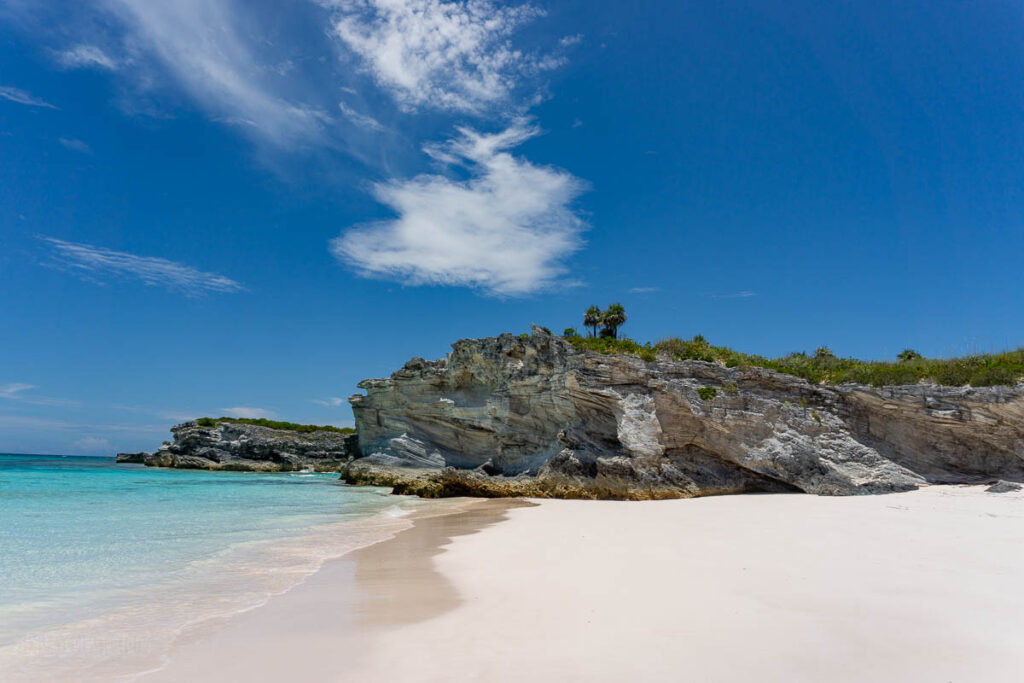

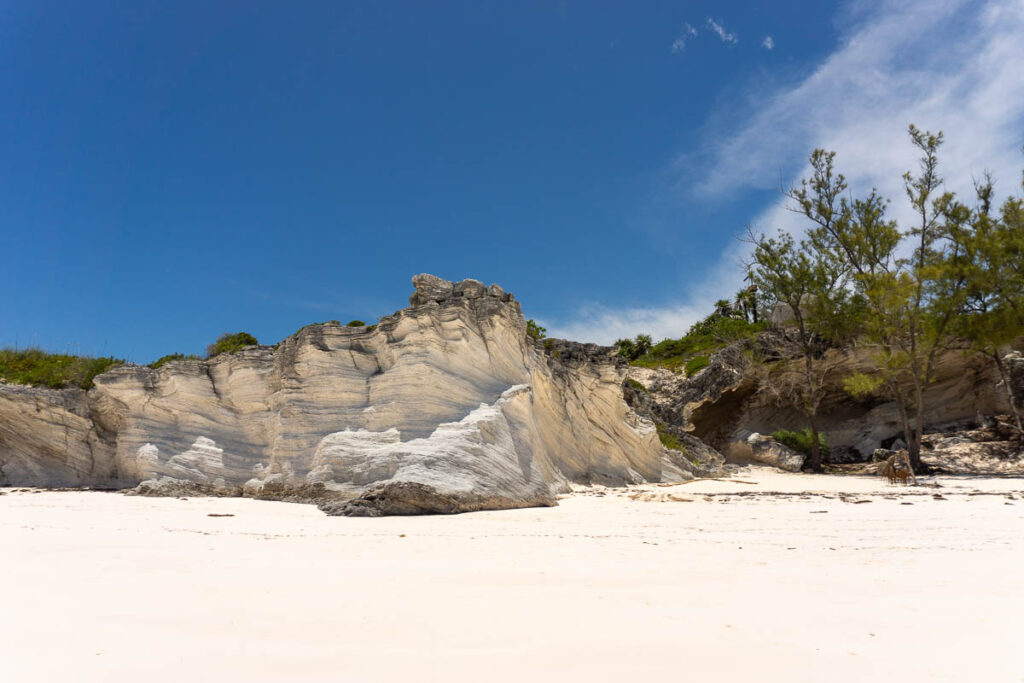

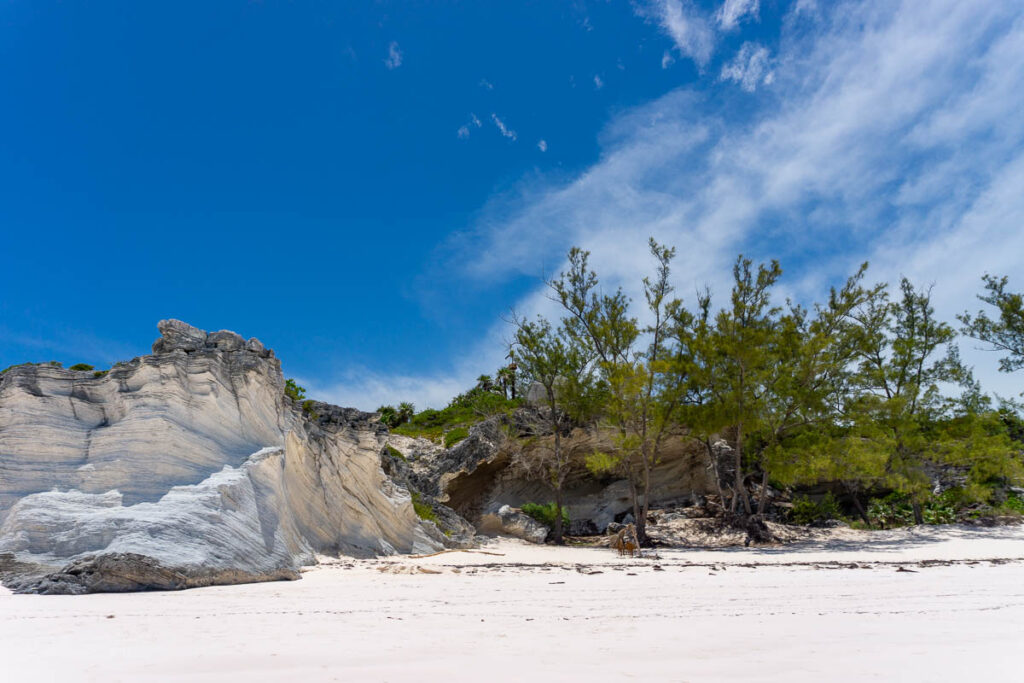
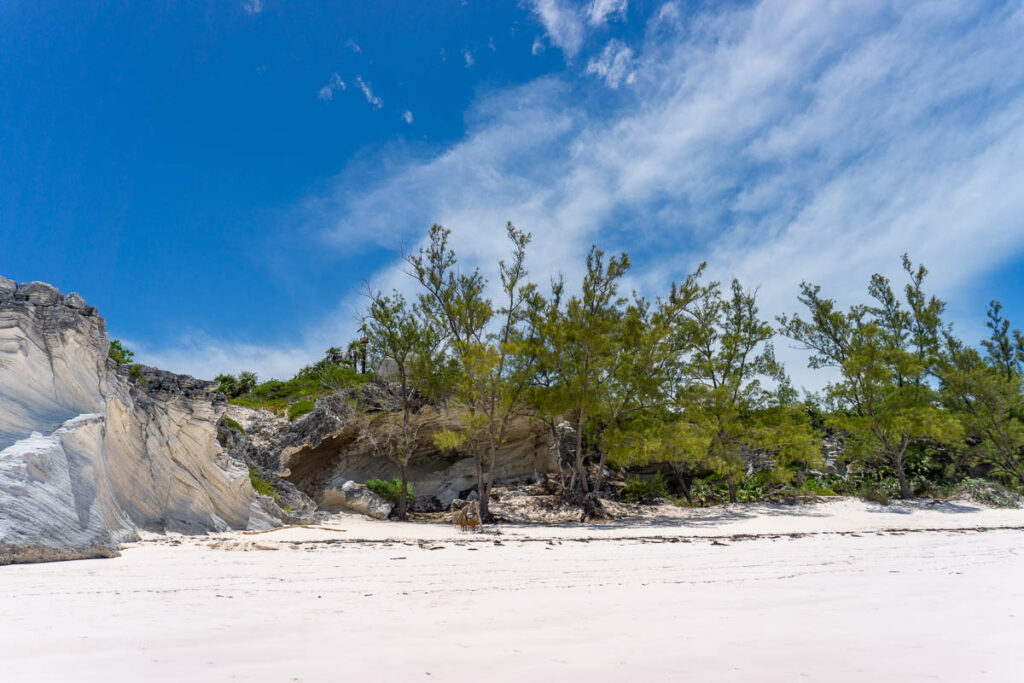

Due to the location of the other constructs at Lookout Cay, this area is relatively quiet allowing you to take in the natural beauty of this area. That is actually a photo of me taken by my wife in the last photo below. This was such a tranquil moment walking along the shoreline listening to the natural sounds of the waves crashing on the beach.
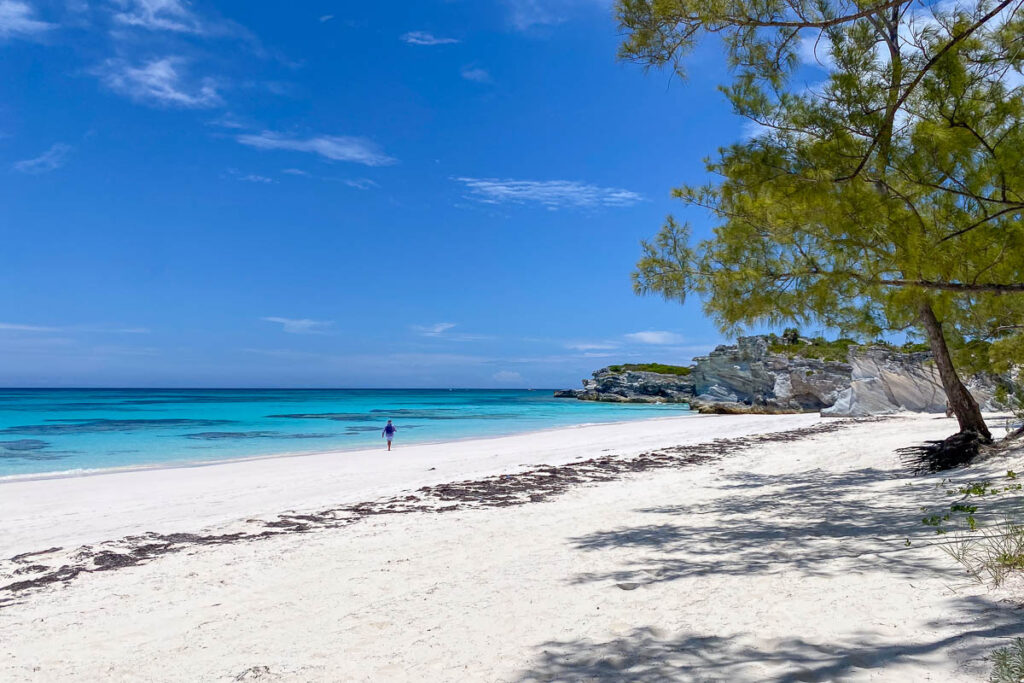
See the line where the limestone cliff meets the sea? It called me.
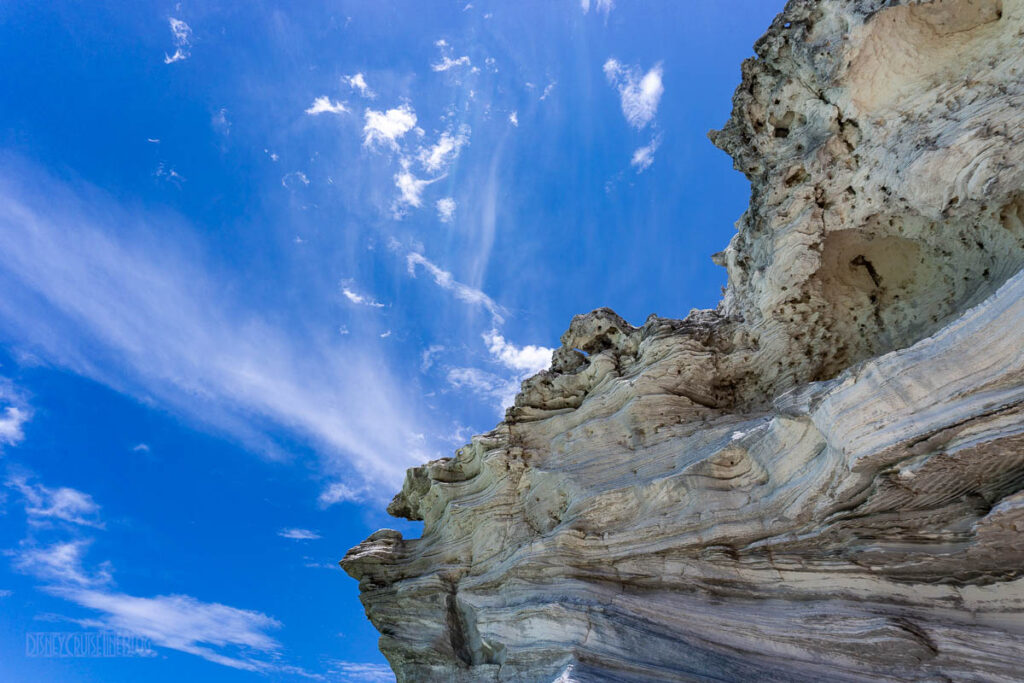
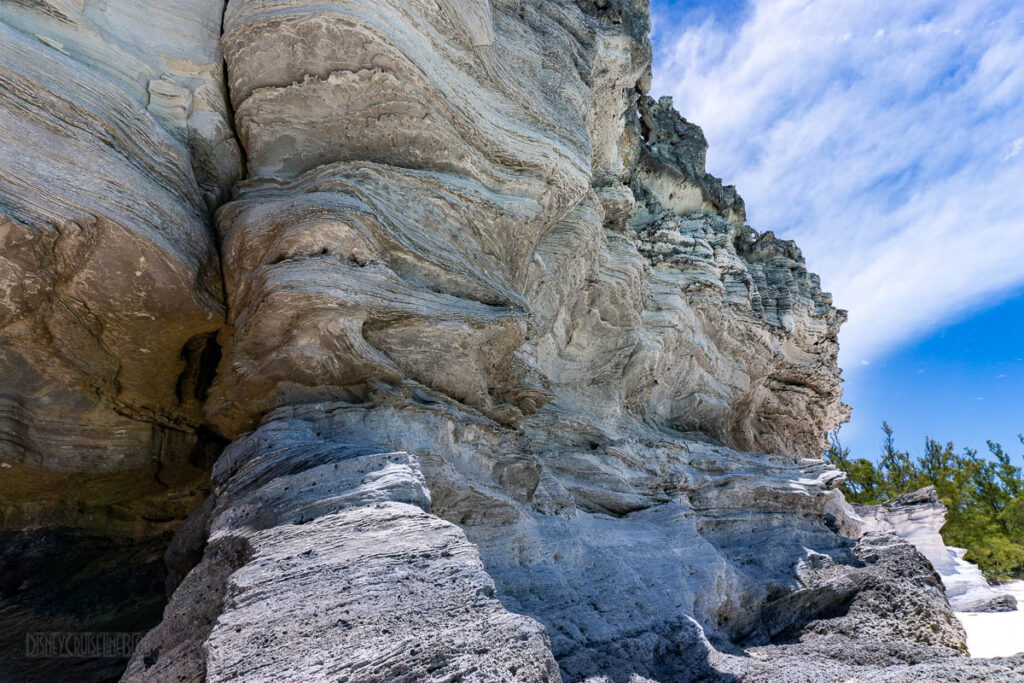
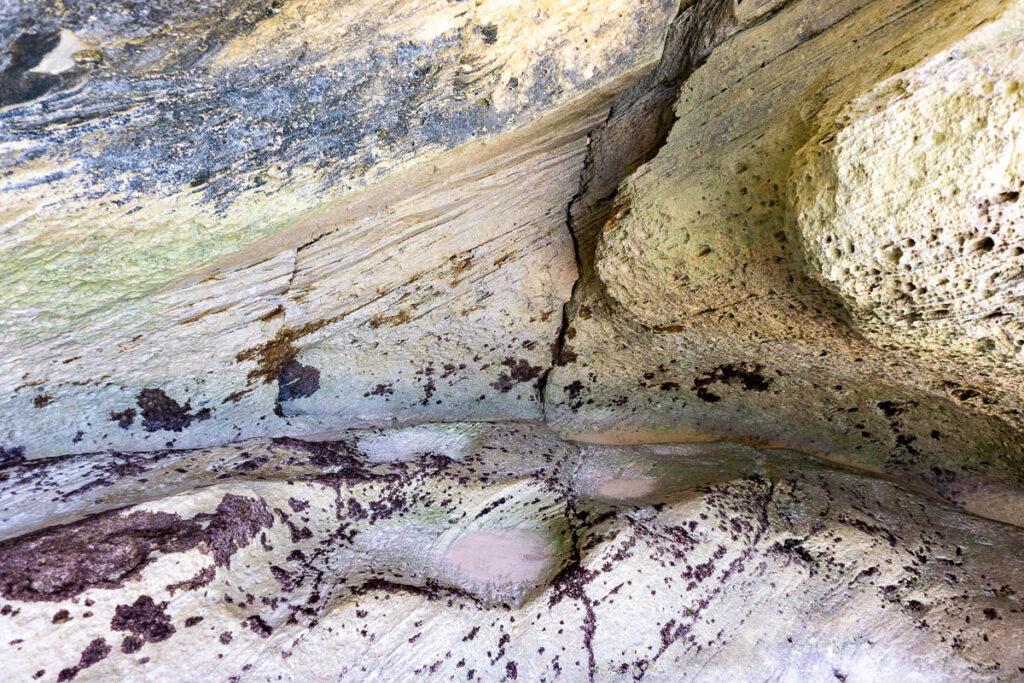
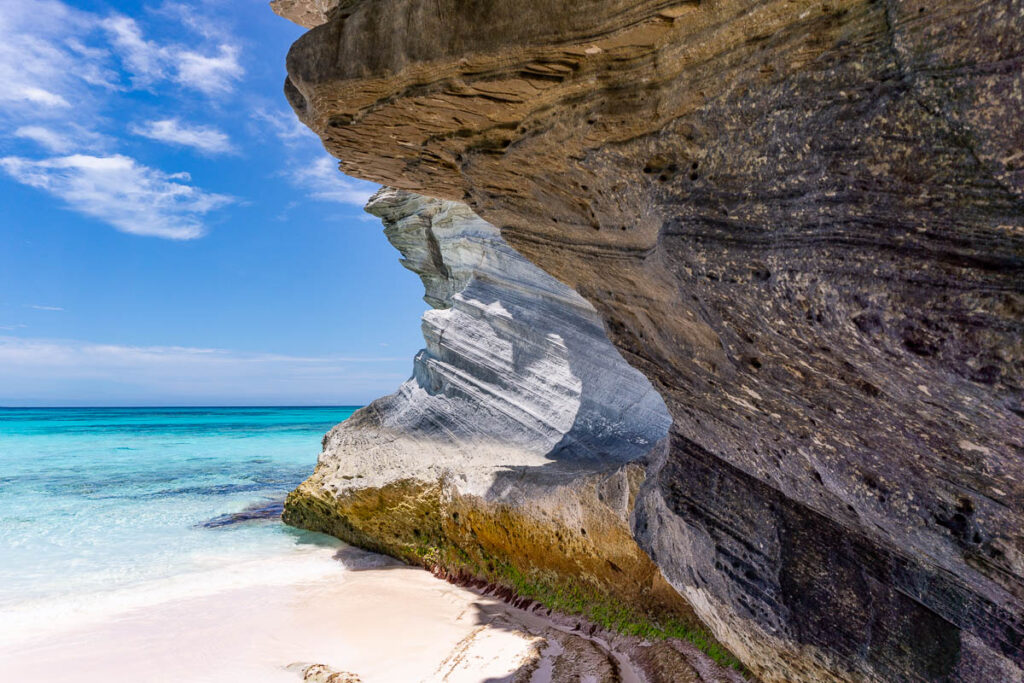
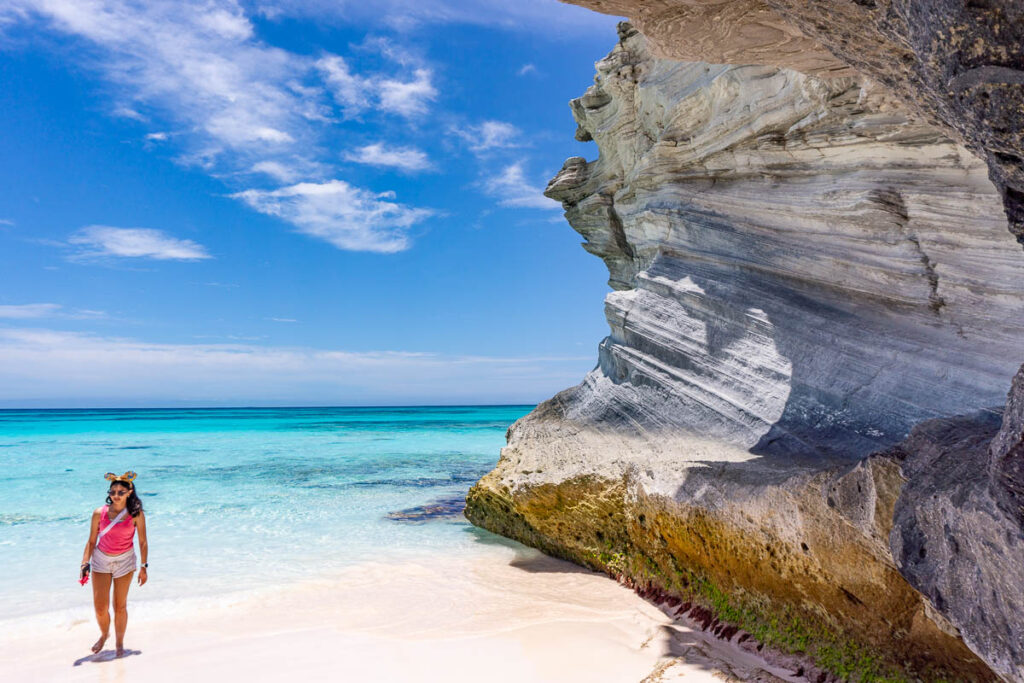
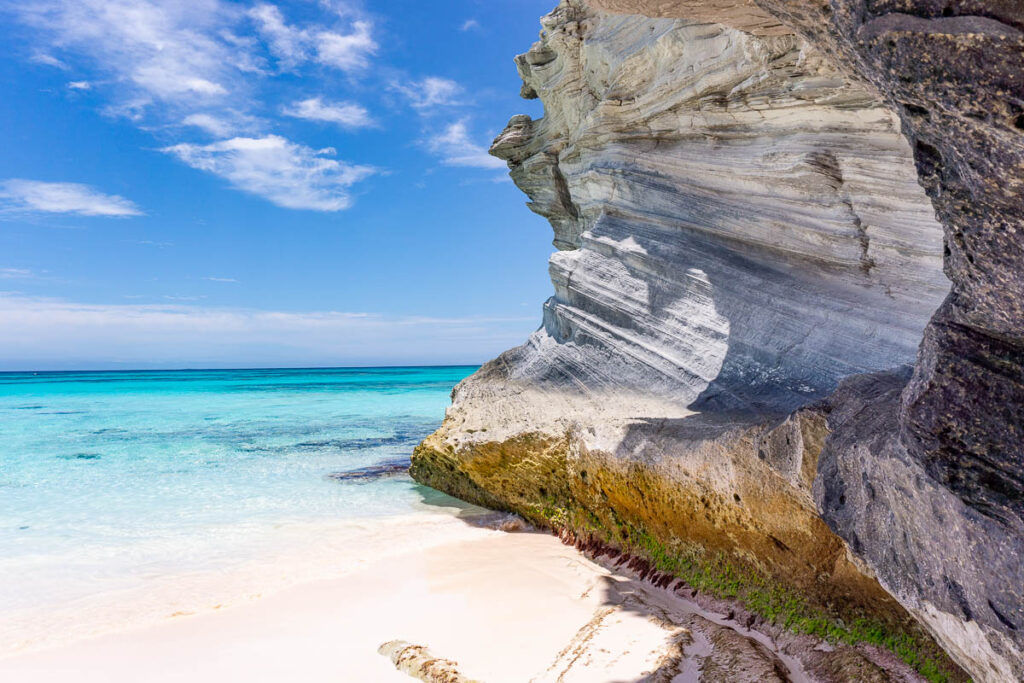


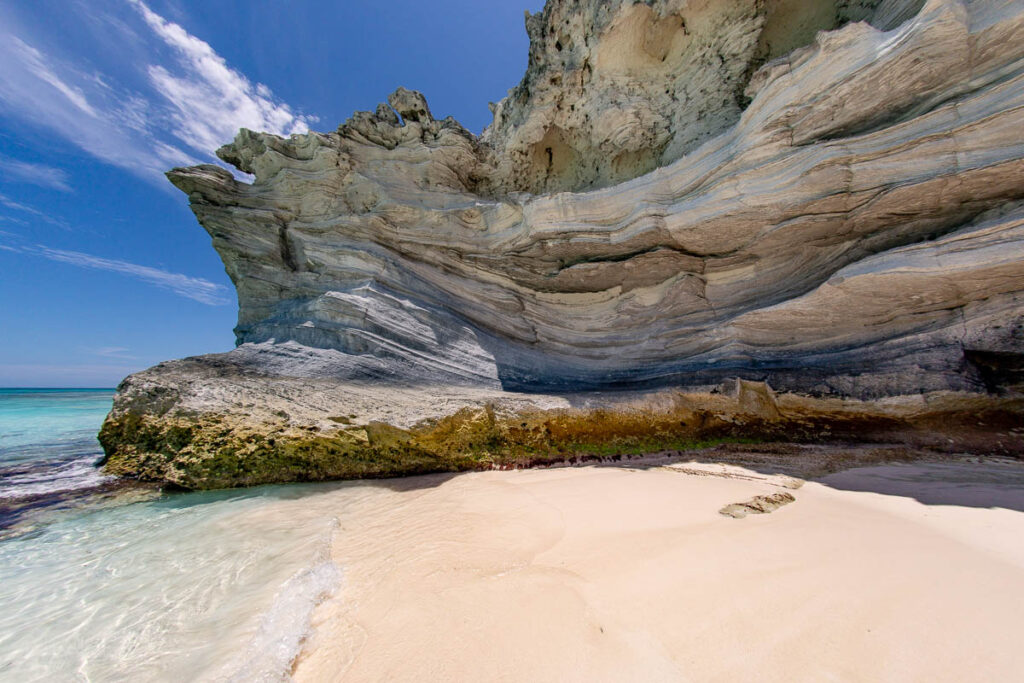

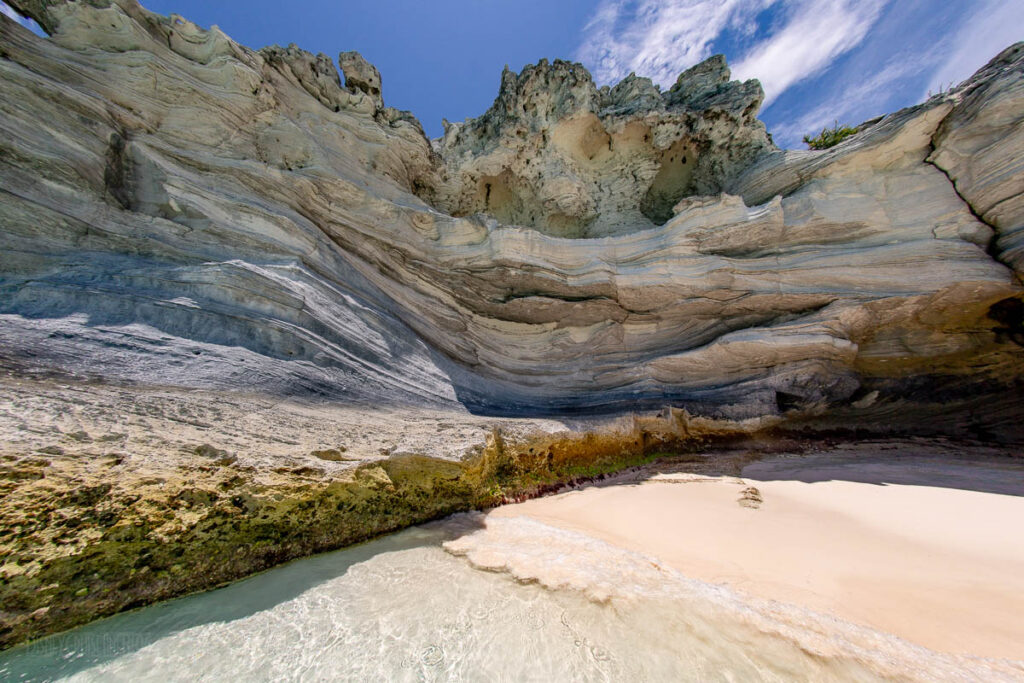
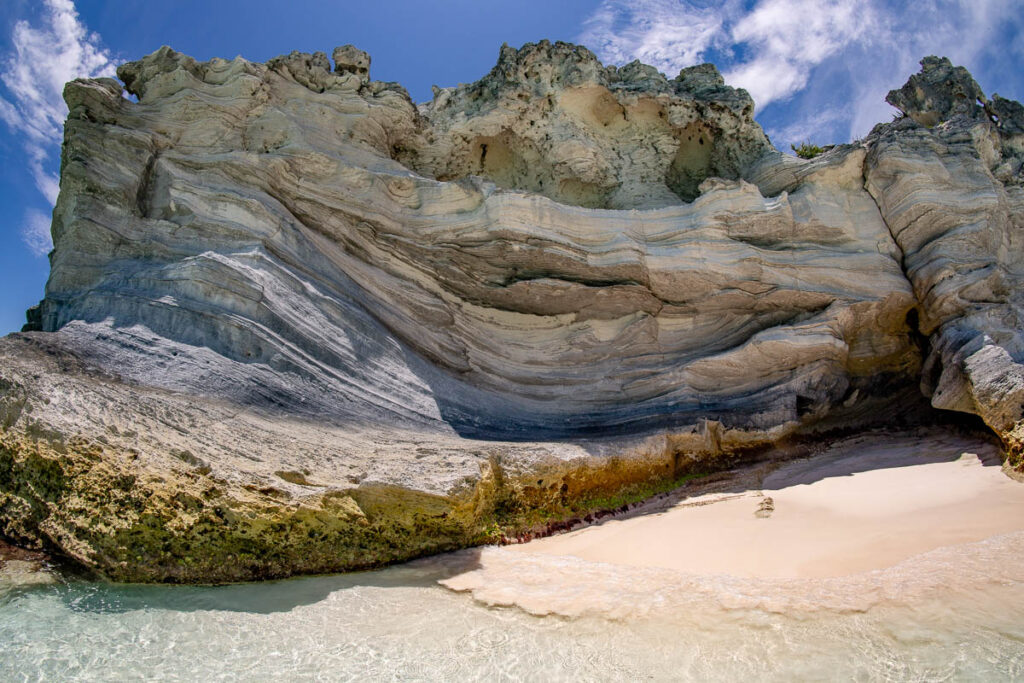
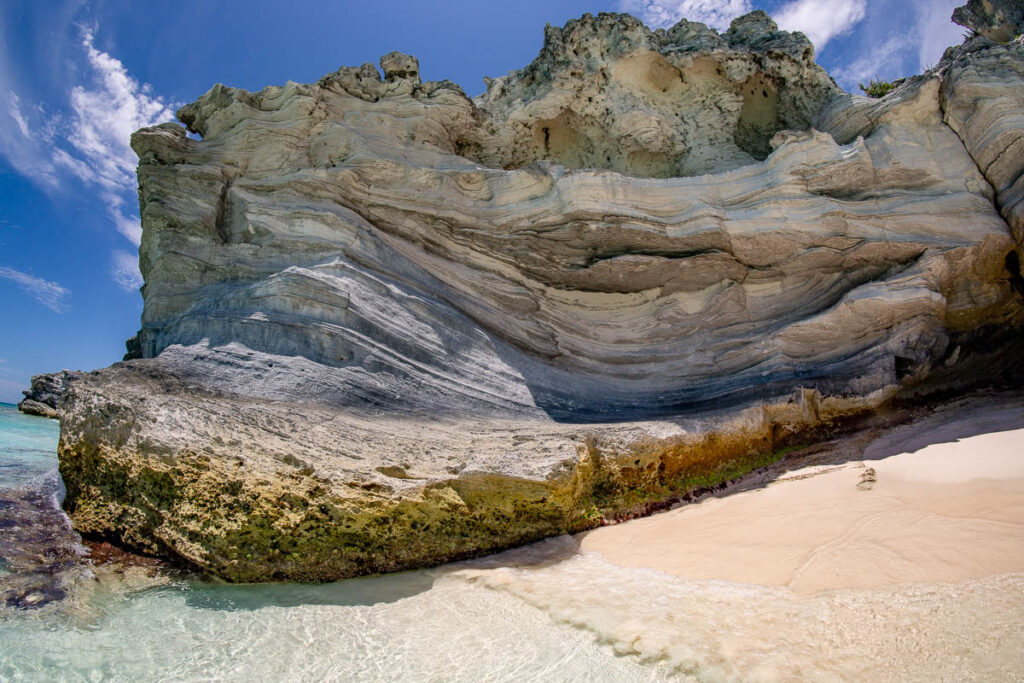


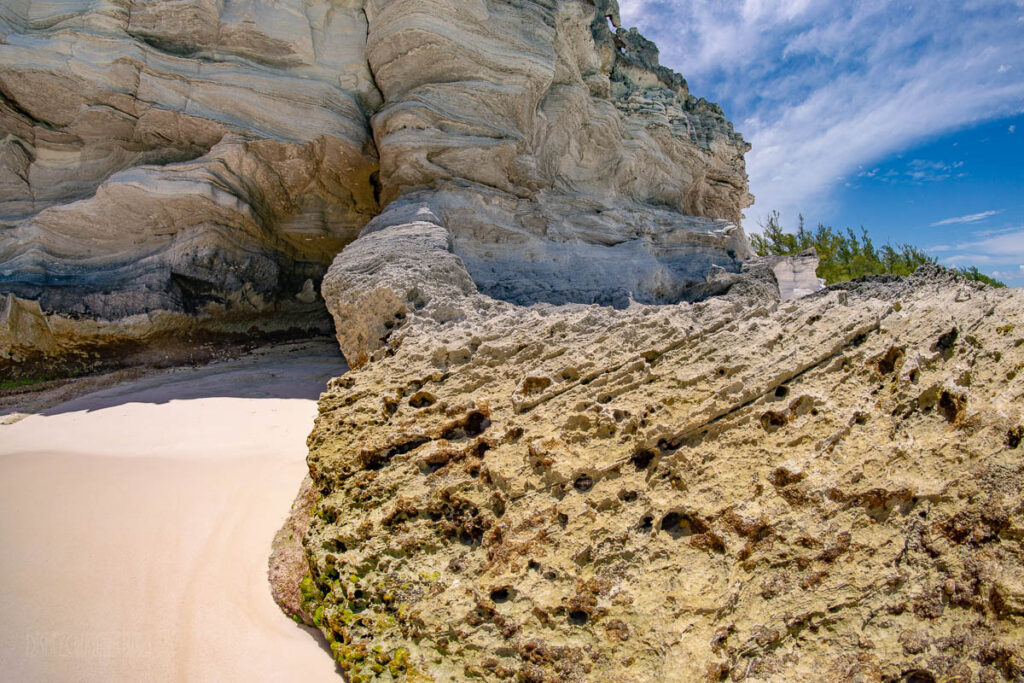


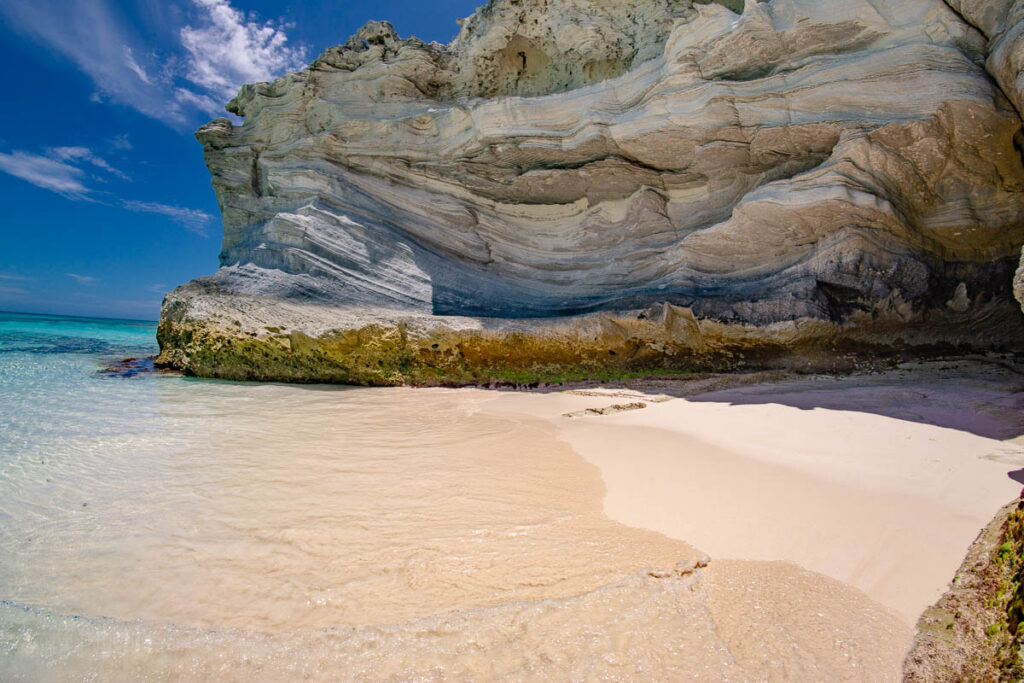
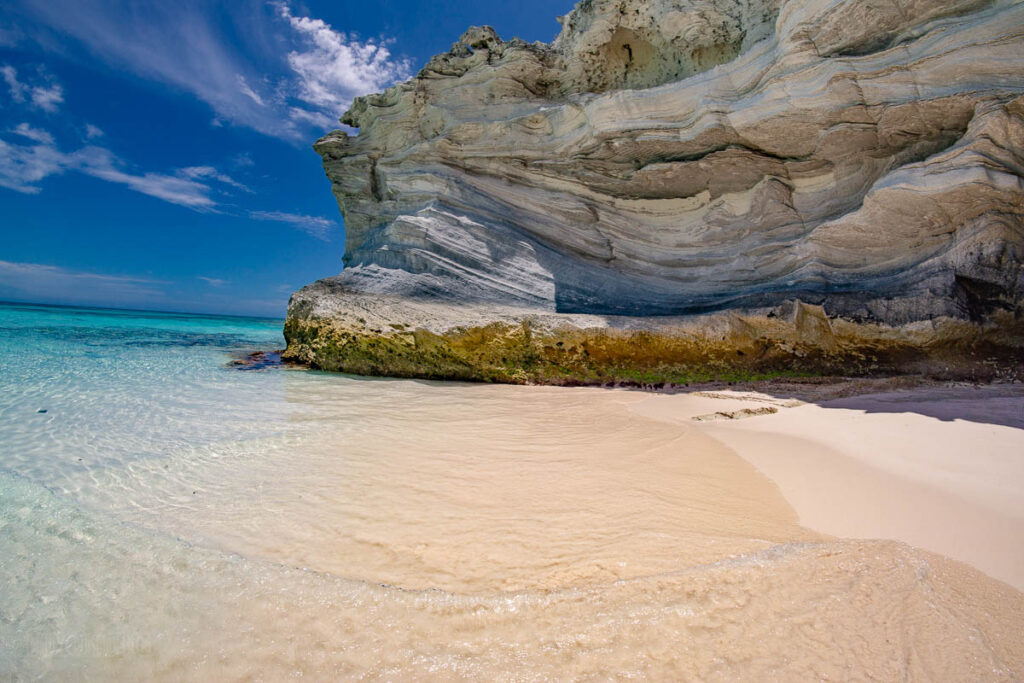
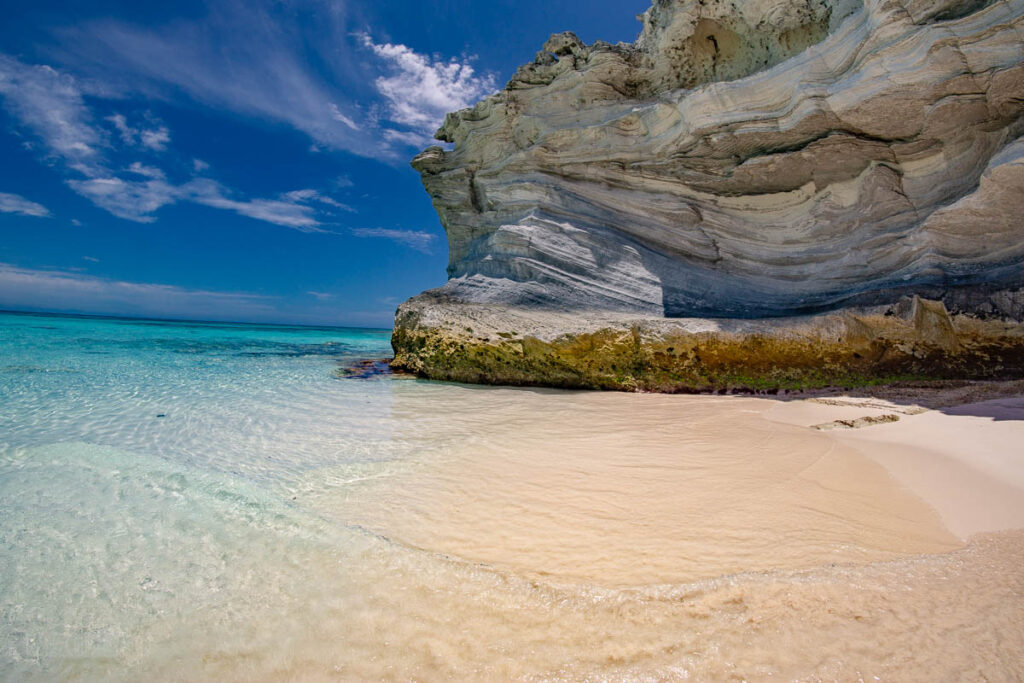
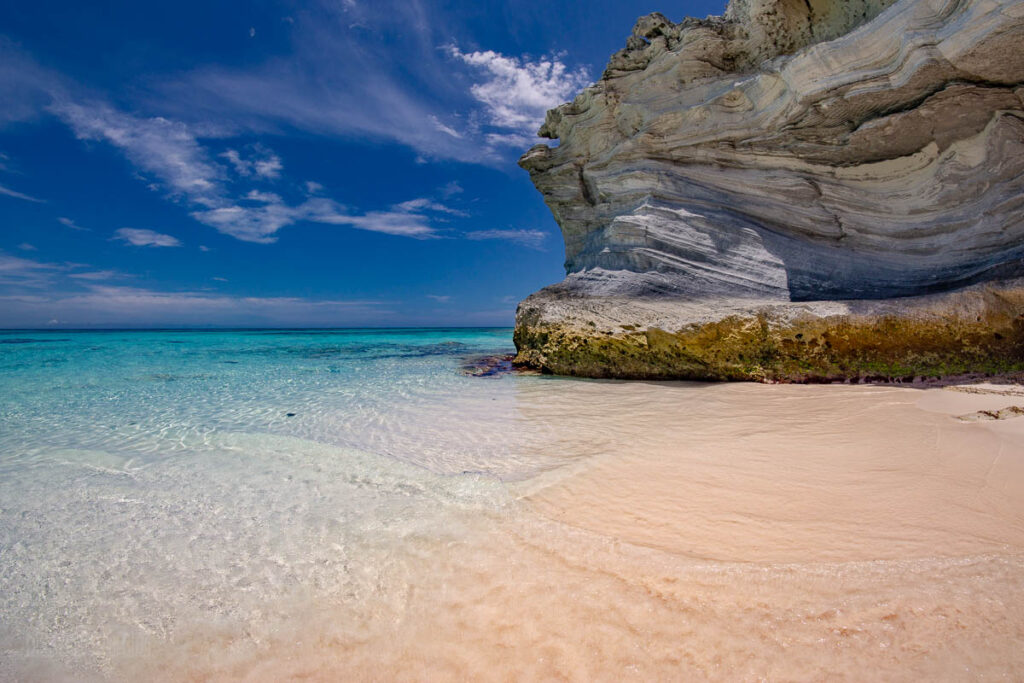
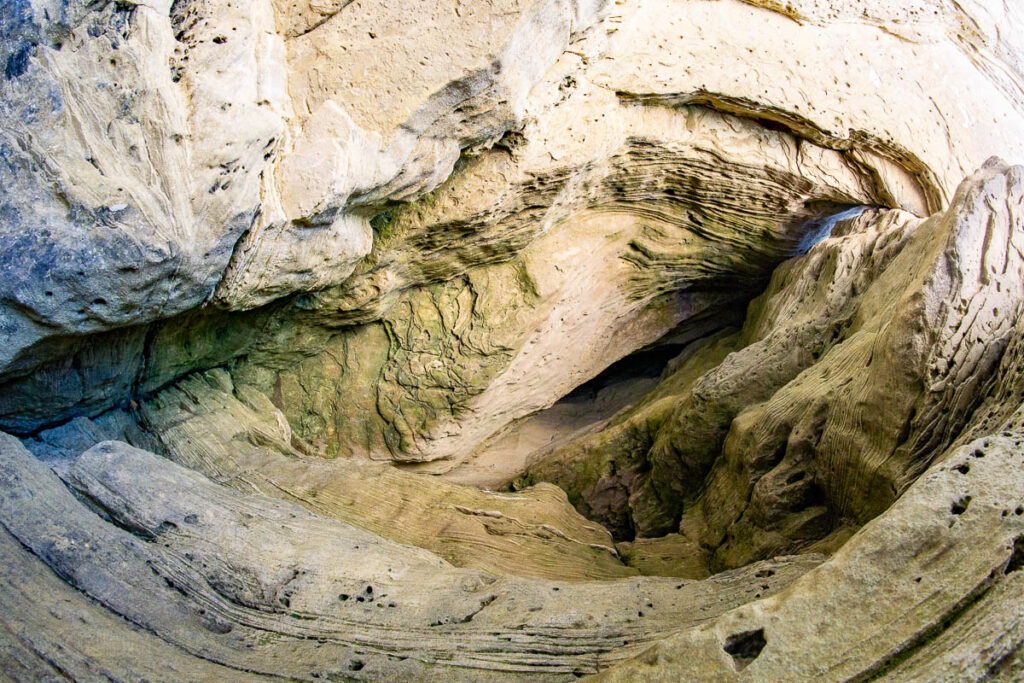
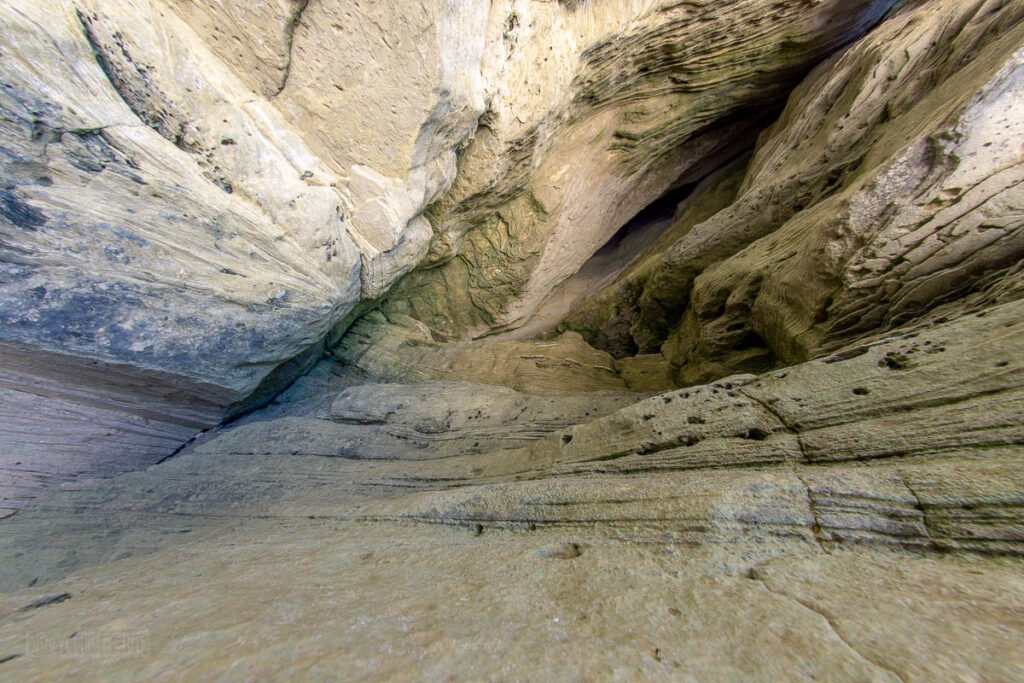
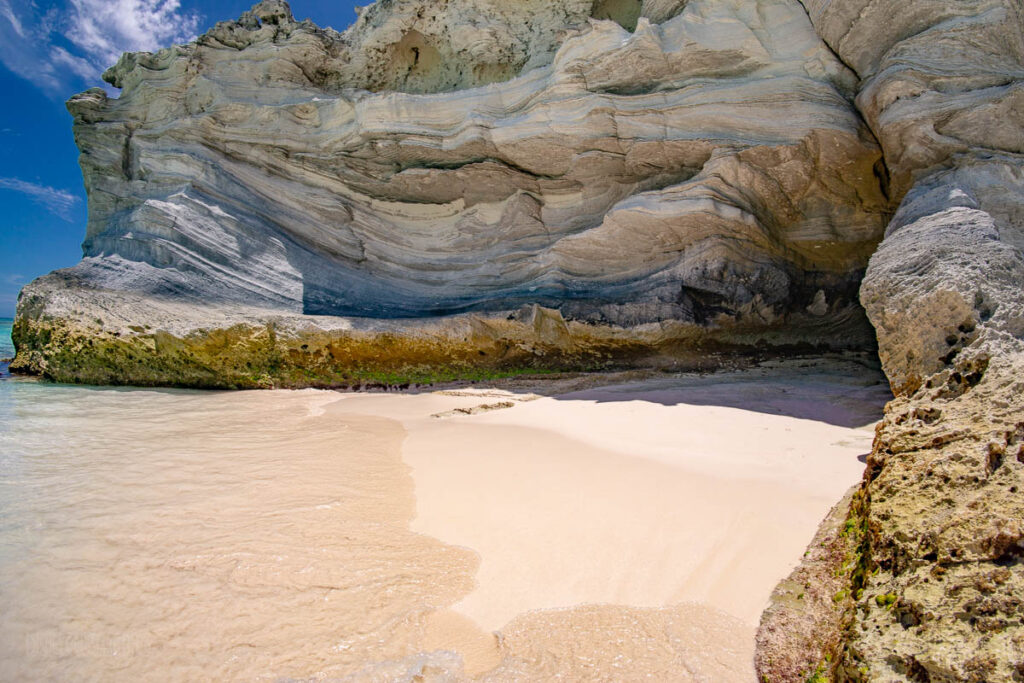
Just look at the beauty of this spot.

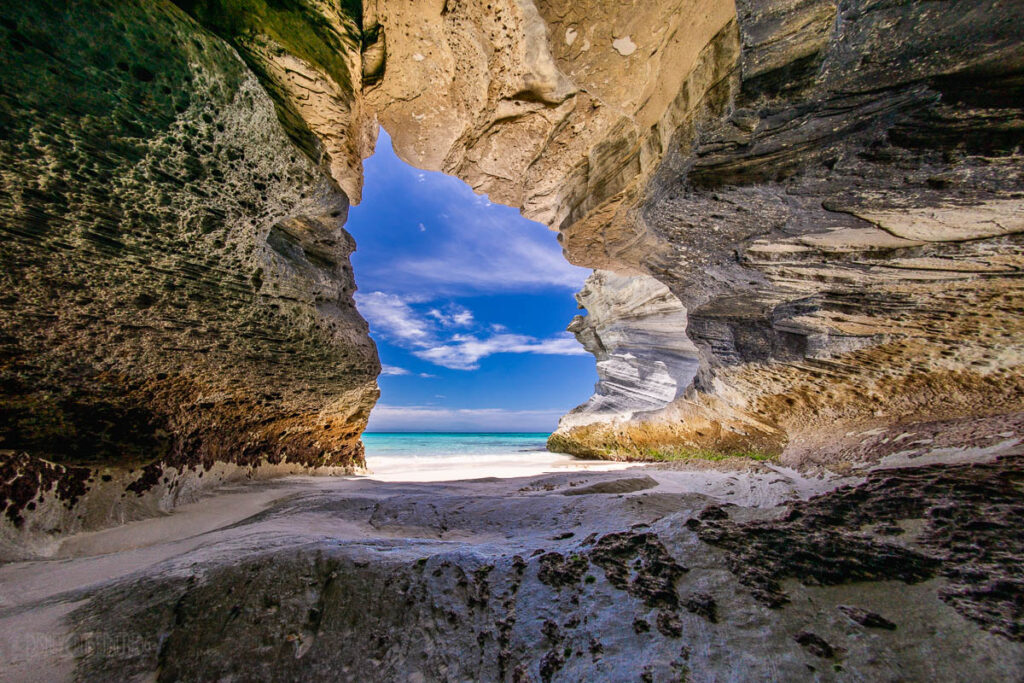

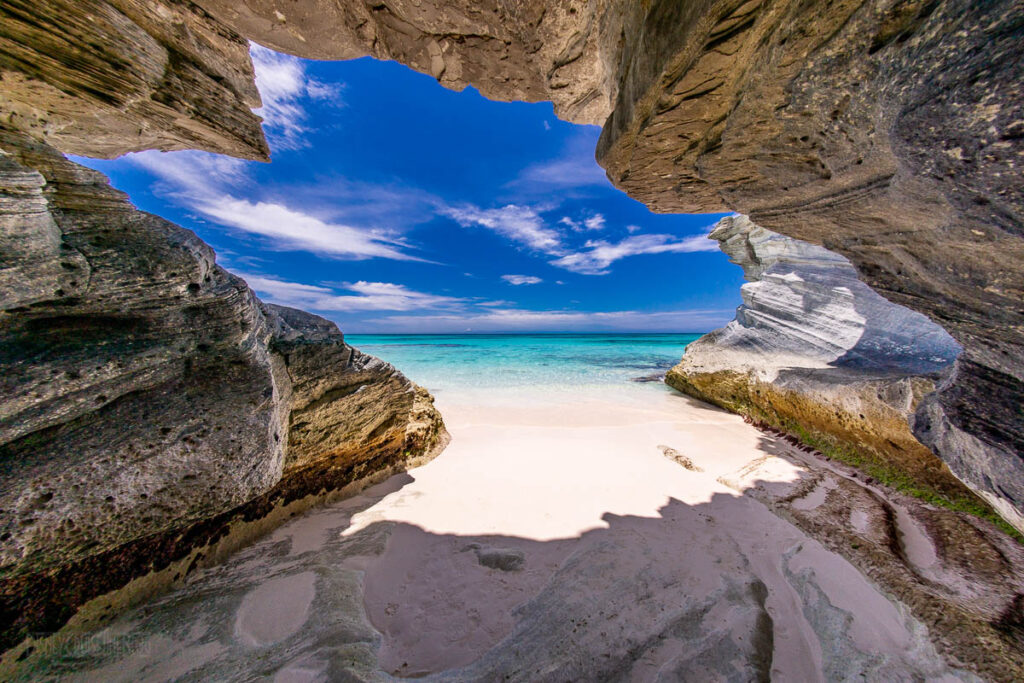
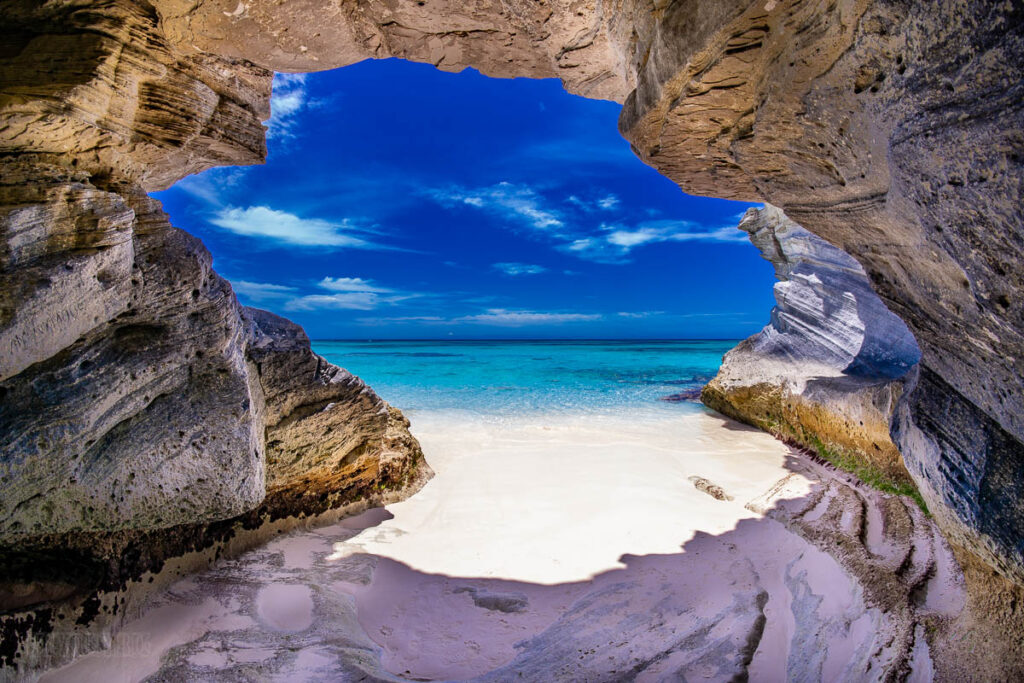
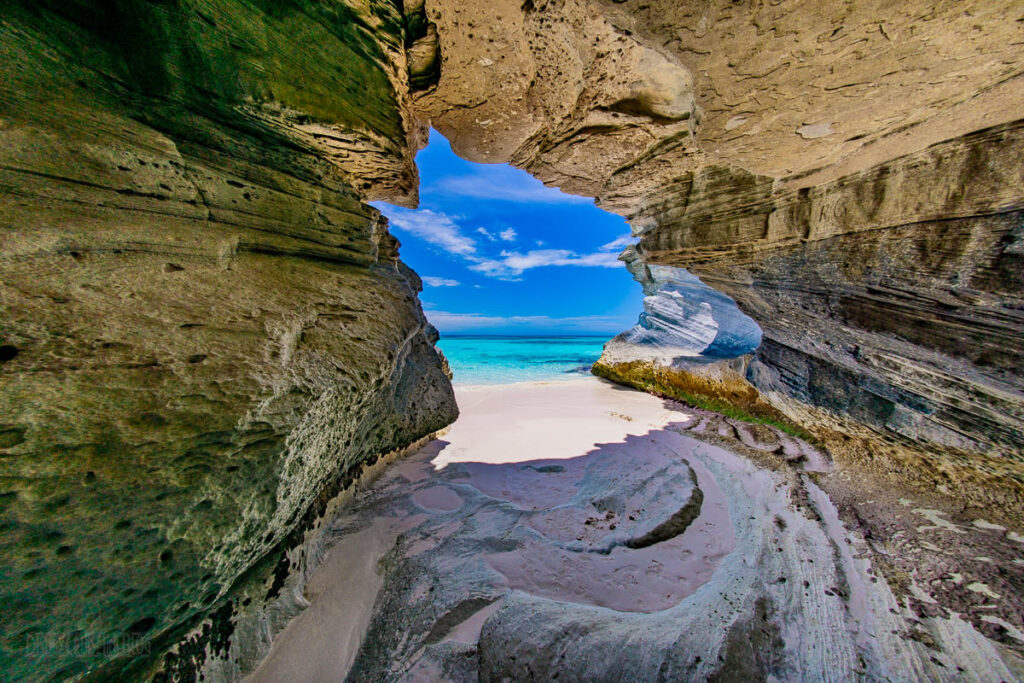

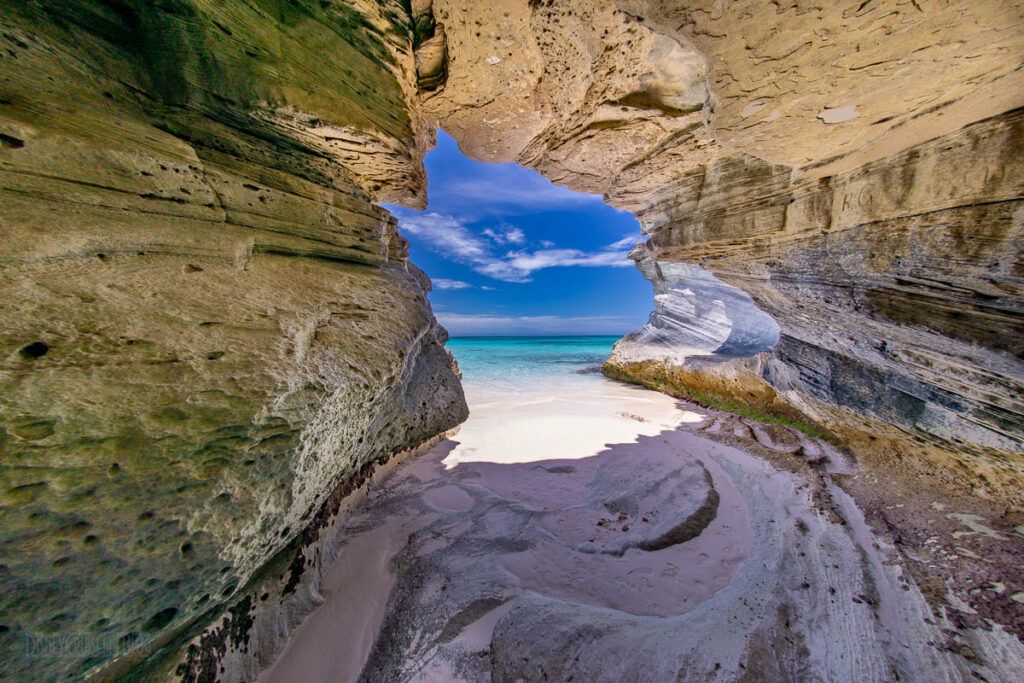
The walk back north on the beach offers even more breathtaking views of Lighthouse Beach.
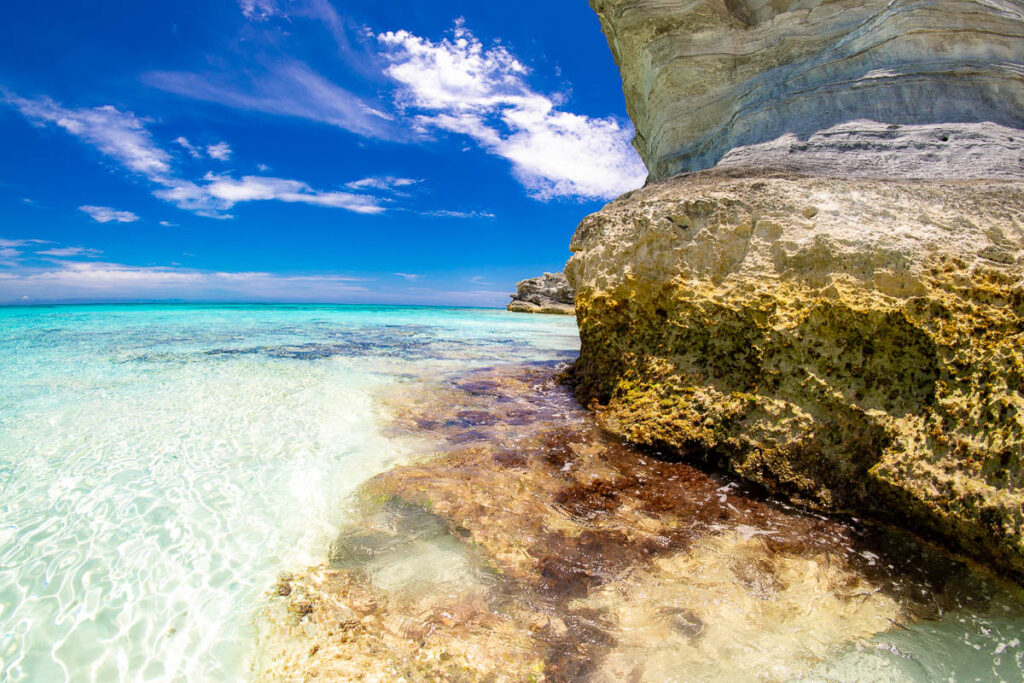
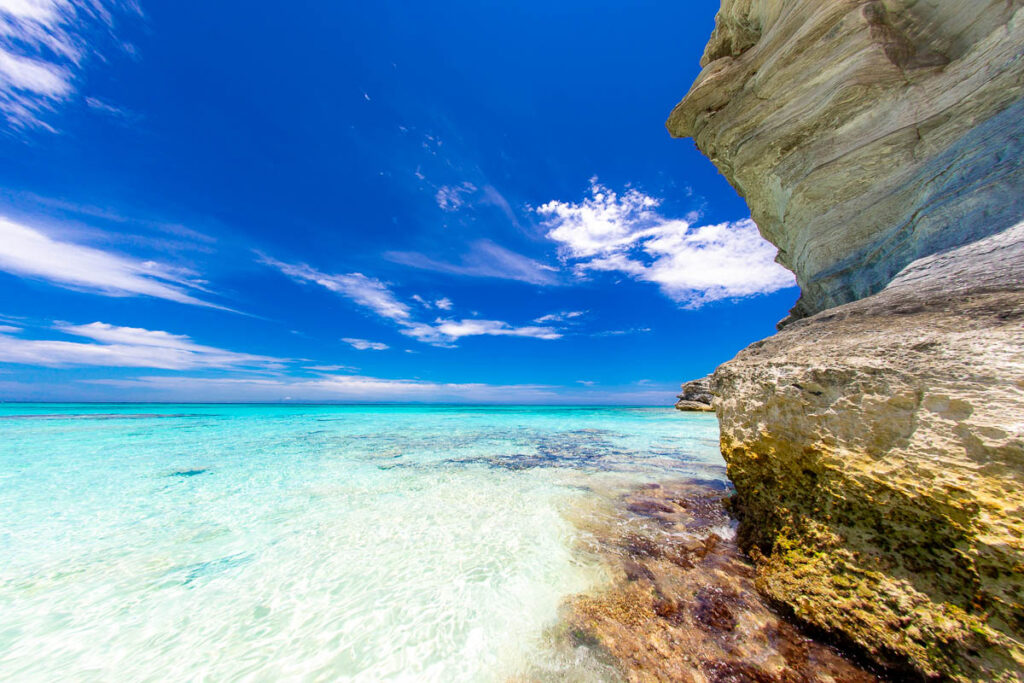
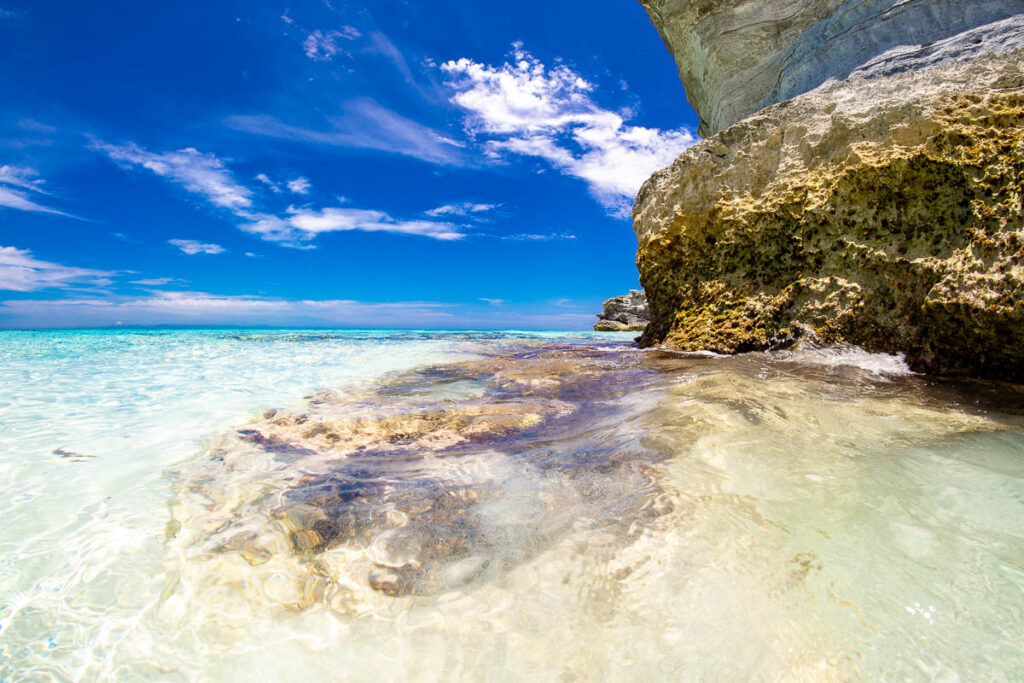
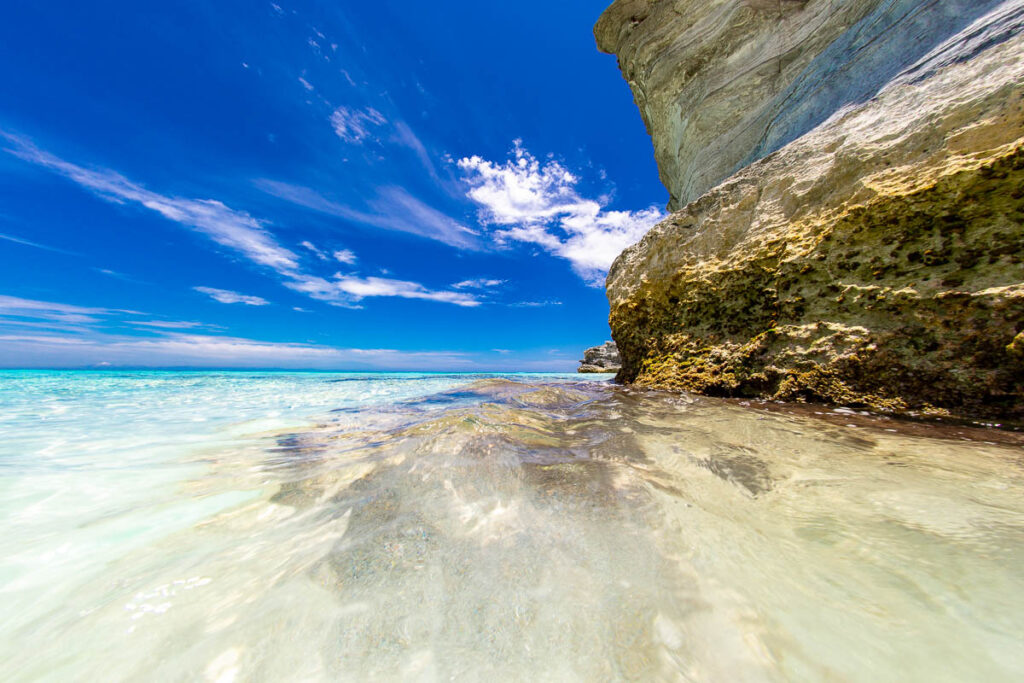


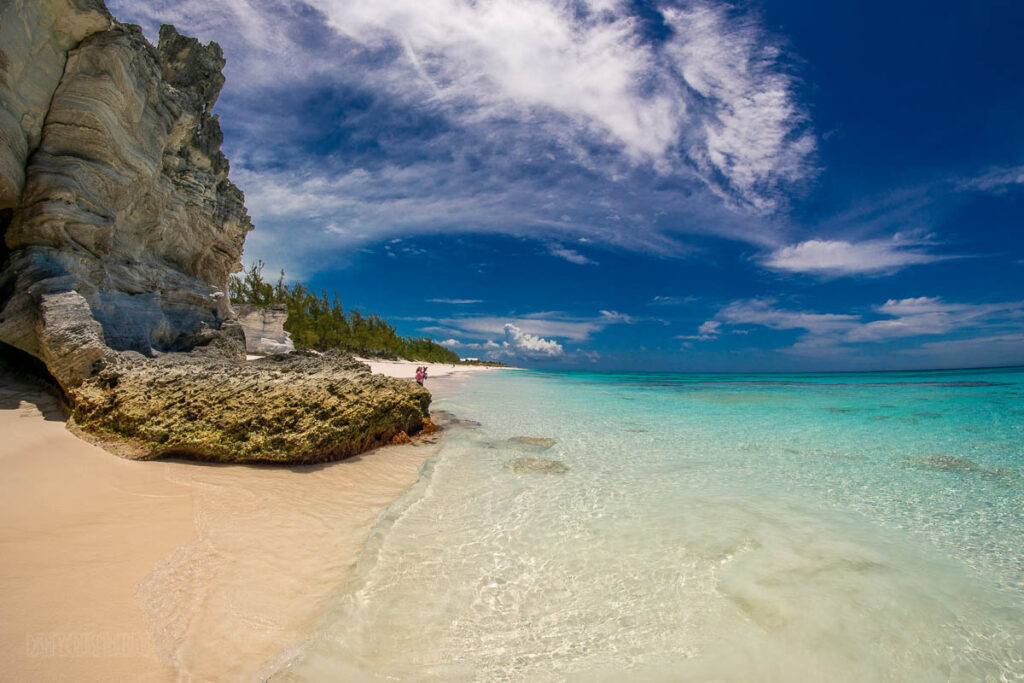
If you didn’t take the time earlier, walk along the cliff on the way back to the Nature Trail.

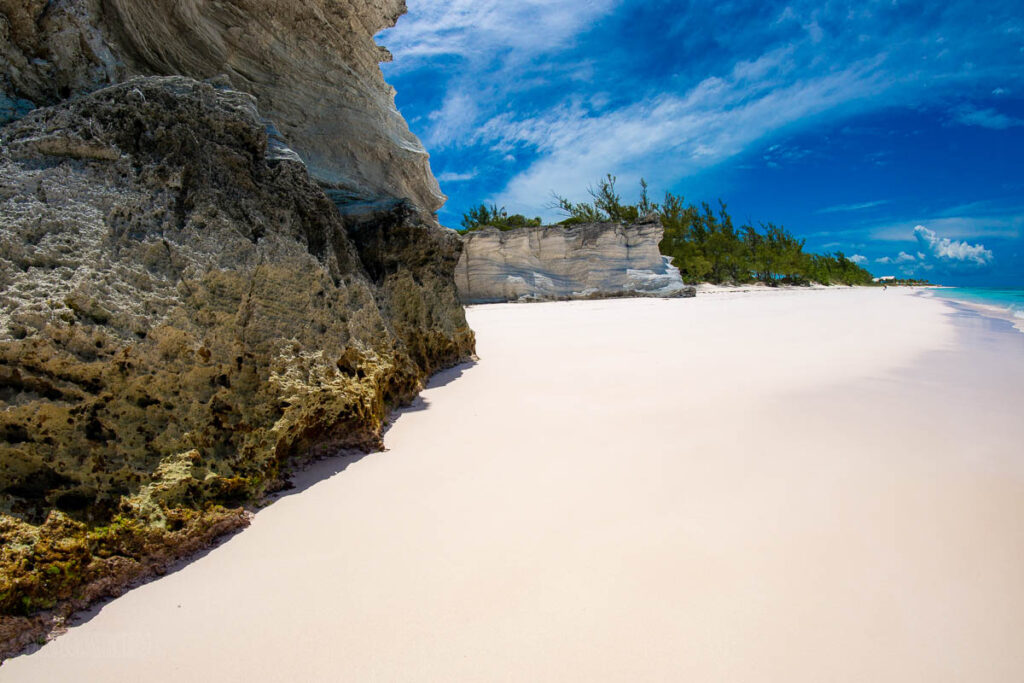
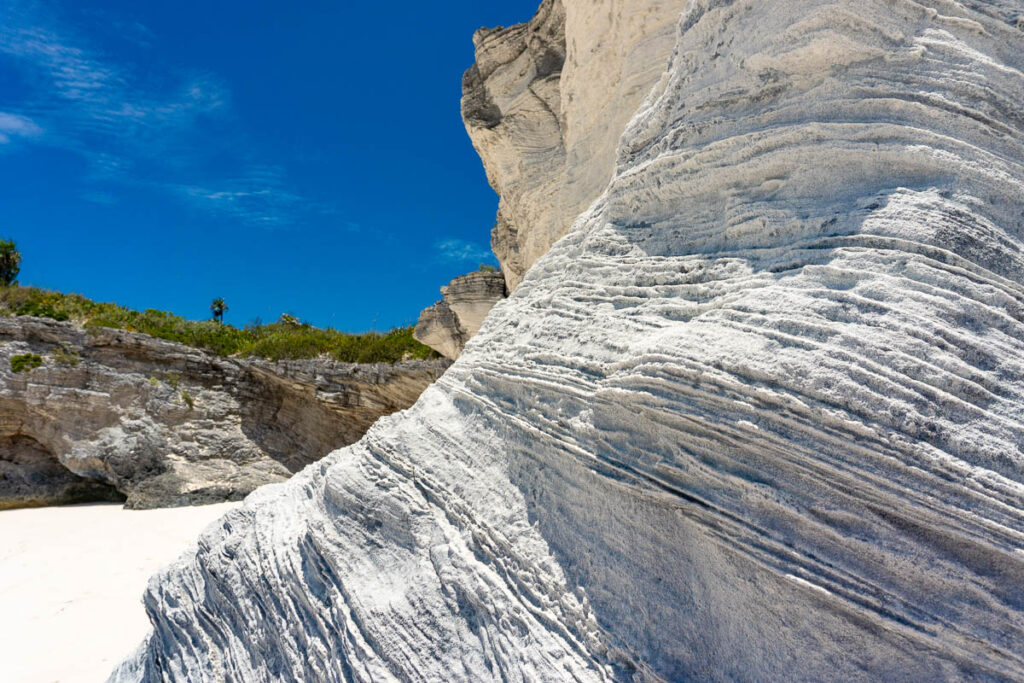

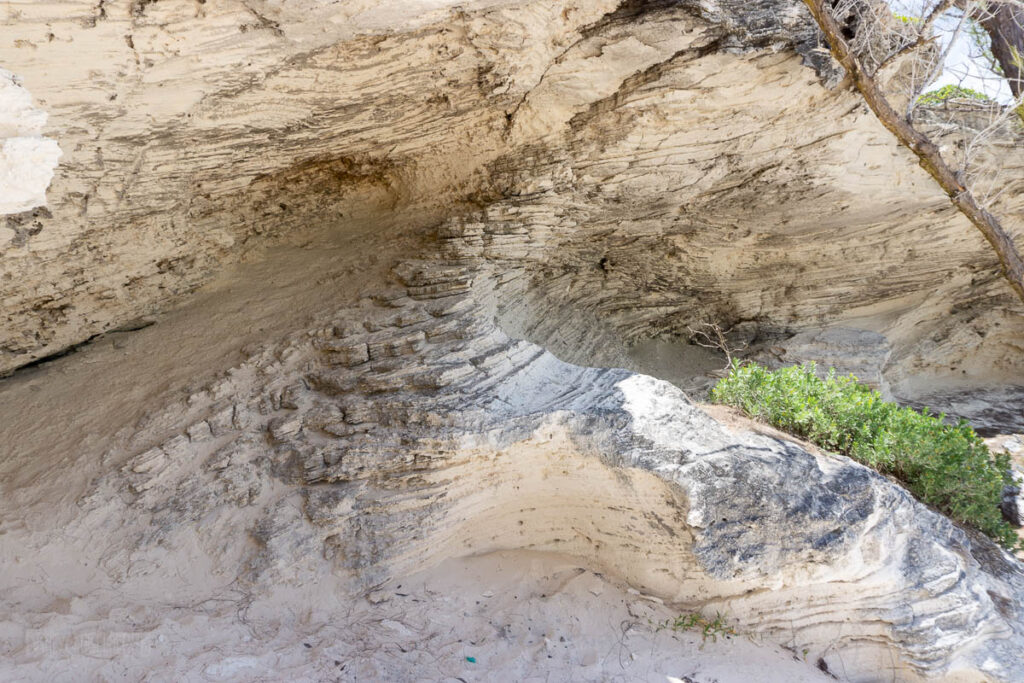
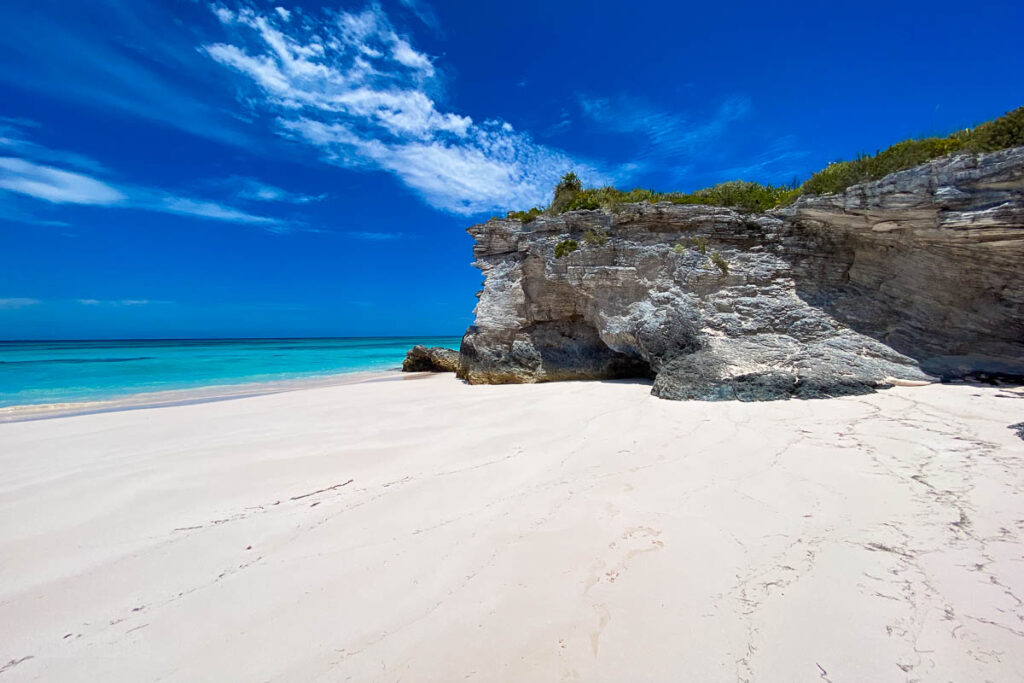
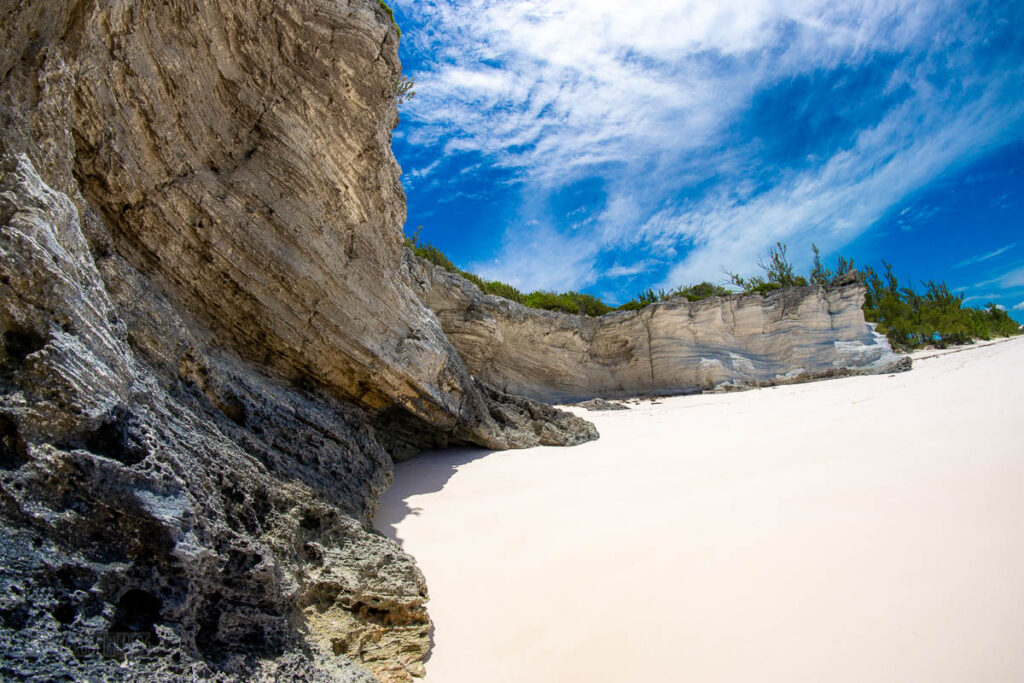
I missed it earlier, and spotted the lighthouse for the first time with the light hidden between some fauna at the top of the cliff.
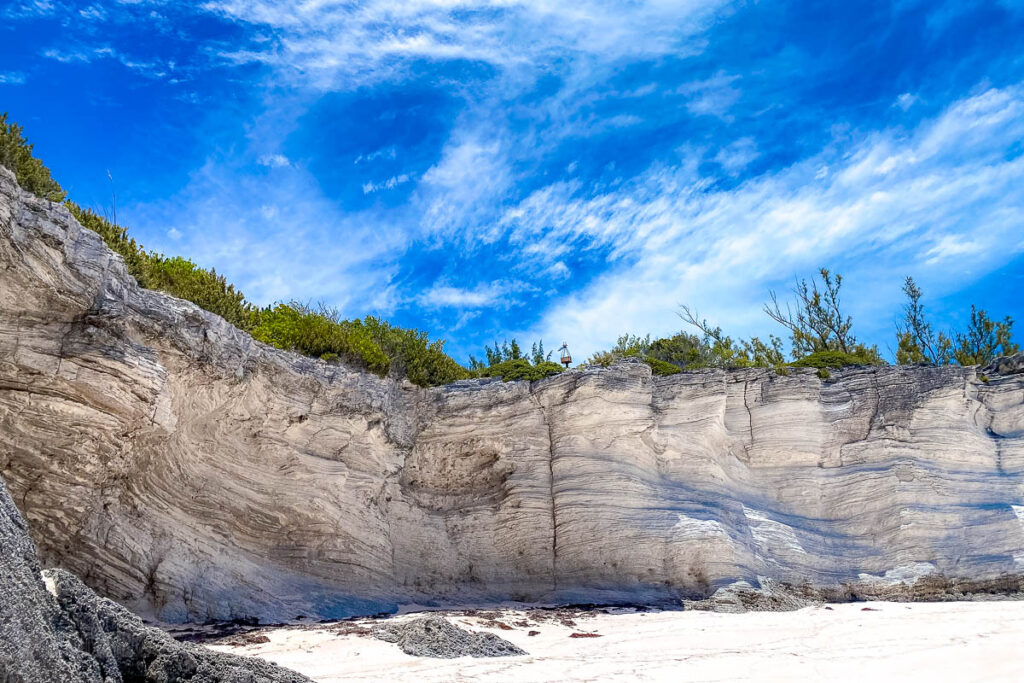
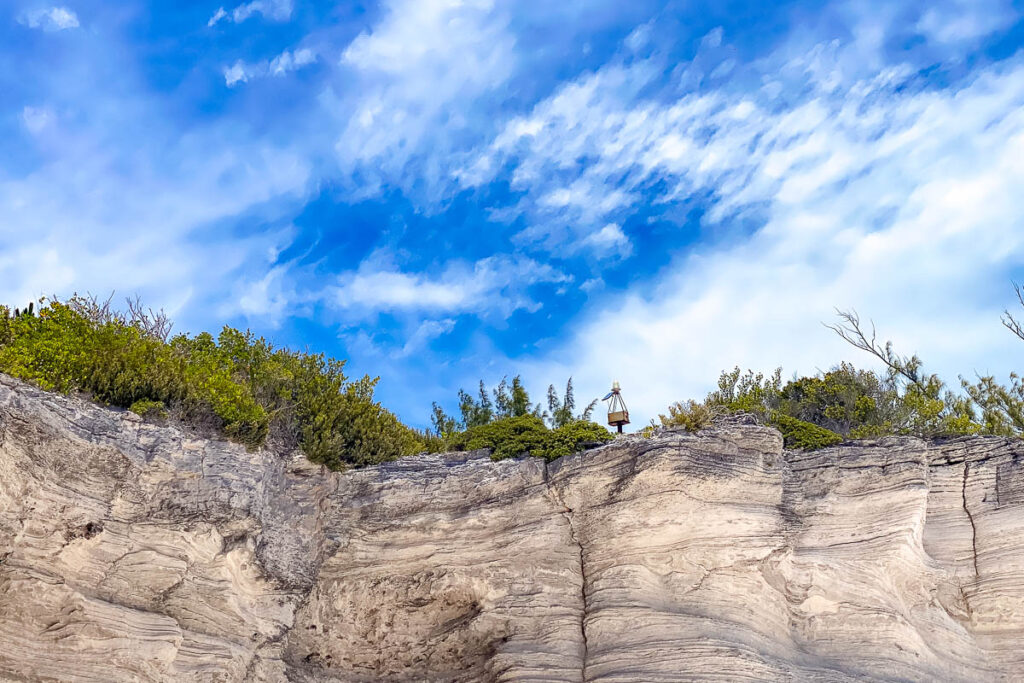

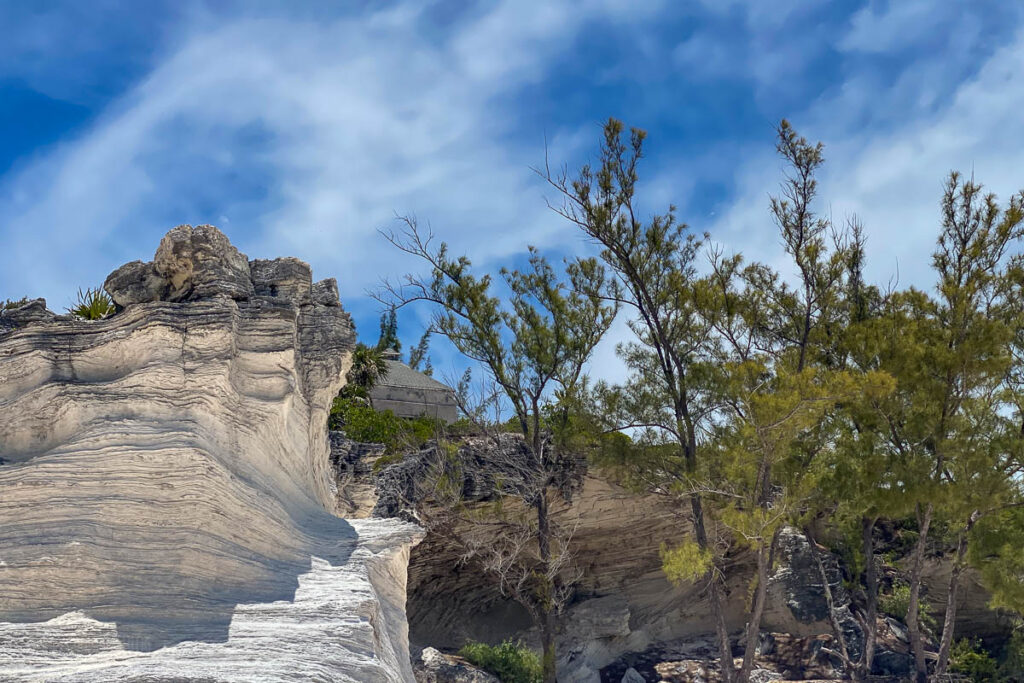
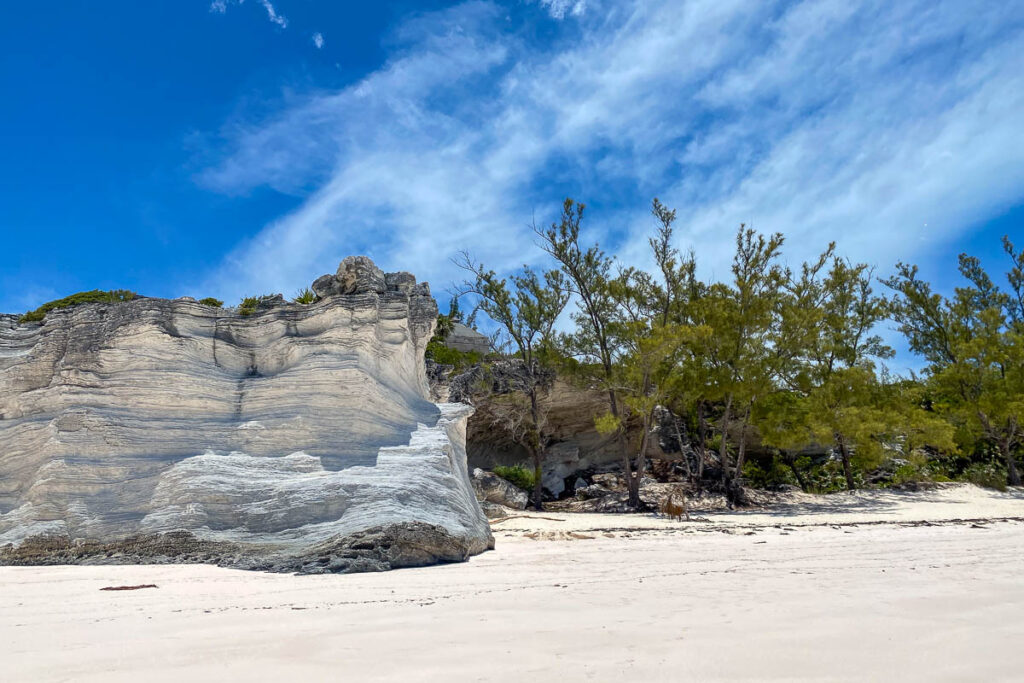
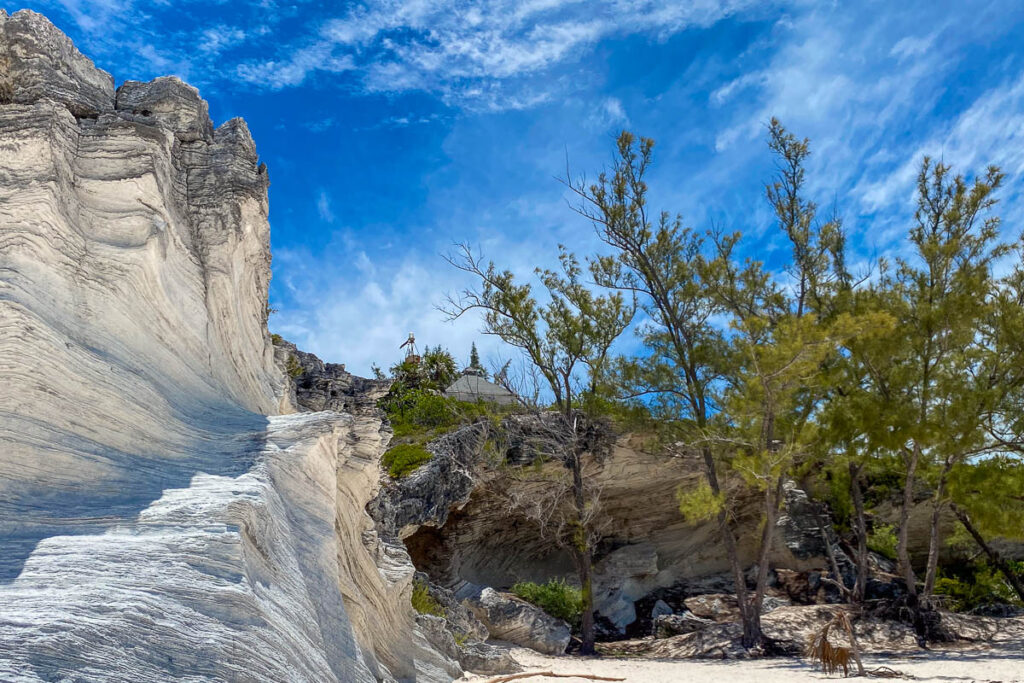
Back on the trail retracing our steps a bit past the limestone cliff area we saw before heading out on the beach.
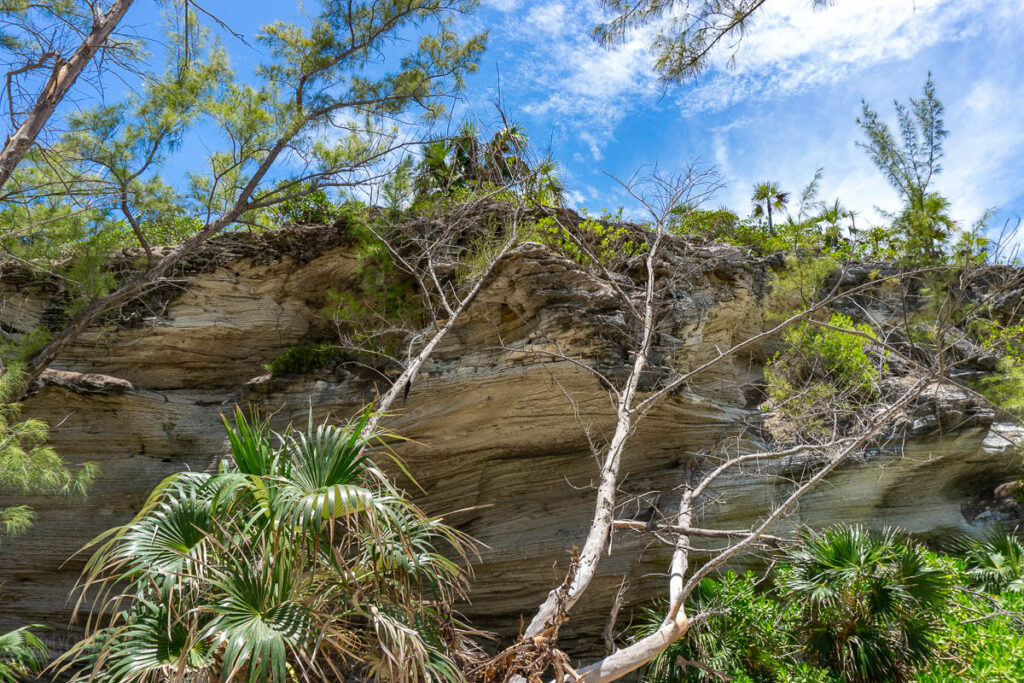
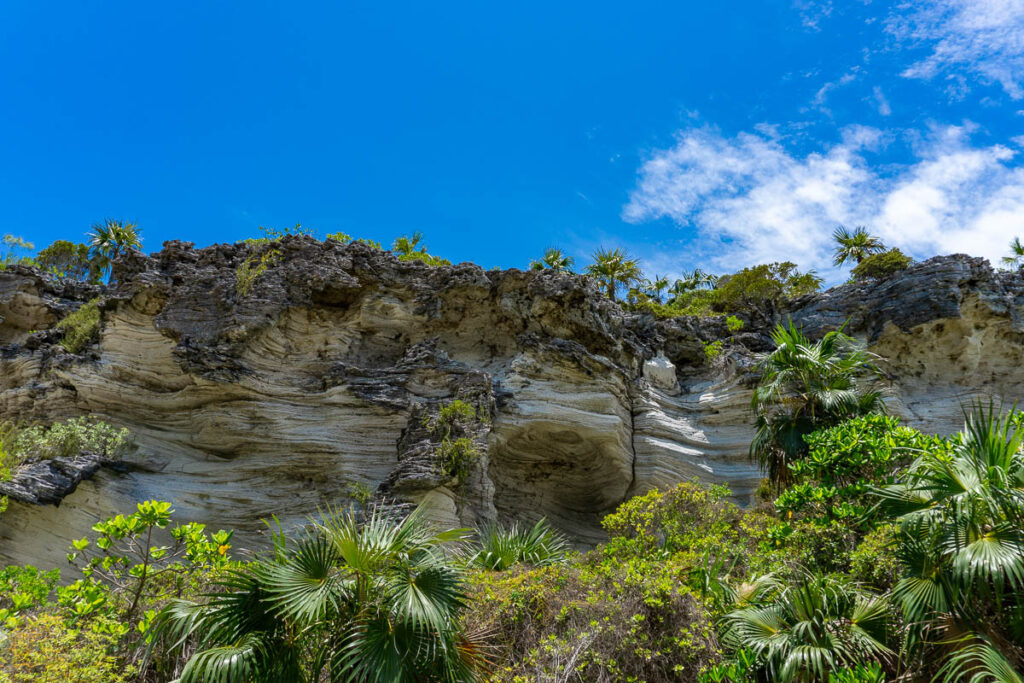
After retracing our steps, we were back to exploring new areas of the nature trail where we spotted a sign for the historic lighthouse!

As you head uphill, you will soon see the light station come into view at the end of the pathway.

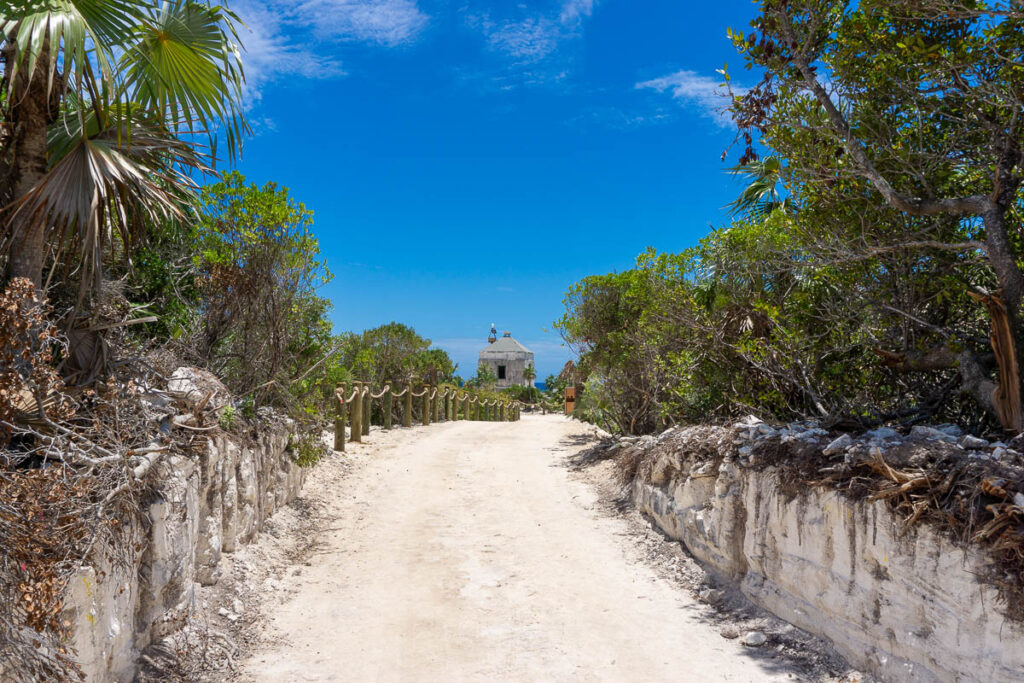
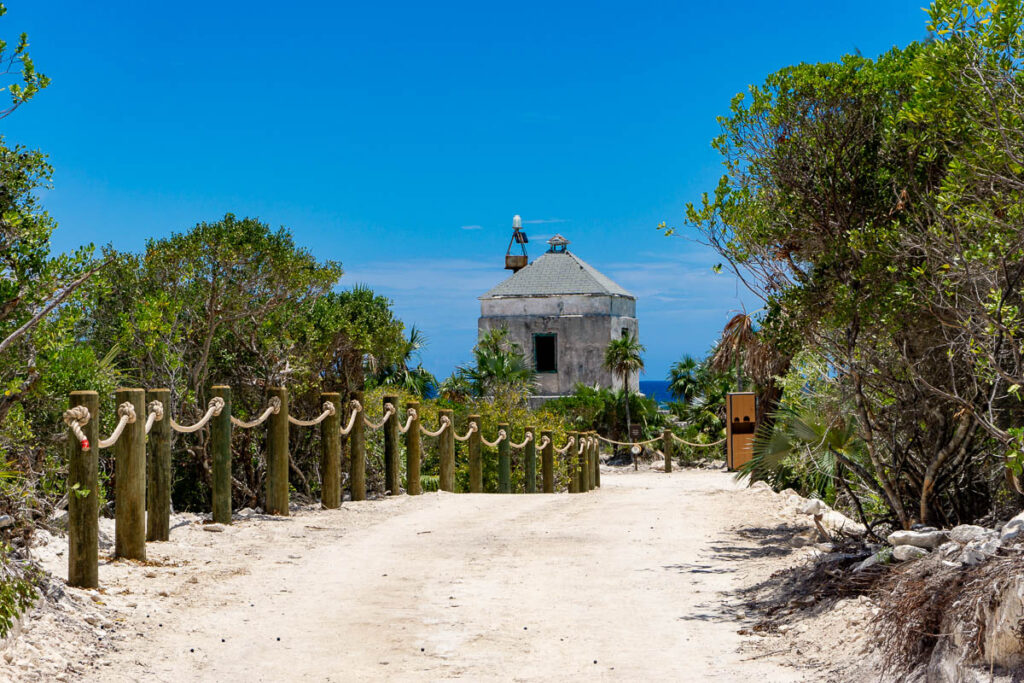

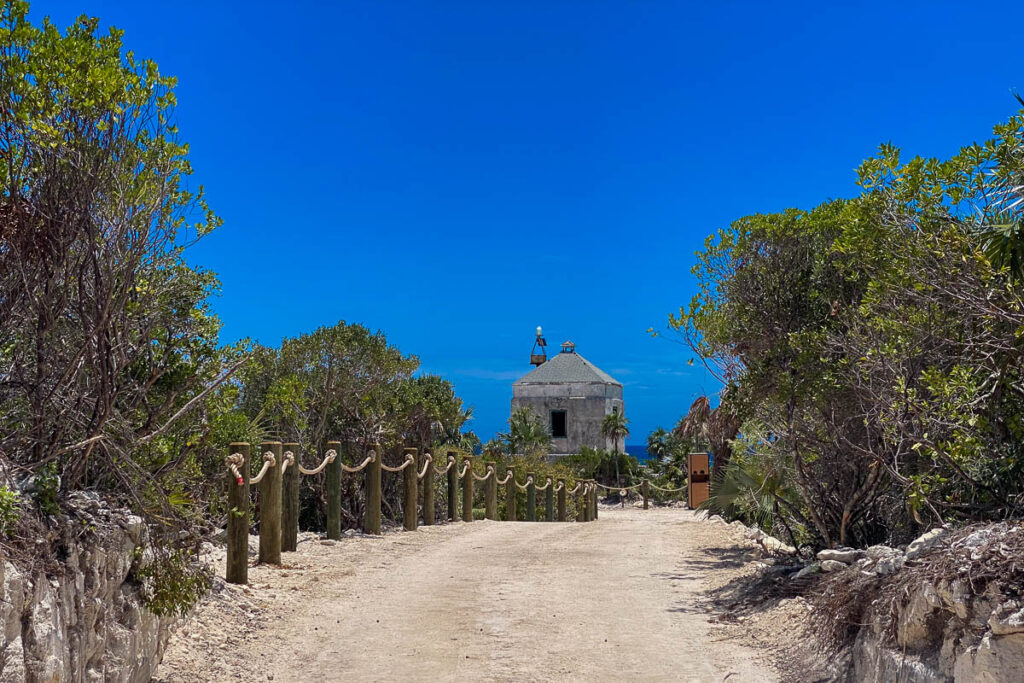
Disney Lookout Cay at Lighthouse Point gets its name from this lighthouse, which has stood watch over the shores of Eleuthera since 1901!
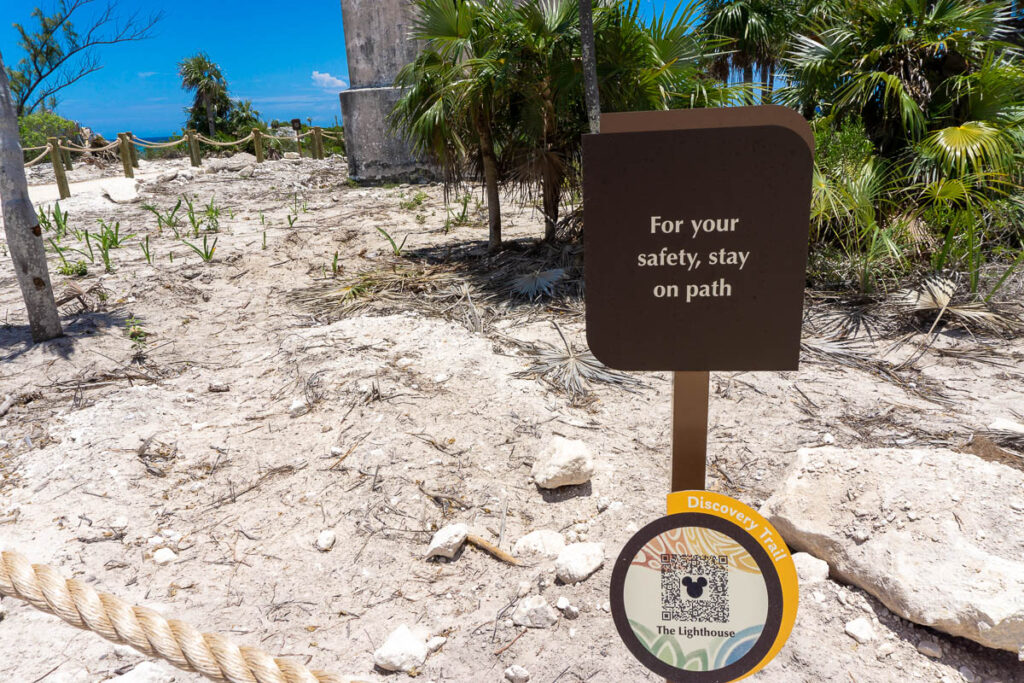
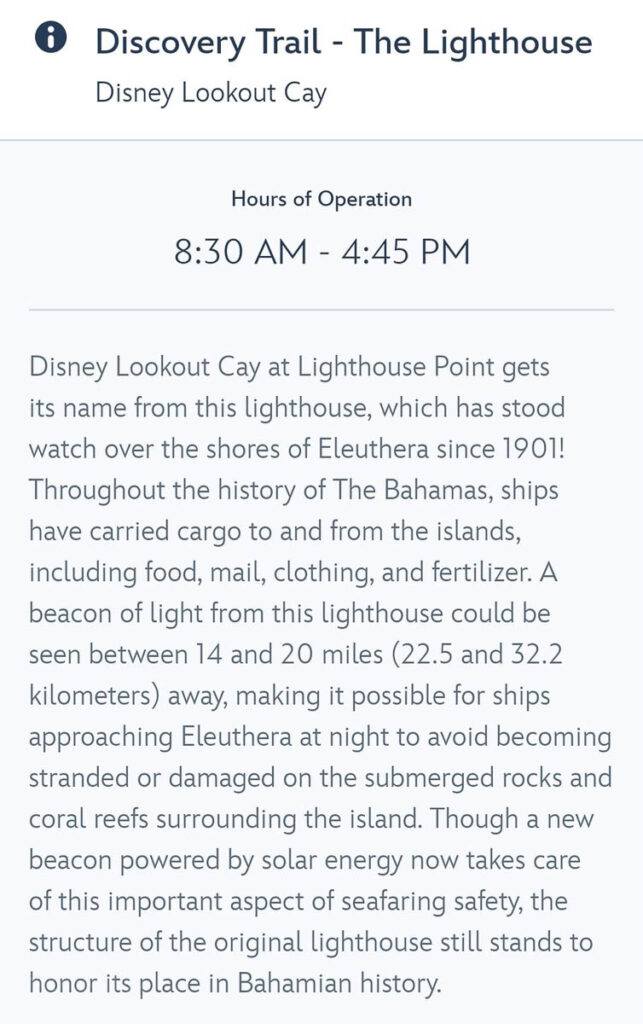

Throughout the history of The Bahamas, ships have carried cargo to and from the islands, including food, mail, clothing, and fertilizer. A beacon of light from this lighthouse could be seen between 14 and 20 miles (22.5 and 32.2 kilometers) away, making it possible for ships approaching Eleuthera at night to avoid becoming stranded or damaged on the submerged rocks and coral reefs surrounding the island.
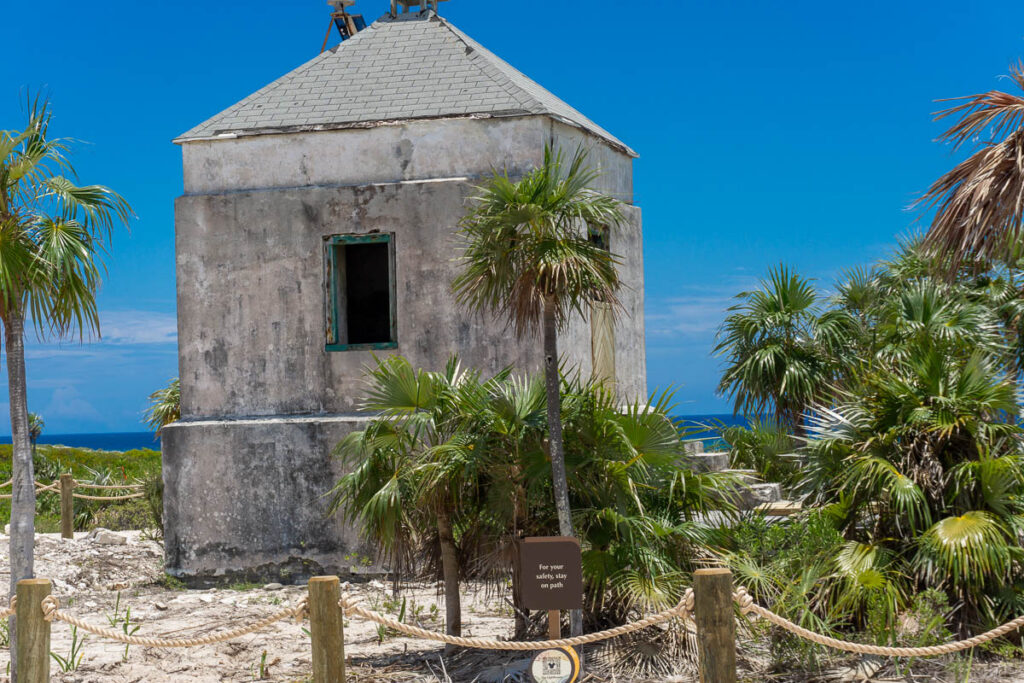
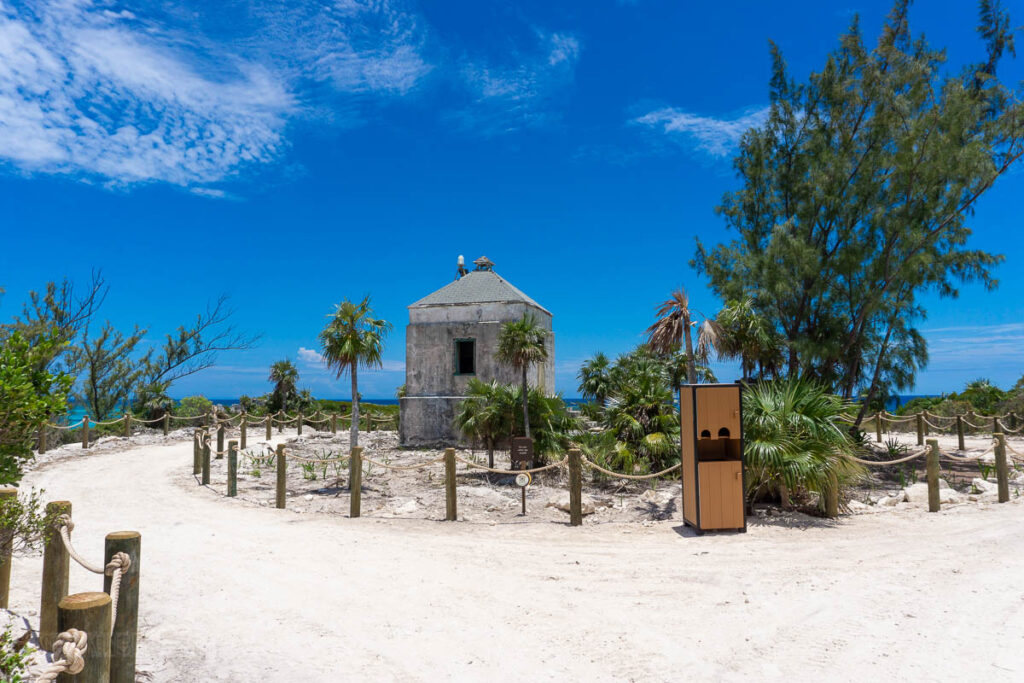
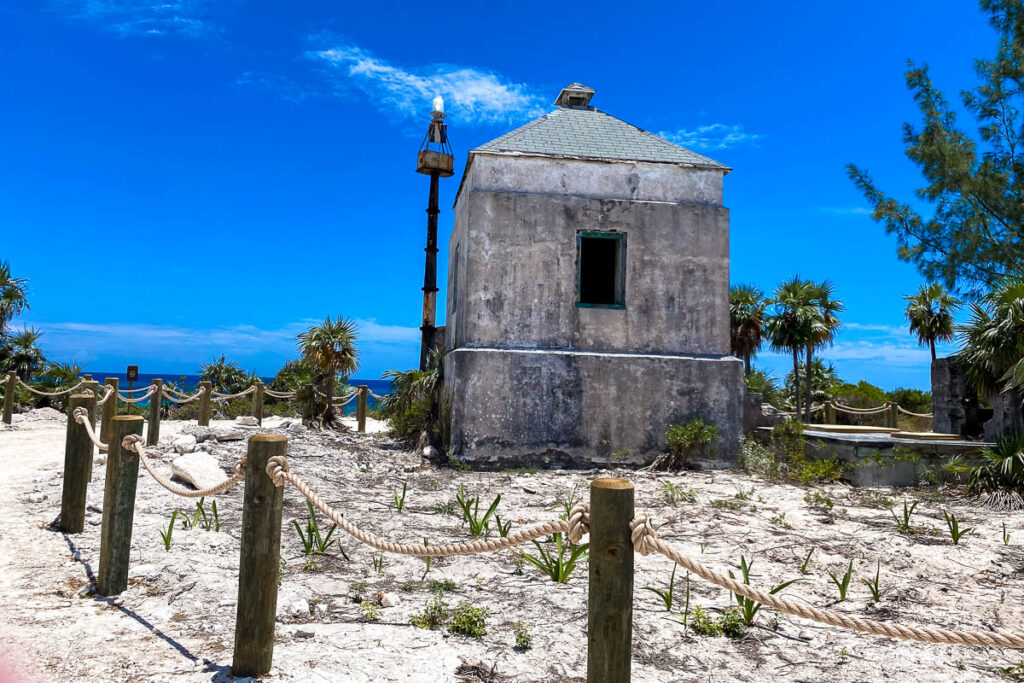
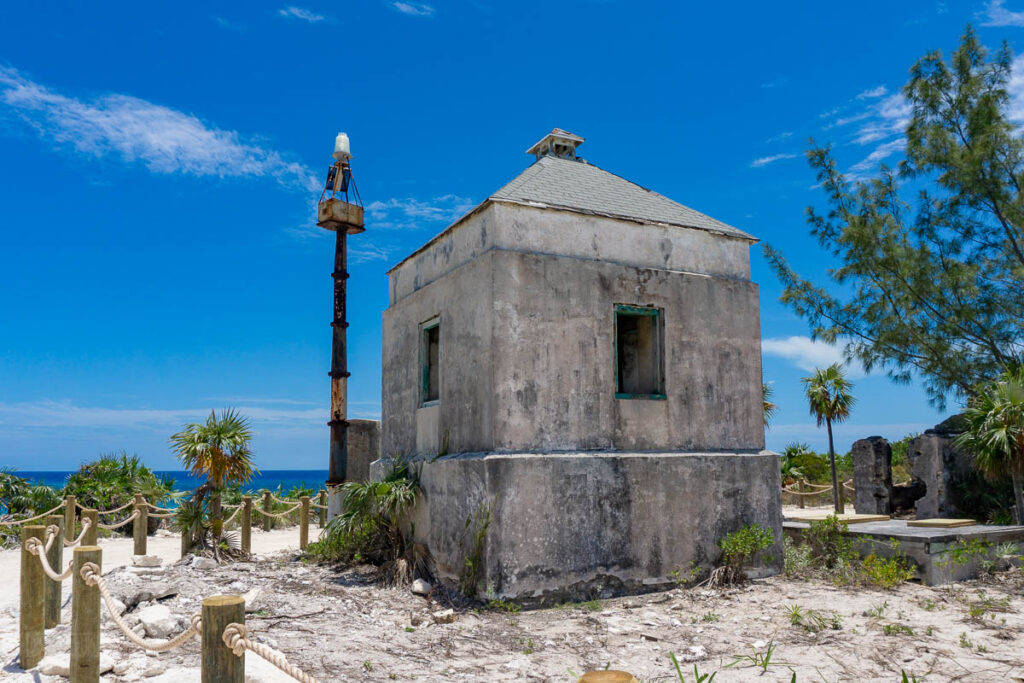
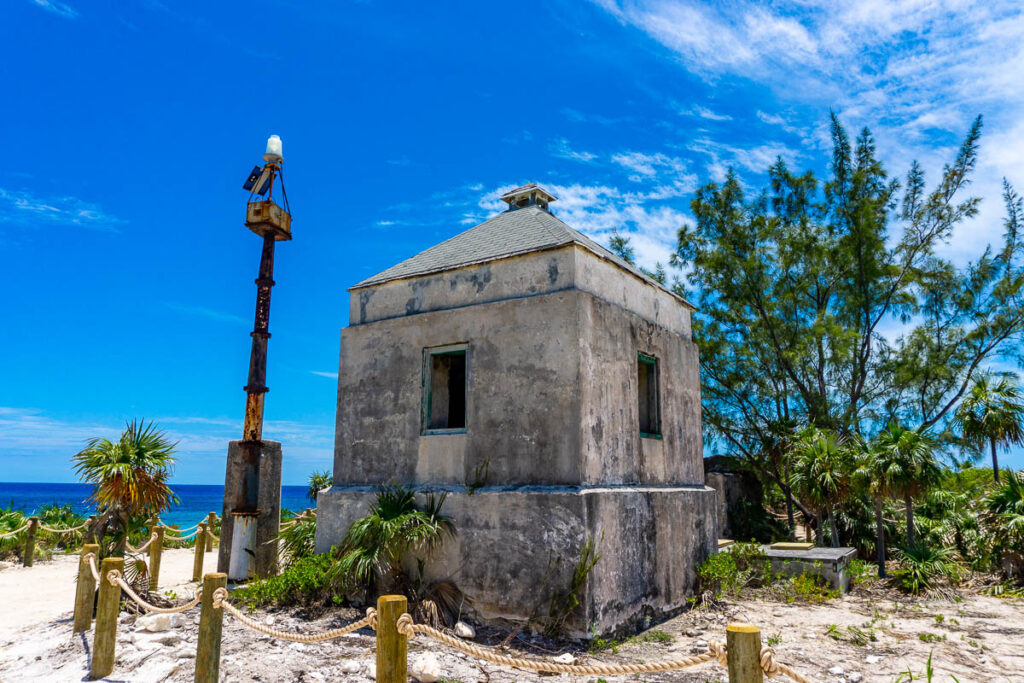
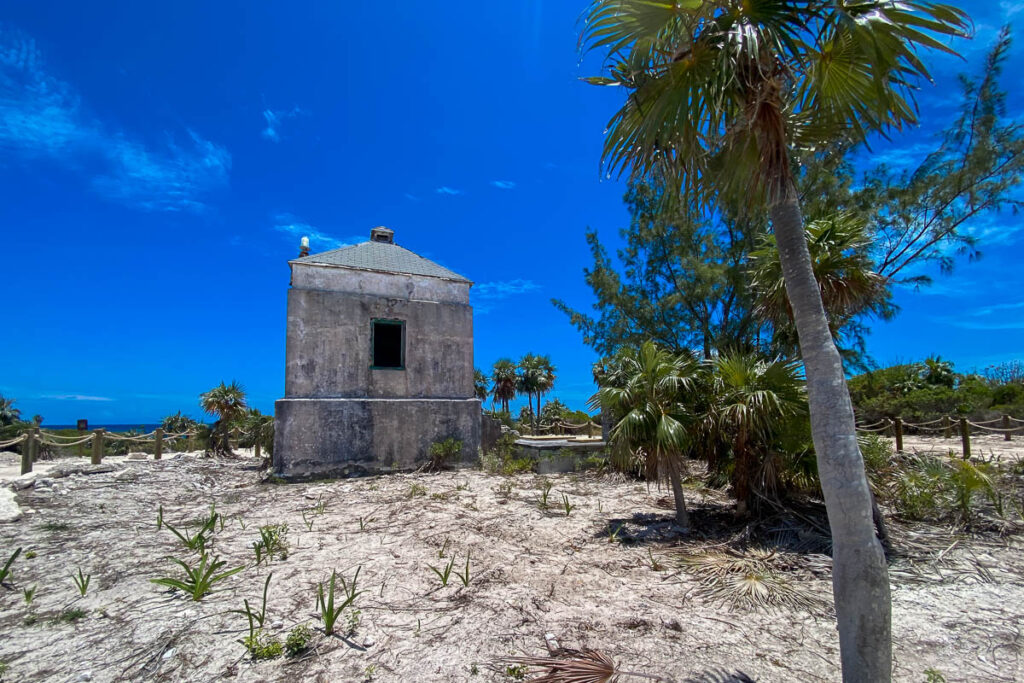

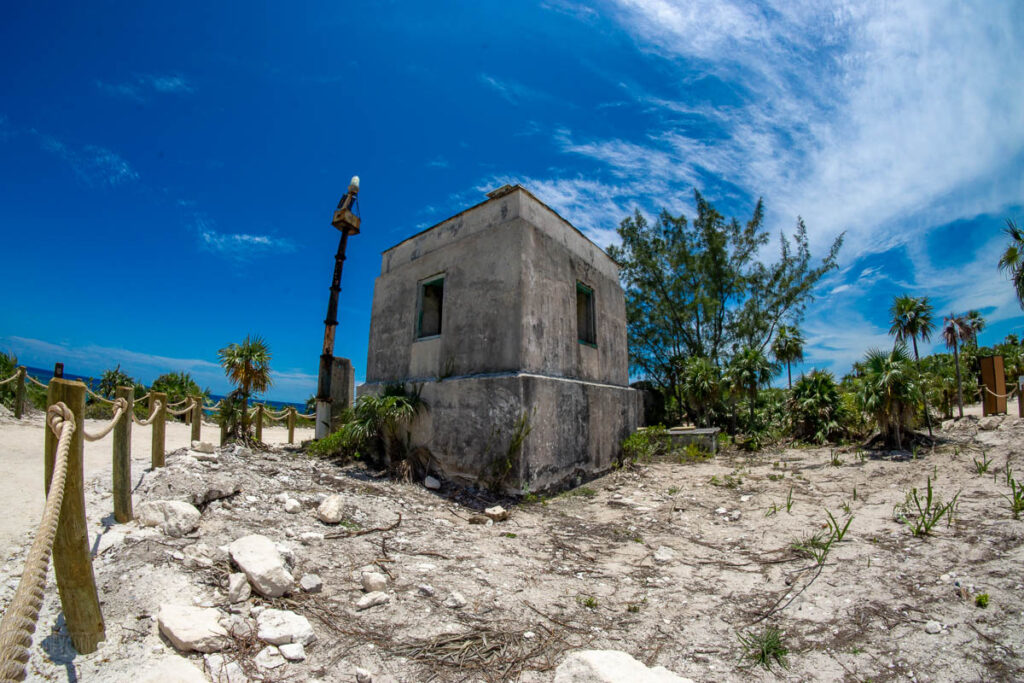
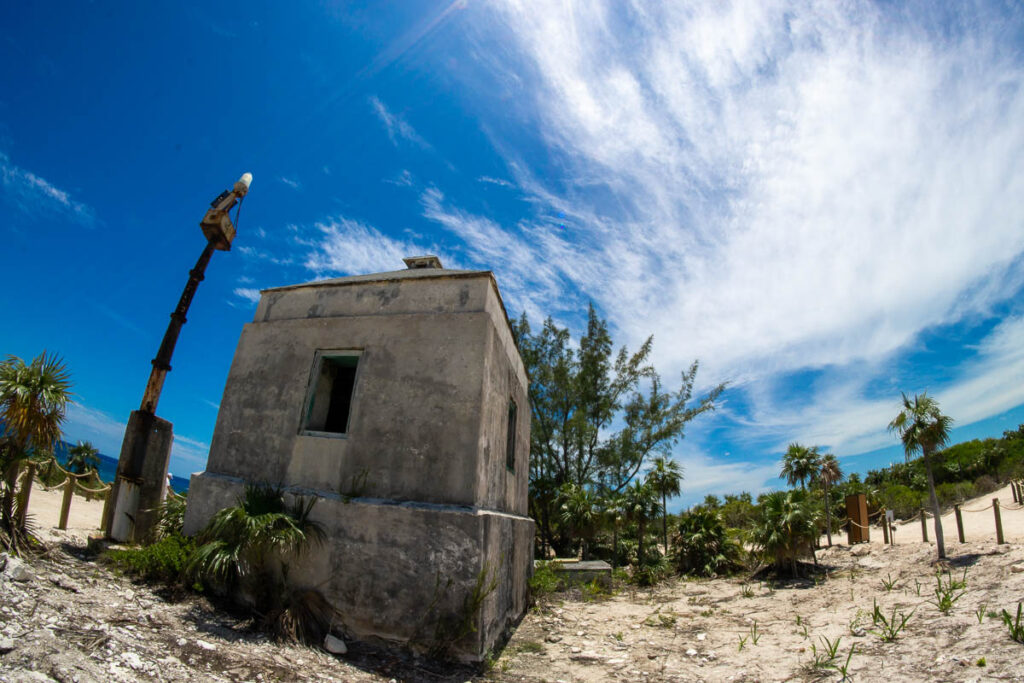
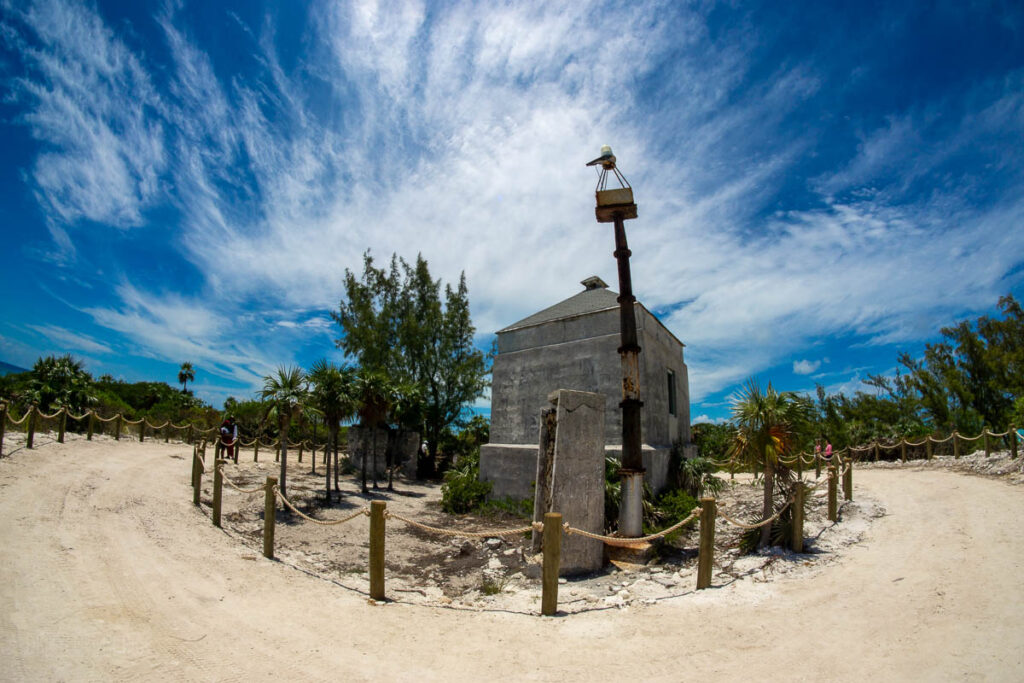

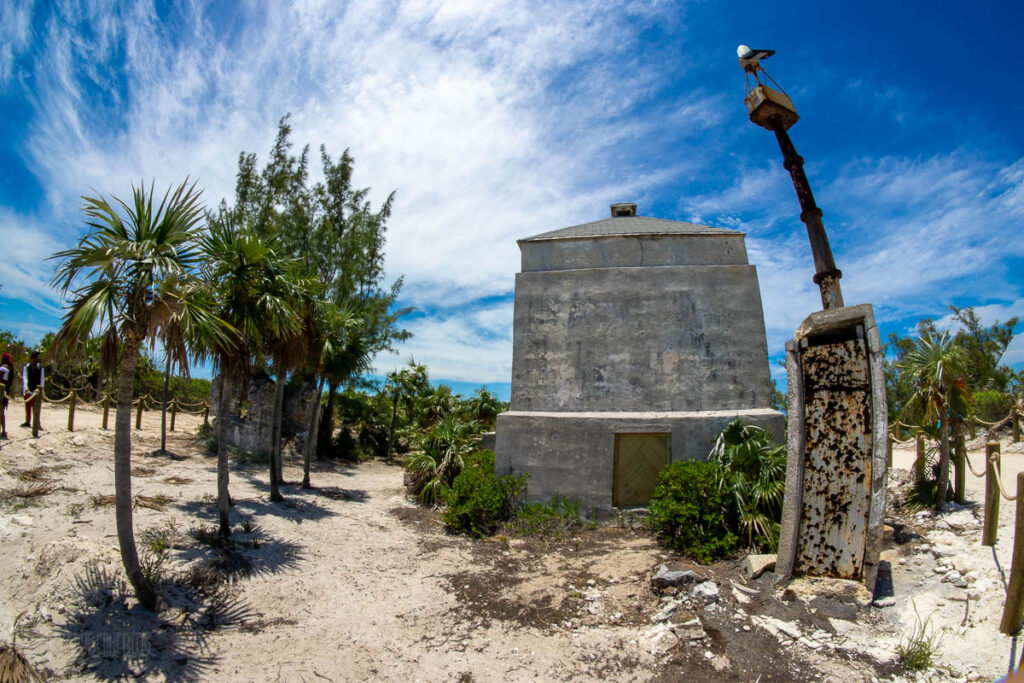
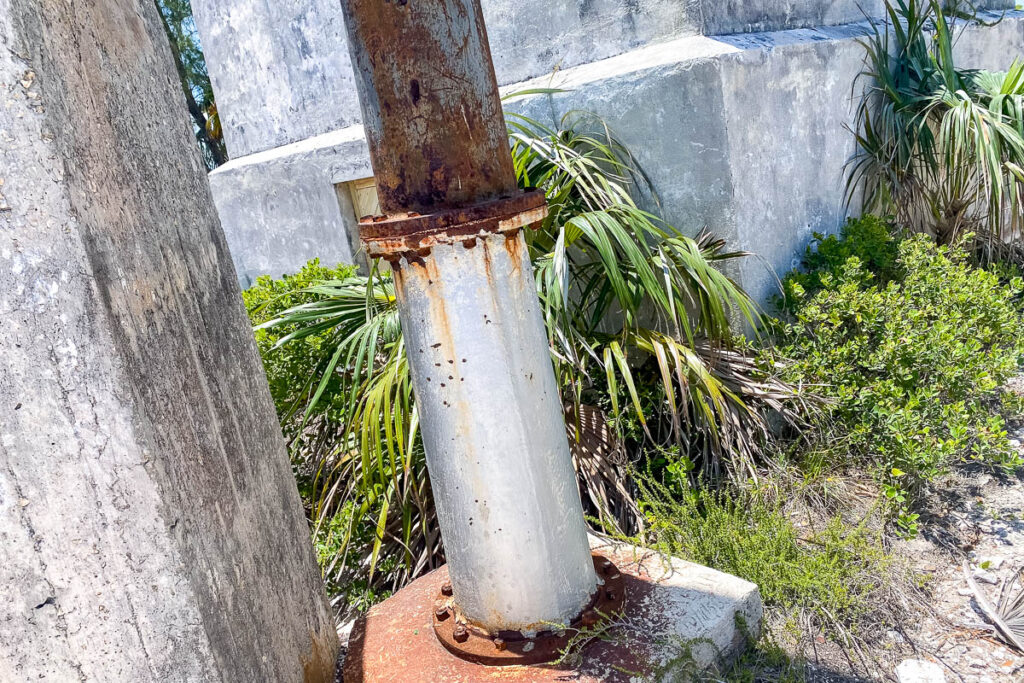
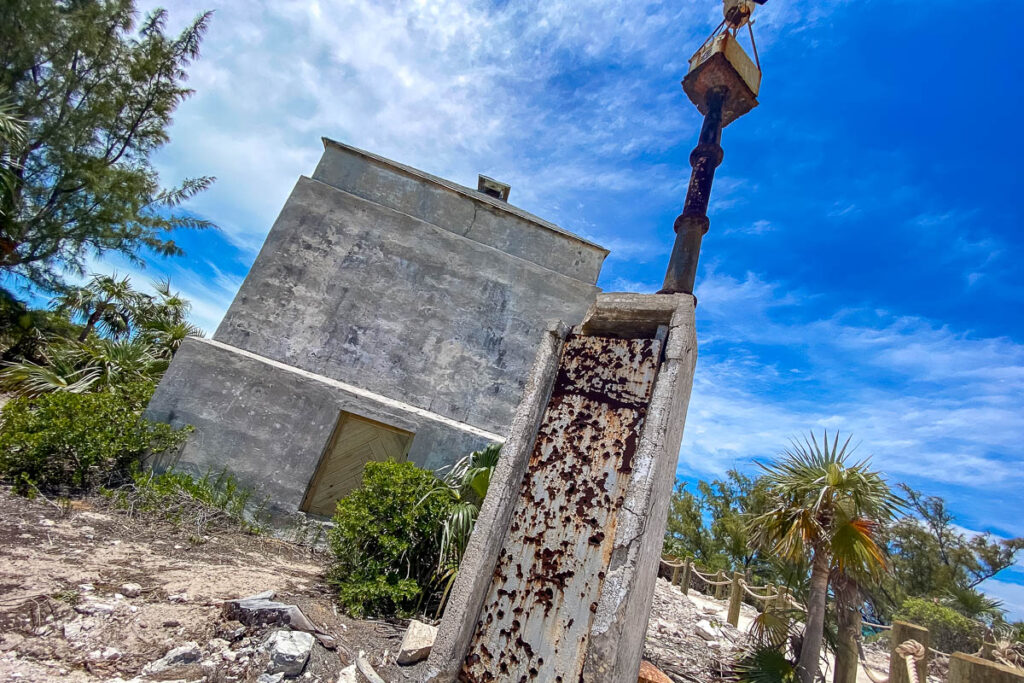
Though a new beacon powered by solar energy now takes care of this important aspect of seafaring safety, the structure of the original lighthouse still stands to honor its place in Bahamian history.
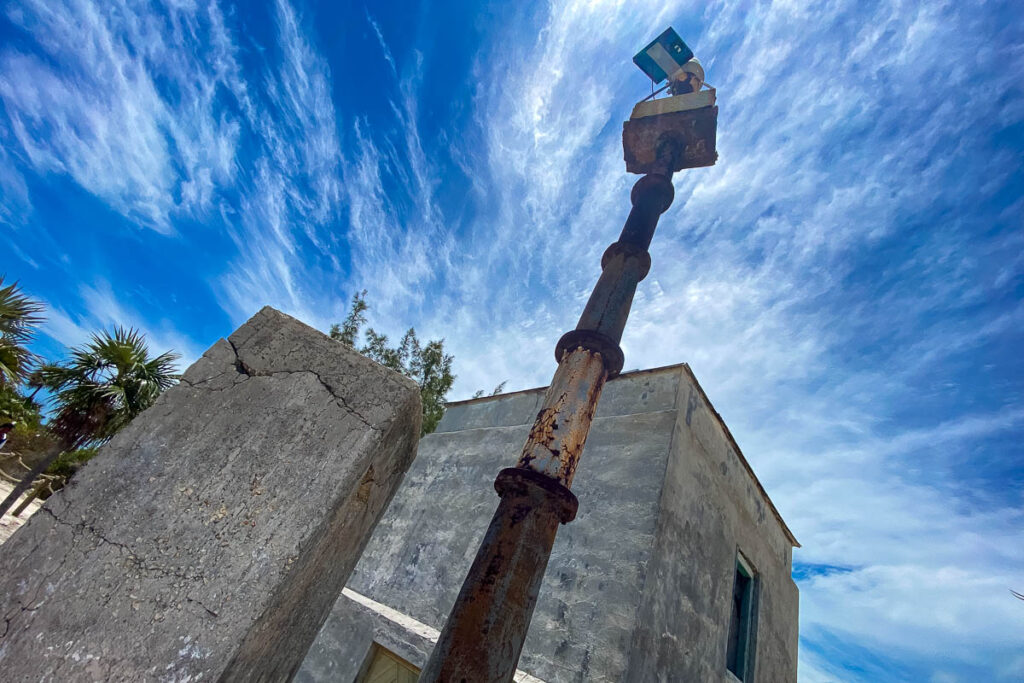
From the lighthouse, you can look out over the southern tip of Eleuthera.
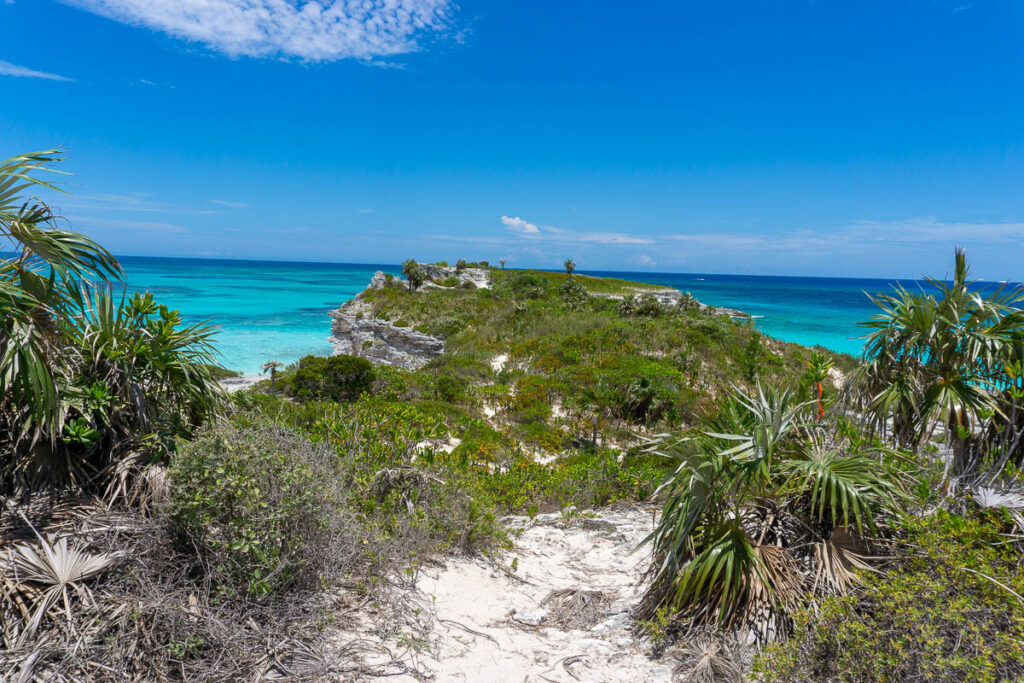
For perspective, this is a historical view of Lighthouse Point looking to the north. The Lighthouse is located on the limestone cliff closest to the beach with the 4 somewhat distinct land masses jutting out between the Exuma Sound on the left and the Atlantic Ocean on the right.
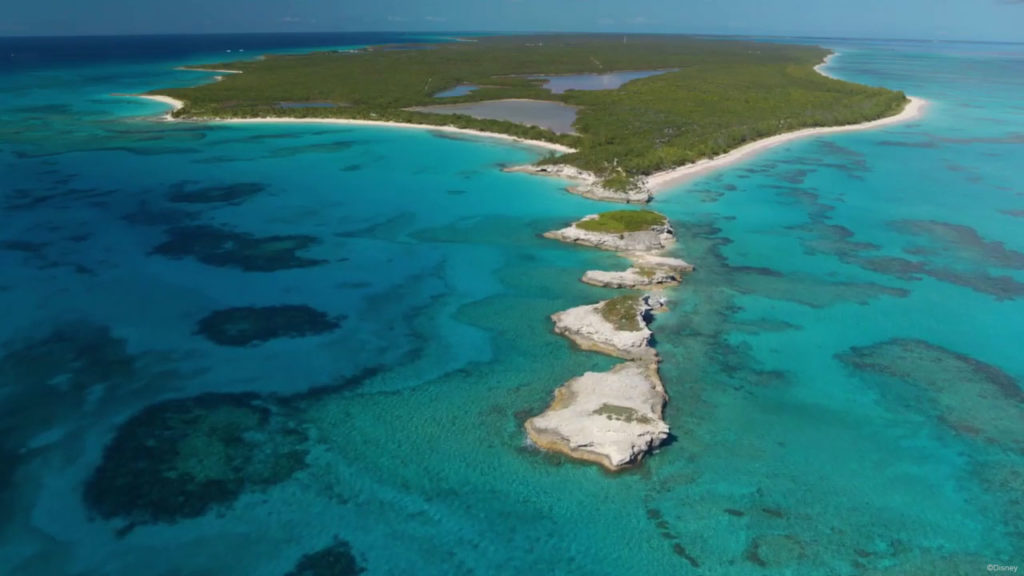
Along the trail, you will see QR codes on signs and part of the information markers. When the QR code is scanned, the Disney Cruise Navigator App will launch and display relevant information. At this time, the QR codes only work while connected to DCL-GUEST wifi network and will not load any information at home. I learned this the hard way.
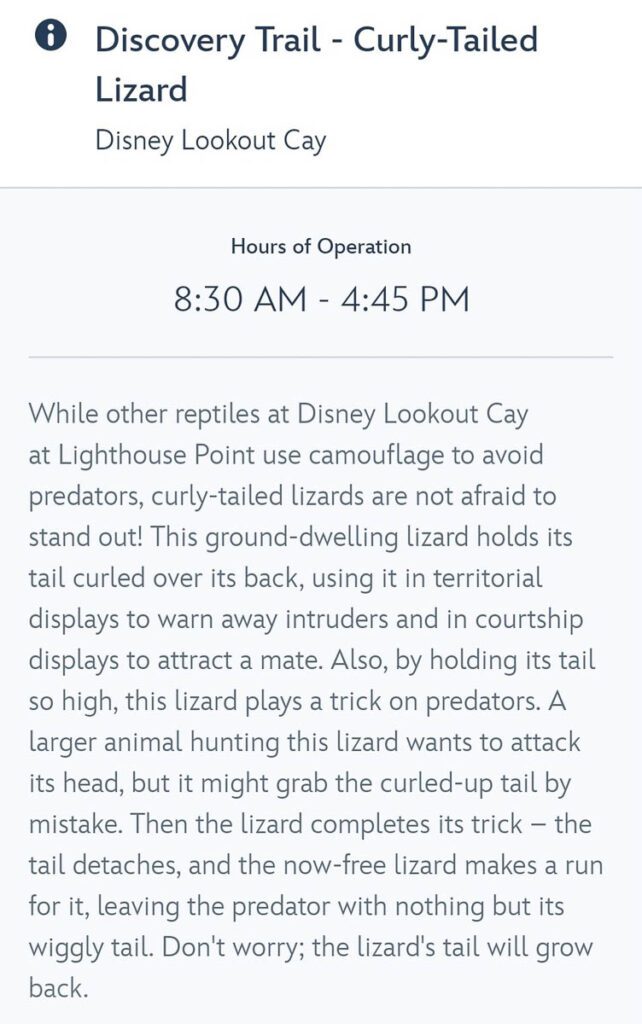
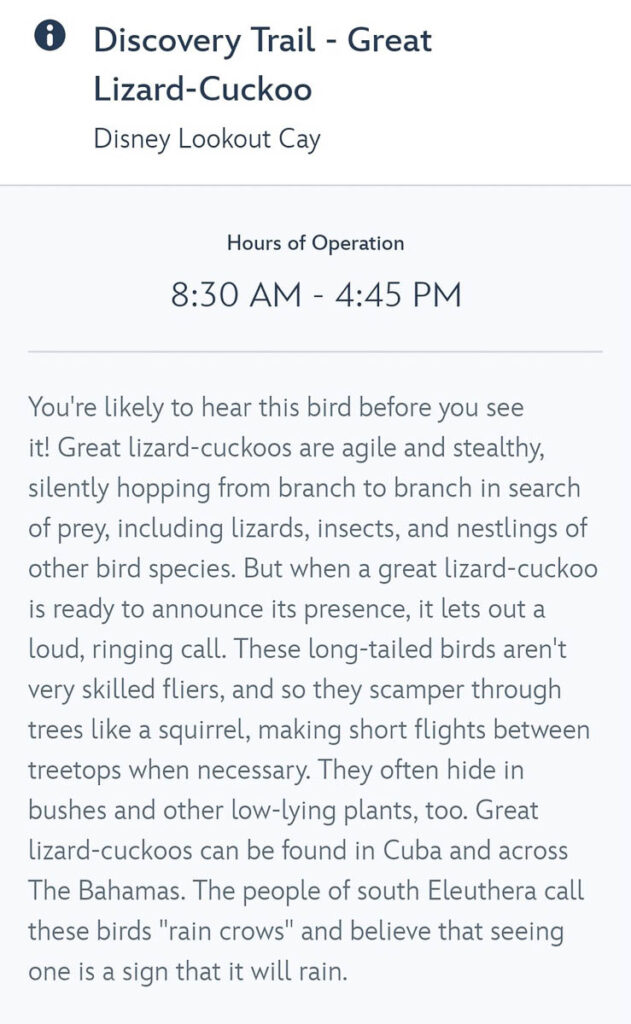
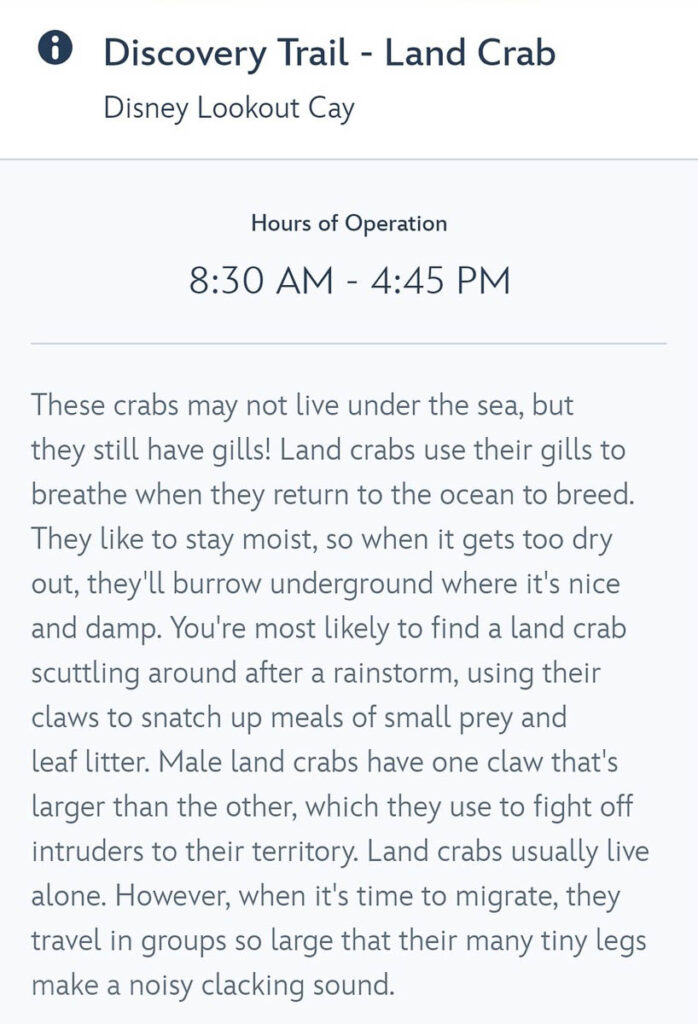
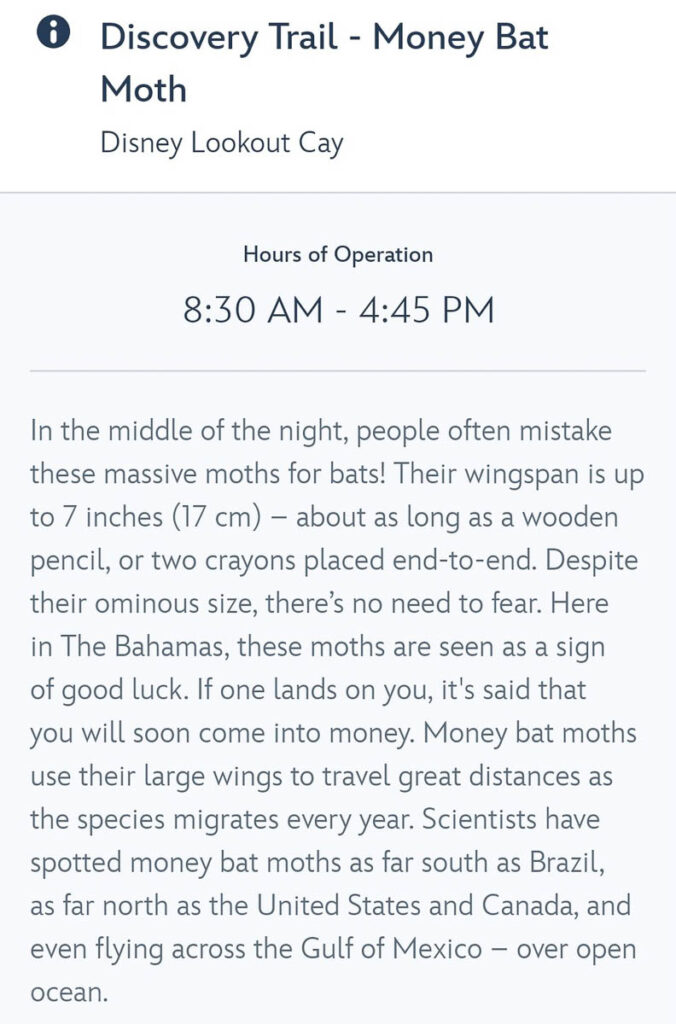
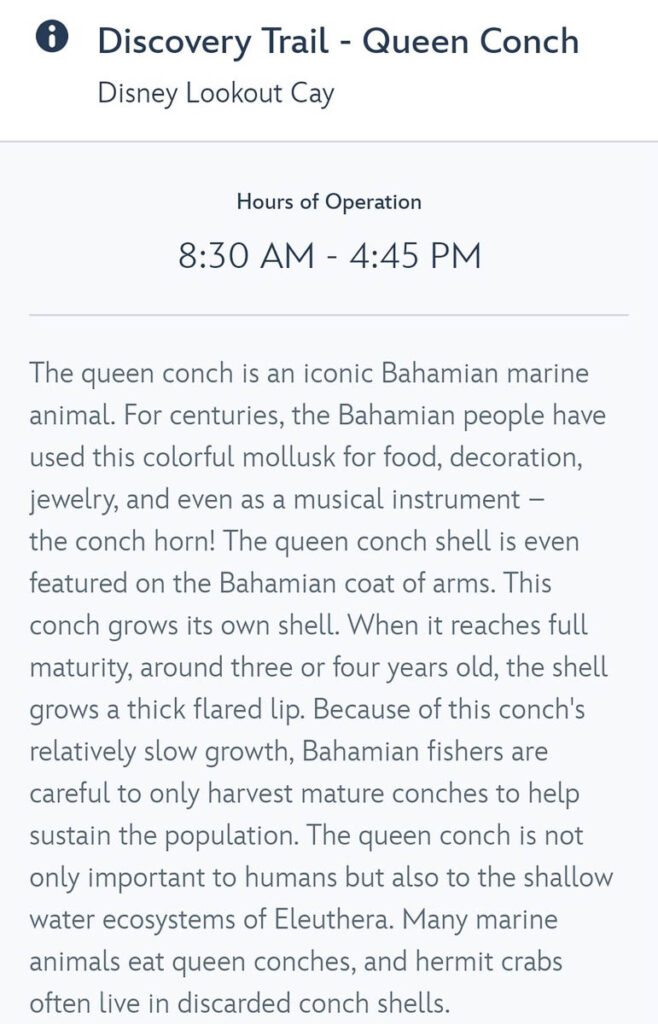
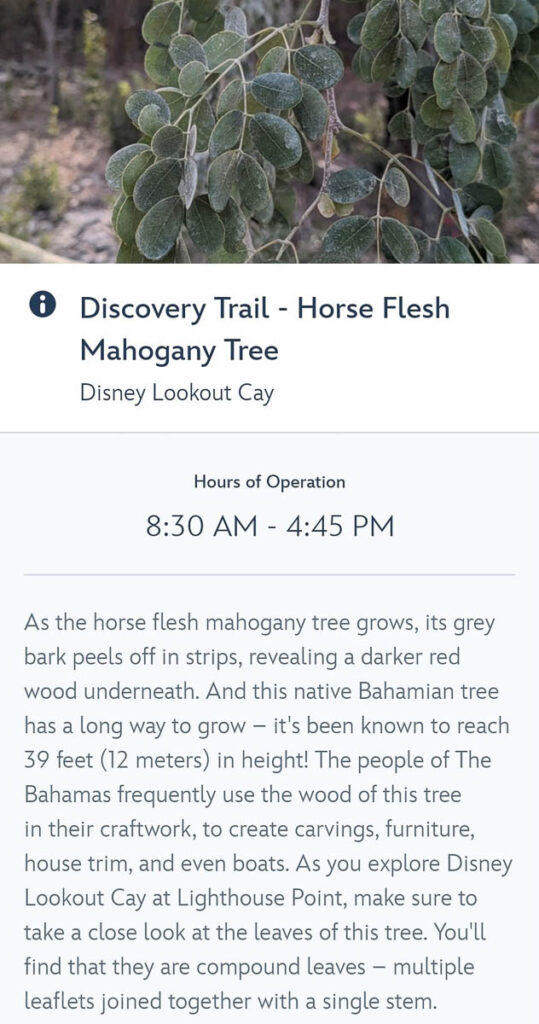
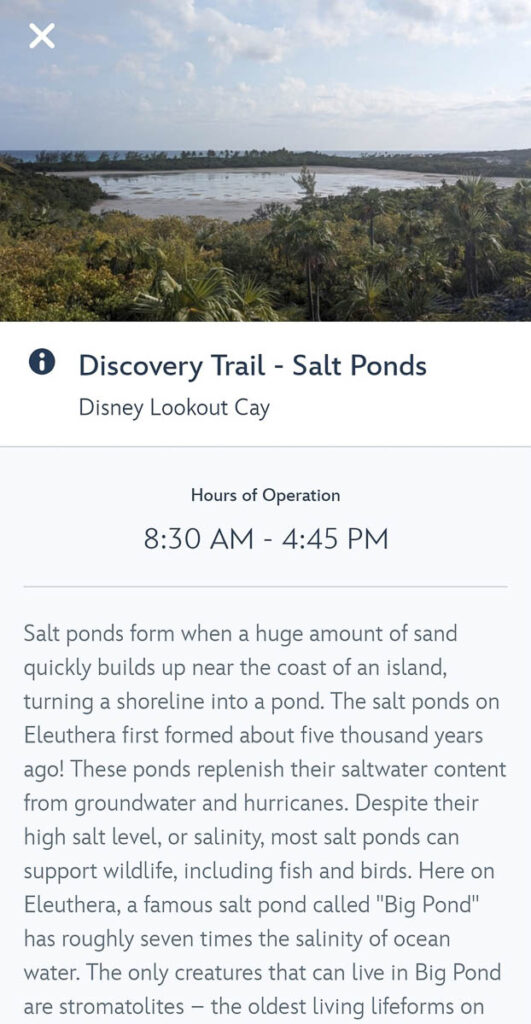
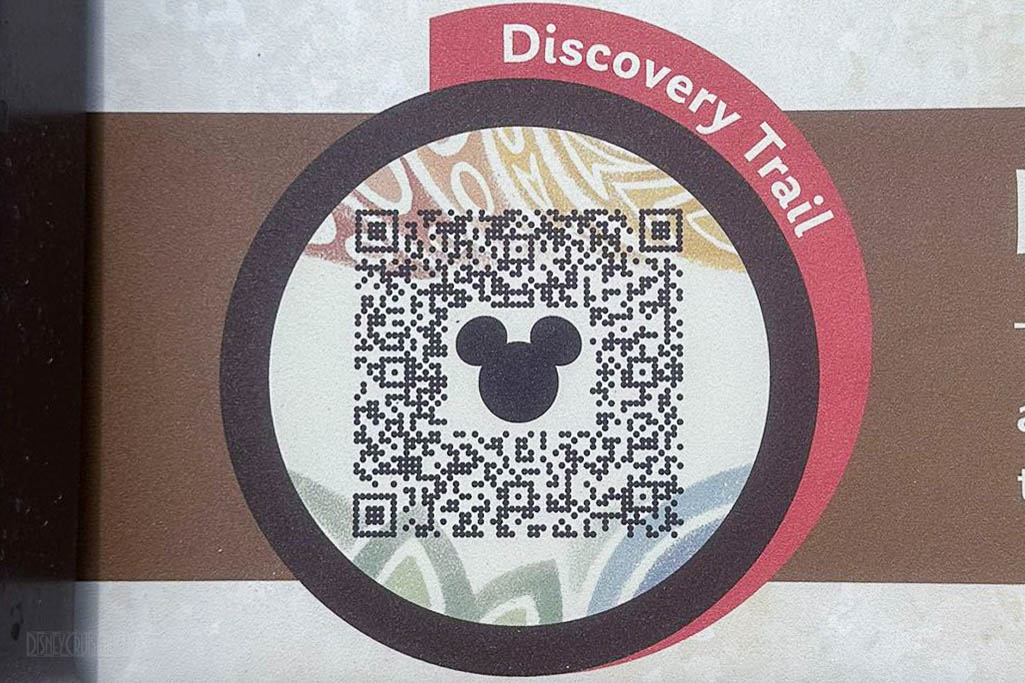

Hopefully, you made it this far in the article. The following is a video of the Nature Trail as it was on June 7, 2024.
This was just a portion of the entire Nature Trail at Disney Lookout Cay at Lighthouse Point, and will constantly evolve as trail cures and the flora matures.

Wow, just Wow. What can we say. Attention to detail. This would be one of the reasons we would visit this stop. Having the opportunity to see this island. We are grateful for the opportunity for deep water dives.
Scott, how long does the trail take (round trip)?